56 African American History Essay Topic Ideas & Examples
🏆 best african american history topic ideas & essay examples, 🔍 good essay topics on african american history, ✅ most interesting african american history topics to write about.
- African American History Timeline (1619 – 1865) As the expansion of the textile factories led irresistibly to a rise in the market for servitude Africans, there was a possibility of a slave insurrection, such as the one that prevailed in Haiti in […]
- African Americans: History and Modernity Most African Americans are descendants of enslaved people brought from Africa, and the research focuses on the connection between the current state of African Americans concerning their history. We will write a custom essay specifically for you by our professional experts 808 writers online Learn More
- History and True Meaning of African American Slave Music The ancestors of African Americans were forcibly separated from their homes and brought to the United States to work on the plantations of the Old South.
- The Series of Injustices Spanned the History of African Americans A series of failures for Americans began with the emergence of slavery in the USA. However, it is impossible to talk about the complete eradication of racism in the country.
- The African American History: The Historical Weight of 1776 A number of us, who arrived unexpectedly, became indentured to Virginia masters through a bidding process that was to some extent similar to later slave auctions that would become all in all widespread in the […]
- Lynching History of African Americans: An Absurd Illegal Justice System in the 19th Century Another attempt to explain the origin of lynch law is that of regulators and moderators. According to Rhodes, this theory is not applicable because the name of the law and order maintenance unit was aregulators’ […]
- African Americans Struggle Against Slavery The following paragraphs will explain in detail the two articles on slavery and the African American’s struggle to break away from the heavy and long bonds of slavery. The website tells me that Dredd Scott […]
- African American History: The Struggle for Freedom The history of the Jacksons Rainbow coalition shows the rise of the support of the African American politicians in the Democratic party.
- African American History in the 20th Century The NAACP was radical since it fought many legal battles and fought against ideologies of some of the most prominent African American leaders like those of the late Booker Washington and the government.
- African American History After Reconstruction The bureau also helped champion African Americans’ rights by pushing for the 14th and 15th amendments of the constitution that would give African Americans voting rights.
- King Jr. and Malcolm X in African American History Malcolm was able to sell his ideas to the African Americans in various meetings in the streets of Harlem and in major universities across the United States.
- Robert R. Moton’s Role in African American History In conclusion, this article has helped to get a better understanding of the topic and what events took place at that time.
- History of Higher Education for African Americans Even if I had the opportunity to participate in higher education, I could not have managed to take advantage of it since it was expensive, and I would have nothing to eat after school.
- African American History and Its Importance in Modern Days Without a clear understanding of this part of history, slavery would not have evolved to the current citizenship, freedom and human rights that we enjoy in our constitution.
- History of African Americans The readings that are going to be discussed in the paper tell the history of African Americans, their struggles for civil rights, and their integration into the social and political life of the country.
- Perspectives in African American History and Culture The point is that a person has both, mind and body, and if a person could not accept the idea of being enslaved, he/she was not a slave.
- The History of the Black Lives Matter Movement
- African American History: 1865 to the Present
- The Black History Month: The Importance of Black History
- Overview of African American History and Culture
- African American History: Religious Influences 1770 – 1831
- The Brief History of Black Nationalism
- Who Is Considered the Father of Black History
- African American History: Tribute to Sojourner Truth
- Ame and Ame Zion Churches in African American History
- Black Slaveowners in African American History
- Capitalism and Its Impact on African American History
- Education of All Perspectives of the African American History
- Changes Brewing for African American History
- Exploring African American History: The Harlem Renaissance
- Impact of the African American History on African Americans
- The Concept of Freedom in African American History
- How Does African American History Differ From Others
- African American History and “Warmth of Other Suns”
- How the 2008 Election Affected African American History
- Irene Gomez-Leon: African American History
- History of Black Wall Street ‘Little Africa’
- African American History Before 1877: Main Events and Figures
- Language Awareness: The N-Word in African American History
- Slavery and Its Significance in the African American History
- African American History During the Antebellum Period
- The Impact of the Civil War on African American History
- Analysis of Why African American History Is Important
- African American History Figure: Matthew Alexander Henson
- The Impact of Black Soldiers on American History
- The Origins and Importance of Black History Month
- Black Nationalism in African American History
- Analysis of Arguments Against Black History Month
- The Advantages and Disadvantages of Black History
- Brief History of Black Males in American Society
- Racism Enacted Throughout the History of Black Films
- The History of Harlem – Cultural Epicenter of America’s Black Community
- African American Youth and Their Lack of Interest in Black History Month
- Dark History of Medical Experimentation on Black Americans from Colonial Times
- Underrated and Unwritten Black History Heroes: John Carlos and Tommie Smith
- The Connotation of African-American History and Black History
- Chicago (A-D)
- Chicago (N-B)
IvyPanda. (2024, March 2). 56 African American History Essay Topic Ideas & Examples. https://ivypanda.com/essays/topic/african-american-history-essay-topics/
"56 African American History Essay Topic Ideas & Examples." IvyPanda , 2 Mar. 2024, ivypanda.com/essays/topic/african-american-history-essay-topics/.
IvyPanda . (2024) '56 African American History Essay Topic Ideas & Examples'. 2 March.
IvyPanda . 2024. "56 African American History Essay Topic Ideas & Examples." March 2, 2024. https://ivypanda.com/essays/topic/african-american-history-essay-topics/.
1. IvyPanda . "56 African American History Essay Topic Ideas & Examples." March 2, 2024. https://ivypanda.com/essays/topic/african-american-history-essay-topics/.
Bibliography
IvyPanda . "56 African American History Essay Topic Ideas & Examples." March 2, 2024. https://ivypanda.com/essays/topic/african-american-history-essay-topics/.
- Abraham Lincoln Topics
- Black Lives Matter Topics
- American Revolution Topics
- Civil Rights Movement Questions
- Apartheid Essay Topics
- Discrimination Essay Titles
- Colonization Essay Ideas
- Civil War Titles
- Federalism Research Ideas
- Colonialism Essay Ideas
- History Topics
- Slavery Ideas
- Hard Work Research Topics
- Human Trafficking Titles
- Native American Questions

Black History Essay Topics
- Writing Essays
- Writing Research Papers
- English Grammar
- M.Ed., Education Administration, University of Georgia
- B.A., History, Armstrong State University
Black history is full of fascinating stories, rich culture, great art, and courageous acts that were undertaken within unthinkable circumstances. While Civil Rights events are the most common themes in our studies, we should resist equating Black history only with Civil Rights-era history. This list contains 50 prompts that might lead you into some interesting and little-known information about Black American history.
Note: Your first challenge in studying some of the topics below is finding resources. When conducting an internet search, be sure to place quotation marks around your search term (try different variations) to narrow your results.
- Black American newspapers
- Black Inventors
- Black soldiers in the American Revolution
- Black soldiers in the Civil War
- Buffalo Soldiers
- Buying time
- Camp Logan Riots
- Clennon Washington King, Jr.
- Coffey School of Aeronautics
- Crispus Attucks
- Domestic labor strikes in the South
- Finding lost family members after emancipation
- First African Baptist Church
- Formerly enslaved business owners
- Freedom's Journal
- Gospel music
- Gullah heritage
- Harlem Hellfighters
- Harlem Renaissance
- Harriet Tubman
- Historically Black Colleges
- History of rock-and-roll
- Jumping the broom
- Manumission papers
- Maroon villages in the eighteenth century
- Motown Records
- Multi-cultural pirate ships
- Narratives by Enslaved People
- Otelia Cromwell
- Ownership of property by enslaved people
- Purchasing freedom
- Ralph Waldo Tyler
- Register of Free Persons of Color
- Secret schools in antebellum America
- Sherman's March followers
- Susie King Taylor
- The Amistad
- The Brotherhood of Sleeping Car Porters
- The Communist Party (involvement)
- The Great Migration
- The Haitian Revolution
- Tuskegee Airmen
- Underground Railroad
- Urban enslavement (related to buying time)
- Wilberforce College, Ohio
- Celebrating Black History Month
- Important Cities in Black History
- What Is Black History Month and How Did It Begin?
- Black History and Women's Timeline: 1900–1919
- Black History Timeline: 1700 - 1799
- Black History Timeline: 1910–1919
- Biography of Dr. Carter G. Woodson, Black Historian
- Black History Timeline: 1865–1869
- Black History Month Printables
- Black History Timeline: 1920–1929
- Little Known Important Black Americans
- Black History and Women's Timeline: 1920-1929
- Important Black Women in American History
- Black History and Women Timeline 1870-1899
- Black History Timeline: 1940–1949
- Black History from 1950–1959
- CORE CURRICULUM
- LITERACY > CORE CURRICULUM > Into Literature, 6-12" data-element-type="header nav submenu" title="Into Literature, 6-12" aria-label="Into Literature, 6-12"> Into Literature, 6-12
- LITERACY > CORE CURRICULUM > Into Reading, K-6" data-element-type="header nav submenu" title="Into Reading, K-6" aria-label="Into Reading, K-6"> Into Reading, K-6
- INTERVENTION
- LITERACY > INTERVENTION > English 3D, 4-12" data-element-type="header nav submenu" title="English 3D, 4-12" aria-label="English 3D, 4-12"> English 3D, 4-12
- LITERACY > INTERVENTION > Read 180, 3-12" data-element-type="header nav submenu" title="Read 180, 3-12" aria-label="Read 180, 3-12"> Read 180, 3-12
- LITERACY > READERS > Hero Academy Leveled Libraries, PreK-4" data-element-type="header nav submenu" title="Hero Academy Leveled Libraries, PreK-4" aria-label="Hero Academy Leveled Libraries, PreK-4"> Hero Academy Leveled Libraries, PreK-4
- LITERACY > READERS > HMH Reads Digital Library, K-5" data-element-type="header nav submenu" title="HMH Reads Digital Library, K-5" aria-label="HMH Reads Digital Library, K-5"> HMH Reads Digital Library, K-5
- LITERACY > READERS > inFact Leveled Libraries, K-5" data-element-type="header nav submenu" title="inFact Leveled Libraries, K-5" aria-label="inFact Leveled Libraries, K-5"> inFact Leveled Libraries, K-5
- LITERACY > READERS > Rigby PM, K-5" data-element-type="header nav submenu" title="Rigby PM, K-5" aria-label="Rigby PM, K-5"> Rigby PM, K-5
- LITERACY > READERS > Science & Engineering Leveled Readers, K-5" data-element-type="header nav submenu" title="Science & Engineering Leveled Readers, K-5" aria-label="Science & Engineering Leveled Readers, K-5"> Science & Engineering Leveled Readers, K-5
- SUPPLEMENTAL
- LITERACY > SUPPLEMENTAL > A Chance in the World SEL, 8-12" data-element-type="header nav submenu" title="A Chance in the World SEL, 8-12" aria-label="A Chance in the World SEL, 8-12"> A Chance in the World SEL, 8-12
- LITERACY > SUPPLEMENTAL > Amira Learning, K-6" data-element-type="header nav submenu" title="Amira Learning, K-6" aria-label="Amira Learning, K-6"> Amira Learning, K-6
- LITERACY > SUPPLEMENTAL > Classcraft, K-8" data-element-type="header nav submenu" title="Classcraft, K-8" aria-label="Classcraft, K-8"> Classcraft, K-8
- LITERACY > SUPPLEMENTAL > JillE Literacy, K-3" data-element-type="header nav submenu" title="JillE Literacy, K-3" aria-label="JillE Literacy, K-3"> JillE Literacy, K-3
- LITERACY > SUPPLEMENTAL > Waggle, K-8" data-element-type="header nav submenu" title="Waggle, K-8" aria-label="Waggle, K-8"> Waggle, K-8
- LITERACY > SUPPLEMENTAL > Writable, 3-12" data-element-type="header nav submenu" title="Writable, 3-12" aria-label="Writable, 3-12"> Writable, 3-12
- LITERACY > SUPPLEMENTAL > ASSESSMENT" data-element-type="header nav submenu" title="ASSESSMENT" aria-label="ASSESSMENT"> ASSESSMENT
- MATH > CORE CURRICULUM > Arriba las Matematicas, K-8" data-element-type="header nav submenu" title="Arriba las Matematicas, K-8" aria-label="Arriba las Matematicas, K-8"> Arriba las Matematicas, K-8
- MATH > CORE CURRICULUM > Go Math!, K-6" data-element-type="header nav submenu" title="Go Math!, K-6" aria-label="Go Math!, K-6"> Go Math!, K-6
- MATH > CORE CURRICULUM > Into Algebra 1, Geometry, Algebra 2, 8-12" data-element-type="header nav submenu" title="Into Algebra 1, Geometry, Algebra 2, 8-12" aria-label="Into Algebra 1, Geometry, Algebra 2, 8-12"> Into Algebra 1, Geometry, Algebra 2, 8-12
- MATH > CORE CURRICULUM > Into Math, K-8" data-element-type="header nav submenu" title="Into Math, K-8" aria-label="Into Math, K-8"> Into Math, K-8
- MATH > CORE CURRICULUM > Math Expressions, PreK-6" data-element-type="header nav submenu" title="Math Expressions, PreK-6" aria-label="Math Expressions, PreK-6"> Math Expressions, PreK-6
- MATH > CORE CURRICULUM > Math in Focus, K-8" data-element-type="header nav submenu" title="Math in Focus, K-8" aria-label="Math in Focus, K-8"> Math in Focus, K-8
- MATH > SUPPLEMENTAL > Classcraft, K-8" data-element-type="header nav submenu" title="Classcraft, K-8" aria-label="Classcraft, K-8"> Classcraft, K-8
- MATH > SUPPLEMENTAL > Waggle, K-8" data-element-type="header nav submenu" title="Waggle, K-8" aria-label="Waggle, K-8"> Waggle, K-8
- MATH > INTERVENTION > Math 180, 5-12" data-element-type="header nav submenu" title="Math 180, 5-12" aria-label="Math 180, 5-12"> Math 180, 5-12
- SCIENCE > CORE CURRICULUM > Into Science, K-5" data-element-type="header nav submenu" title="Into Science, K-5" aria-label="Into Science, K-5"> Into Science, K-5
- SCIENCE > CORE CURRICULUM > Into Science, 6-8" data-element-type="header nav submenu" title="Into Science, 6-8" aria-label="Into Science, 6-8"> Into Science, 6-8
- SCIENCE > CORE CURRICULUM > Science Dimensions, K-12" data-element-type="header nav submenu" title="Science Dimensions, K-12" aria-label="Science Dimensions, K-12"> Science Dimensions, K-12
- SCIENCE > READERS > inFact Leveled Readers, K-5" data-element-type="header nav submenu" title="inFact Leveled Readers, K-5" aria-label="inFact Leveled Readers, K-5"> inFact Leveled Readers, K-5
- SCIENCE > READERS > Science & Engineering Leveled Readers, K-5" data-element-type="header nav submenu" title="Science & Engineering Leveled Readers, K-5" aria-label="Science & Engineering Leveled Readers, K-5"> Science & Engineering Leveled Readers, K-5
- SCIENCE > READERS > ScienceSaurus, K-8" data-element-type="header nav submenu" title="ScienceSaurus, K-8" aria-label="ScienceSaurus, K-8"> ScienceSaurus, K-8
- SOCIAL STUDIES > CORE CURRICULUM > HMH Social Studies, 6-12" data-element-type="header nav submenu" title="HMH Social Studies, 6-12" aria-label="HMH Social Studies, 6-12"> HMH Social Studies, 6-12
- SOCIAL STUDIES > SUPPLEMENTAL > Writable" data-element-type="header nav submenu" title="Writable" aria-label="Writable"> Writable
- For Teachers
- PROFESSIONAL DEVELOPMENT > For Teachers > Coachly" data-element-type="header nav submenu" title="Coachly" aria-label="Coachly"> Coachly
- PROFESSIONAL DEVELOPMENT > For Teachers > Teacher's Corner" data-element-type="header nav submenu" title="Teacher's Corner" aria-label="Teacher's Corner"> Teacher's Corner
- PROFESSIONAL DEVELOPMENT > For Teachers > Live Online Courses" data-element-type="header nav submenu" title="Live Online Courses" aria-label="Live Online Courses"> Live Online Courses
- For Leaders
- PROFESSIONAL DEVELOPMENT > For Leaders > The Center for Model Schools (formerly ICLE)" data-element-type="header nav submenu" title="The Center for Model Schools (formerly ICLE)" aria-label="The Center for Model Schools (formerly ICLE)"> The Center for Model Schools (formerly ICLE)
- MORE > undefined > Assessment" data-element-type="header nav submenu" title="Assessment" aria-label="Assessment"> Assessment
- MORE > undefined > Early Learning" data-element-type="header nav submenu" title="Early Learning" aria-label="Early Learning"> Early Learning
- MORE > undefined > English Language Development" data-element-type="header nav submenu" title="English Language Development" aria-label="English Language Development"> English Language Development
- MORE > undefined > Homeschool" data-element-type="header nav submenu" title="Homeschool" aria-label="Homeschool"> Homeschool
- MORE > undefined > Intervention" data-element-type="header nav submenu" title="Intervention" aria-label="Intervention"> Intervention
- MORE > undefined > Literacy" data-element-type="header nav submenu" title="Literacy" aria-label="Literacy"> Literacy
- MORE > undefined > Mathematics" data-element-type="header nav submenu" title="Mathematics" aria-label="Mathematics"> Mathematics
- MORE > undefined > Professional Development" data-element-type="header nav submenu" title="Professional Development" aria-label="Professional Development"> Professional Development
- MORE > undefined > Science" data-element-type="header nav submenu" title="Science" aria-label="Science"> Science
- MORE > undefined > undefined" data-element-type="header nav submenu">
- MORE > undefined > Social and Emotional Learning" data-element-type="header nav submenu" title="Social and Emotional Learning" aria-label="Social and Emotional Learning"> Social and Emotional Learning
- MORE > undefined > Social Studies" data-element-type="header nav submenu" title="Social Studies" aria-label="Social Studies"> Social Studies
- MORE > undefined > Special Education" data-element-type="header nav submenu" title="Special Education" aria-label="Special Education"> Special Education
- MORE > undefined > Summer School" data-element-type="header nav submenu" title="Summer School" aria-label="Summer School"> Summer School
- BROWSE RESOURCES
- BROWSE RESOURCES > Classroom Activities" data-element-type="header nav submenu" title="Classroom Activities" aria-label="Classroom Activities"> Classroom Activities
- BROWSE RESOURCES > Customer Success Stories" data-element-type="header nav submenu" title="Customer Success Stories" aria-label="Customer Success Stories"> Customer Success Stories
- BROWSE RESOURCES > Digital Samples" data-element-type="header nav submenu" title="Digital Samples" aria-label="Digital Samples"> Digital Samples
- BROWSE RESOURCES > Events" data-element-type="header nav submenu" title="Events" aria-label="Events"> Events
- BROWSE RESOURCES > Grants & Funding" data-element-type="header nav submenu" title="Grants & Funding" aria-label="Grants & Funding"> Grants & Funding
- BROWSE RESOURCES > International" data-element-type="header nav submenu" title="International" aria-label="International"> International
- BROWSE RESOURCES > Research Library" data-element-type="header nav submenu" title="Research Library" aria-label="Research Library"> Research Library
- BROWSE RESOURCES > Shaped - HMH Blog" data-element-type="header nav submenu" title="Shaped - HMH Blog" aria-label="Shaped - HMH Blog"> Shaped - HMH Blog
- BROWSE RESOURCES > Webinars" data-element-type="header nav submenu" title="Webinars" aria-label="Webinars"> Webinars
- CUSTOMER SUPPORT
- CUSTOMER SUPPORT > Contact Sales" data-element-type="header nav submenu" title="Contact Sales" aria-label="Contact Sales"> Contact Sales
- CUSTOMER SUPPORT > Customer Service & Technical Support Portal" data-element-type="header nav submenu" title="Customer Service & Technical Support Portal" aria-label="Customer Service & Technical Support Portal"> Customer Service & Technical Support Portal
- CUSTOMER SUPPORT > Platform Login" data-element-type="header nav submenu" title="Platform Login" aria-label="Platform Login"> Platform Login
- Learn about us
- Learn about us > About" data-element-type="header nav submenu" title="About" aria-label="About"> About
- Learn about us > Diversity, Equity, and Inclusion" data-element-type="header nav submenu" title="Diversity, Equity, and Inclusion" aria-label="Diversity, Equity, and Inclusion"> Diversity, Equity, and Inclusion
- Learn about us > Environmental, Social, and Governance" data-element-type="header nav submenu" title="Environmental, Social, and Governance" aria-label="Environmental, Social, and Governance"> Environmental, Social, and Governance
- Learn about us > News Announcements" data-element-type="header nav submenu" title="News Announcements" aria-label="News Announcements"> News Announcements
- Learn about us > Our Legacy" data-element-type="header nav submenu" title="Our Legacy" aria-label="Our Legacy"> Our Legacy
- Learn about us > Social Responsibility" data-element-type="header nav submenu" title="Social Responsibility" aria-label="Social Responsibility"> Social Responsibility
- Learn about us > Supplier Diversity" data-element-type="header nav submenu" title="Supplier Diversity" aria-label="Supplier Diversity"> Supplier Diversity
- Join Us > Careers" data-element-type="header nav submenu" title="Careers" aria-label="Careers"> Careers
- Join Us > Educator Input Panel" data-element-type="header nav submenu" title="Educator Input Panel" aria-label="Educator Input Panel"> Educator Input Panel
- Join Us > Suppliers and Vendors" data-element-type="header nav submenu" title="Suppliers and Vendors" aria-label="Suppliers and Vendors"> Suppliers and Vendors
- Divisions > Center for Model Schools (formerly ICLE)" data-element-type="header nav submenu" title="Center for Model Schools (formerly ICLE)" aria-label="Center for Model Schools (formerly ICLE)"> Center for Model Schools (formerly ICLE)
- Divisions > Heinemann" data-element-type="header nav submenu" title="Heinemann" aria-label="Heinemann"> Heinemann
- Divisions > NWEA" data-element-type="header nav submenu" title="NWEA" aria-label="NWEA"> NWEA
- Platform Login
SOCIAL STUDIES
PROFESSIONAL DEVELOPMENT
Activities & Lessons
8 Black History Month Writing Prompts

Illustration (featured from left to right): James Baldwin , Amy Sherald, Katherine Johnson, Kimberly Bryant, and Stevie Wonder
Black history should never be relegated to a date on a calendar. It is too intricately woven into the meaning of America. What would the United States be without the muscle, skill, and innovative thinking of its Black citizens?
Inventor and agricultural scientist George Washington Carver said, “When you do the common things in life in an uncommon way, you will command the attention of the world.” This quote captures the theme of a year-round focus on Black history in my fourth grade African-centered classroom. My students and I spend time marveling at the ingenuity of countless Black people who have faced, and continue to face, all too common dehumanizing circumstances and yet continue to rise.
I pose the question, “How are people who look like you overcoming problems in their daily life?” My students and I ground the question in three ways. First, we identify, research, and interview innovative people we know locally (caregivers, family members, friends, business owners, city officials). Then, we research national celebrities and other prominent figures. Finally, we explore the presence of Black ingenuity and innovation on a global scale.
Black History Month for my classroom is simply a time to recommit to the Black historical legacy of ingenuity and innovation in the face of racism and other systems of oppression. I hope these Black history writing prompts help you do the same with your class, in February and all year round.
Black History Month Journal Prompts
Introduce your students to the Black innovators highlighted here. Think of their experiences and perspectives as a springboard for students to write about their own lives. Note that the structure of each prompt asks students to do three things: delve into the life and accomplishments of a Black innovator; talk over a quote by or about the person; and finally, tackle a related writing prompt. Each prompt guides students into a particular type of writing, such as personal narrative, informative, or persuasive.
Black History Writing Prompt #1
Spotlight On: NASA Mathematician Katherine Johnson Text Type: Personal Narrative
Background: Tell students that Katherine Johnson (1918–2020) was a mathematician for NASA. She calculated rocket paths for space missions. Her work was critical to the success of several human spaceflights, including the Friendship 7 mission that made astronaut John Glenn the first American to orbit Earth. Glenn’s flight marked a turning point in the space race between the U.S. and the Soviet Union (today, Russia). In 2015, President Barack Obama awarded Johnson the Presidential Medal of Freedom for her life’s work. The 2017 movie Hidden Figures tells the story of Johnson and two other unsung heroes of NASA’s early days.
Talk It Over: Tell students that in 1962, astronaut John Glenn requested that Johnson double check the computer-generated trajectory of Friendship 7’s Earth orbit. “If she says the numbers are good,” he declared, “I’m ready to go.” Ask: How do you know Glenn had confidence in Johnson? Do you think she had confidence in herself? What makes you say that?
Writing Prompt: Think about a time in your life when someone had confidence in you to solve a problem or complete a task. That person might be a family member, friend, teacher, coach, pastor, or even a stranger. Write a personal narrative about the experience. Be sure to describe the task and the effect that person’s confidence had on you. Include sensory details and an organized story structure.
Black History Writing Prompt #2
Spotlight On: Author James Baldwin Text Type: Persuasive/Opinion Writing
Background: Tell students that James Baldwin (1924–1987) wrote novels, essays, plays, and short stories that forced readers to confront racism in America. Baldwin lived during a time when our government wrote laws to keep Black and white people separated in public places, like schools, restaurants, and churches. The impact of racism drove Baldwin to move to France. His 1953 novel Go Tell It on the Mountain is considered an American classic.
Talk It Over: Read aloud this quote by Baldwin: "I knew I was Black, of course, but I also knew I was smart. I didn't know how I would use my mind, or even if I could, but that was the only thing I had to use.” Ask: Why do you think Baldwin says he didn’t know if he could use his mind? (Baldwin is saying that racism tries to make Black people feel like they aren’t smart. He eventually used his mind to become a great writer who fought against racism with his words.) How can we apply Baldwin’s quote to education? How might racism affect what we’re taught in school? What effect might it have on the way students learn?
Writing Prompt: Write a five-paragraph persuasive essay arguing for ways to improve your least favorite or favorite subject. Be sure to explain how the change will help improve your motivation and thinking. When you are finished editing and revising, send the essay to your parents, teacher, principal, superintendent, and school board.

Black History Writing Prompt #3
Spotlight On: Actor/Writer/Producer Tyler Perry Text Type: Informative Writing
Background: Tell students that Tyler Perry (1969–) is the mastermind behind popular plays, movies, TV shows, and New York Times bestselling books. He portrayed his most famous character, Madea, in plays that eventually made the leap to the big screen, with the franchise grossing more than $500 million. Popular TV shows like The Walking Dead and blockbuster movies like Black Panther were shot at Tyler Perry Studios, in Atlanta, Georgia. But Perry’s success belies a difficult childhood that almost destroyed him. His father often beat him, which Perry says led him to attempt suicide. In his early 20s, he saw an episode of The Oprah Winfrey Show in which Oprah described the therapeutic effect of writing. Perry started writing down everything that happened to him. He believes writing saved his life.
Talk It Over: Read aloud this quote by Perry: “ My biggest success is getting over the things that have tried to destroy and take me out of this life. Those are my biggest successes. It has nothing to do with work.” Remind students that Perry uses writing as therapy. Ask: Do you agree with Perry’s idea of “success”? Explain.
Writing Prompt: Think about a hobby or interest that brings you calm, such as cooking, coding, dancing, or drawing. Write an informative essay, create a brochure, or design a PowerPoint presentation that describes the benefits of the activity and how it affects your state of mind.
Black History Writing Prompt #4
Spotlight On: Artist Amy Sherald Text Type: Poetry
Background: Tell students that First Lady Michelle Obama chose Amy Sherald (1973–) to paint Mrs. Obama’s official portrait for the National Portrait Gallery shortly after Sherald won the 2016 Outwin Boochever Portrait Competition. Mrs. Obama described an immediate connection upon meeting Sherald, feeling "blown away by the boldness of her colors and the uniqueness of her subject matter.” But not everyone likes such bold paintings. Sherald received quite a bit of flack for the portrait. Her vision of how to paint the first African-American First Lady wasn’t typical, and this is partly what makes her an innovator.
Talk It Over: Read aloud Sherald’s response to those who didn’t understand her painting style: “Some people like their poetry to rhyme. Some people don’t; that’s fine. It’s cool.” Ask: What is Sherald saying about people’s taste in art? How does Sherald view art? What do you think about the portrait of the First Lady ? What do you think people objected to?
Writing Prompt: Write a poem of three or more lines, rhyming or not, that captures an emotion in vivid detail. Think about a strong emotion you’ve experienced lately. It could be how you felt when you saw Sherald’s portrait of First Lady Michelle Obama, or the feeling of learning how people reacted against it. If you’d like to write about something more personal, consider writing about how you felt on a recent Zoom call, or when a parent or caregiver reprimanded or praised you. What emotion did you feel? Close your eyes and try to visualize what you remember.
Black History Writing Prompt #5
Spotlight On: Electrical Engineer Kimberly Bryant Text Type: Textual Analysis
Background: Tell students that Kimberly Bryant (1967–) is an electrical engineer who worked in biotechnology for companies including Genentech, Novartis Vaccines and Diagnostics, and Merck. In 2011, she founded the nonprofit Black Girls Code to teach basic programming to Black girls who are underrepresented in technology careers. Bryant has been listed as one of the "25 Most Influential African-Americans in Technology."
Talk It Over: Read aloud this quote by Kimberly Bryant: “You can absolutely be what you can't see! That's what innovators and disruptors do.” Ask: What makes Bryant an innovator and disrupter? How could you be an innovator and create solutions to the problems you see around you? How could you disrupt unfairness that you see? Could you use a hobby or talent to innovate and disrupt?
Writing Prompt: Visit the Black Girls Code site. Scan the homepage and write down the following:
- Company slogan
- One-sentence summary of the company’s vision
- The headline of one article that appears on the site
- A summary of the article’s central points
- A description of the article’s purpose (i.e. entertain, inform, persuade, examine/explore an issue, describe/report, instruct), along with evidence from the text to support your claim
Learn code or create your own website that highlights the thing you love to do and that makes you different from everyone else. You might consider using the website as a way to innovate or disrupt. Keep the website updated weekly.
Black History Writing Prompt #6
Spotlight On: Singer/Songwriter Stevie Wonder Text Type: Research Writing
Background: Stevie Wonder (1950–) is a pioneer in the music industry who never let his blindness stop him from achieving anything he wanted in life. To date, the singer-songwriter has picked up 25 Grammy Awards and an Oscar, sold over 100 million records worldwide, and has been inducted into the Rock & Roll and Songwriters Halls of Fame. The release of his song "Happy Birthday" in 1980, followed by tireless campaigning, led to the establishment of Dr. Martin Luther King, Jr. Day in 1986. A tech-savvy musician himself, Wonder has pushed for advancements that make technology accessible for blind and deaf people.
Talk It Over: Read aloud this quote by Stevie Wonder: “Do you know, it's funny, but I never thought of being blind as a disadvantage, and I never thought of being Black as a disadvantage.” Ask: Does this quote surprise you? Why or why not? Why might some people see being blind or Black as a disadvantage? How might technology help address disability or racism?
Writing Prompt: Think about the problems we face today—from racism to blindness to COVID-19, cancer, global warming, bullying, over-policing, you name it. Choose one of the problems and conduct research to answer these questions:
- What is the problem? Describe it.
- Who is this problem affecting most?
- Who are the experts trying to solve the problem?
- What technology are they creating to solve the problem?
- What are the pros and cons of the technology?
Black History Writing Prompt #7
Spotlight On: Rapper Kendrick Lamar Text Type: Interview
Background: Tell students that Kendrick Lamar (1987–) has won 13 Grammy Awards, two American Music Awards, five Billboard Music Awards, a Brit Award, 11 MTV Video Music Awards, a Pulitzer Prize, and an Academy Award nomination. In 2015, he received the California State Senate's Generational Icon award. Three of his studio albums have been listed in Rolling Stone 's "The 500 Greatest Albums of All Time (2020)."
Talk It Over: Share this quote by Lamar with your students: “It took a long time for people to embrace us (rappers)—people outside of our community, our culture—to see this not just as vocal lyrics, but to see that this is really pain, this is really hurt, this is really true stories of our lives on wax.” Ask: Why do you think people like different genres of music? Why do you think some people, after 50 years, still don’t view rap as real music?
Writing Prompt: Think about three people you know who are different in some way. Their differences can be based on demographics like race, age, gender, sexual orientation, religion, or ability. Choose one demographic (age, for example) and interview three people based on that demographic (a child, an adult, an elderly person) using these two questions:
- What is your favorite genre of music?
- What do you think about rap music?
Record your interview and type your transcript. Present your findings to the class in the form of a newscast using a video recording app. Your newscast should be pre-recorded. Finally, record 30 seconds at the end talking about how each interviewees’ perspective is similar and different.
Black History Writing Prompt #8
Spotlight On: Science Fiction Author Octavia E. Butler Text Type: Science Fiction Writing
Background: Tell students that Octavia E. Butler (1947–2006) wrote science fiction novels that blend mysticism, mythology, and African American spiritualism. Her work has garnered numerous awards. In 1995, she became the first science fiction writer to receive a MacArthur Foundation award, or “genius grant,” and in 2000 she won a PEN Award for lifetime achievement. In 2010, she was inducted into the Science Fiction Hall of Fame.
Talk It Over: Read aloud this quote by Octavia Butler: “If you want a thing — truly want it, want it so badly that you need it as you need air to breathe, then unless you die, you will have it. Why not? It has you…” Ask: What does she mean when she talks about wanting a thing the way you need air to breathe? What is she telling us about the things that drive us?
Writing Prompt: Imagine that it’s 30 years in the future. Will people be living on Mars? Will we have flying cars? Will there still be poverty, or racism? Write a one-page fantasy story in which the Earth is threatened with certain destruction. You as the main character must use your superpower to save the world. Your superpower is whatever you are passionate about—music, debating, helping people, athletics, acting, writing, designing, or something else entirely. You can do things with your superpower that are unreal. The human race is counting on you. Good luck!
More Ideas for Black History Writing Prompts
This post focused on Black ingenuity and innovation. Have any other theme ideas for Black History Month writing prompts? Share them with us on Twitter ( @TheTeacherRoom ) or Facebook .
The views expressed in this article are those of the author and do not necessarily represent those of HMH.
Try Writable to support your ELA curriculum, district benchmarks, and state standards with more than 600 fully customizable writing assignments and rubrics for students in Grades 3-12.
Download our FREE 2022–2023 calendar of activities.
- Activities & Lessons
- Social Studies
- Grades 9-12
Related Reading

What Is Academic Vocabulary?
Jennifer Corujo Shaped Editor
March 25, 2024

Podcast: Partnering with Families to Build Early Literacy Skills with Melissa Hawkins in HI on Teachers in America
March 21, 2024

2024 Happy Teacher Appreciation Week Ideas
Brenda Iasevoli Shaped Executive Editor
March 20, 2024
54 Super Inspiring Black History Month Writing Prompts
By: Author Valerie Forgeard
Posted on Published: October 10, 2022 - Last updated: July 1, 2023
Categories Creativity , History , Inspiration , Society , Writing
Are you looking for a way to get inspired this Black History Month? If so, you’re in luck! In this blog post, we will be discussing 54 writing prompts that will help get your creative juices flowing. Whether you are a student who needs to write a paper or an adult who wants to reflect on the progress that has been made, these prompts will help you celebrate black history in a meaningful way.
54 Black History Month Writing Prompts
- Write about what Black History Month means to you.
- Write about the importance of recognizing the contributions of black people in history.
- Write about your favorite black personalities and why they’re so important to you.
- Write about your favorite black character in history and why they inspire you so much.
- Write an acrostic poem about the life of a black historical figure. What’s their story? How did they overcome adversity? How can you identify with their experiences?
- Write a letter to a black historical figure and tell them how their work has impacted you personally. Tell them what they meant to you and how you want to carry on their legacy.
- Write about how you learned about the Black Lives Matter movement and what it meant to you then and now.
- Write about your favorite Black History Month activity.
- Describe how you celebrate Black History Month.
- Write about what it means to be black in the United States – and how we can change that!
- Write about how you once made an assumption about a person based on your appearance that turned out wrong.
- Write a list of your favorite black heroes.
- Describe how you can use your skills to help your community.
- Write down what you learned from a black role model or why it’s important to you.
- Write about a time when you felt like you didn’t belong.
- Write about an important moment in black history that was overlooked by society or misrepresented by mainstream media.
- Write about your favorite black movie or show on TV and why it’s your favorite (or if there’s more than one).
- Write about what it would be like if there were no more racism against people because of their race.
- Write about what’s changed since the civil rights movement and what hasn’t changed yet.
- Write about how you can ensure that Black History Month isn’t just a month a year but something that’s integrated into our daily lives as Americans who’re proud of our African American heritage!
- Write about your favorite Black History Month song.
- Describe an event in Black history that inspires you.
- Write about the many ways black people have impacted the world.
- Write about the history of the civil rights movement.
- Write about a black woman who stood up against racism.
Questions to Inspire You to Write About Black History Month
- How do you feel about Black History Month?
- What’s your favorite memory of a black person?
- How have you learned about your African heritage?
- What does being African American mean to you?
- What is the most important thing that’s happened to the African American community in the last century?
- What’s an important lesson you’ve learned from black history?
- If you could be a black historical figure like Martin Luther King Jr or Frederick Douglass, who’d it be and why?
- What’s the main idea behind Black History Month?
- How do you honor Black History Month?
- Why do you think it’s important to learn about black history?
- How has learning about black history impacted your life?
- Where did African American culture come from?
- If you could go back in time and meet a black historical figure, who’d it be and why?
- If there was one thing that people could learn about black history from reading your story, what would it be? And why?
- What were some of the most important moments in black history?
- What does it mean for a society that we still have to fight for equality?
- What did you learn about black history that surprised you?
- Who’re your favorite Black people, and why are they so important to you?
- What creative ways are there to celebrate Black History Month in your classroom or school?
- If I could meet one African American from history, who’d it be and why?
- What would society look like if this person hadn’t lived?
- If Martin Luther King, Jr. were alive today, how do you think he’d feel about race relations in the world today?
- How have the lives of African Americans changed in the last 10 years?
- Why is George Washington Carver an important figure in black history?
- What’re the best books you’ve read to understand black history?
- What do you think about how black people are portrayed in the media?
- If you could go back in time, what would you tell your ancestors about being black in America?
- What challenges does the African American community face today?
- Why is it important to know and recognize the accomplishments of black Americans?
Black History Month Activity Ideas
Black History Month is a time to celebrate the achievements of the black American community and learn more about American history. It’s also an opportunity to educate others about blacks’ role in American history, especially during the Civil Rights Movement.
Here are some activities you can do during Black History Month:
- Watch movies or documentaries about important figures in black history, such as Martin Luther King Jr, Harriet Tubman, or Rosa Parks.
- Read books by or about black authors or figures. If you’re looking for good books to read, check out our list of 75 must-read books by African American authors.
- Visit a site related to African American history, such as the Smithsonian National Museum of African American History and Culture in Washington, D.C.
- Attend a performance at an arts center featuring African Americans music and dance. In February, you may find performances at local schools or community centers, as they often host events during Black History Month.
- Make artwork inspired by African American culture using materials such as fabric scraps and glue sticks. You can use your creations as decorations for your home or give them as gifts.
- Learn to dance like Michael Jackson, James Brown, or Beyoncé Knowles.
Black History Month is a time to recognize the contributions of African Americans to the history of the United States and the world. It’s also a time to learn about those who came before us and see how they’ve shaped our lives and society today.
We must remember that many of our institutions were built by black people who were enslaved and who, until recently, received no recognition for their work or ideas. That’s why it’s important to recognize these historical figures during Black History Month, so they aren’t forgotten.
Black History Month encourages us to have important conversations about race in the United States and worldwide – and if we don’t have these conversations enough at other times of the year, it offers us all the opportunity to start them now!

43 Black History Month Writing Prompts
The month of February is Black History Month in the United States.
This is a time for African-Americans to celebrate their achievements and role within the U.S.
Studying Black History is an important part of your education because it provides historical context for the journey of African-Americans while also highlighting the problems they still face today.
Below, you will find a list of prompts that will help improve your writing skills as well as gain a deeper understanding of Black history.
Using This Guide
First and foremost, it’s important to research your topic when writing about historical events or holidays.
Once you’ve done that, you can use these prompts however you’d like.
But if you’re unsure of just how to get started, here is a list of creative ways that you can use this guide:
- Pick a random number and use that prompt.
- Choose a topic you’re unsure about. Research it, and then write about it.
- Ask a friend or family member to pick a prompt for you.
Time to Pick a Prompt
- Why is George Washington Carver an important figure in Black history?
- Do you think schools should teach more Black history?
- One way that I can help prevent discrimination is…
- Pick a Black woman in history, and write a few paragraphs about her.
- Who is your favorite Black musician? Why?
- Martin Luther King Jr.’s “I have a dream” speech is arguably his most notable speech. What is your dream for the world?
- If you could interview one influential Black person, who would it be? What would you ask them?
- Name two inventions created by Black Americans. How are they significant in your life today?
- What do you think a world without racism could look like?
- Who is your favorite Black actor? Why?
- Research a Black poet, and write about what your favorite poem means to you.
- How did the Civil Rights Movement change the world?
- Why do we celebrate Black history?
- How would you feel if you weren’t allowed to go to the same places or use the same things as your friend?
- What would you have done to help Harriet Tubman?
- Why do you think it took so long for the U.S. to have a Black president?
- Describe racism in your own words.
- Write a poem about racial injustice.
- What are some creative ways your class or school could celebrate Black History Month?
- Who is your favorite Black athlete? Why?
- What inspires you to be a better person?
- Why was Rosa Parks an influential person in American History?
- Pick a local Black-owned business, and write an advertisement for them.
- Write a few paragraphs about why the Black Lives Matter movement is an important step toward equality.
- Write about a time when you were treated unfairly for something that is out of your control. How did you feel?
- Does your family talk about racism?
- What is the most important thing you’ve learned during Black History Month?
- What do you think it would have been like to be at the Emancipation Proclamation speech?
- In what ways do you think the media incorrectly depicts Black Americans?
- Research Ruth Lloyd, and write 3-4 paragraphs about what you’ve learned.
- Write a poem about segregation.
- Research the Harlem Renaissance. What do you think is the most important cultural contribution to come from it?
- Write 3-4 paragraphs about the significance of Kamala Harris as the Vice President.
- Read a book with a Black main character and write a review about it.
- Do you think civil disobedience is ever okay?
- How has life for Black Americans changed in the last 10 years? 15 years? 30 years?
- Pick a historical park or monument that commemorates Black history, and write a few paragraphs about its significance.
- Who is one prominent figure in Black history that you think everyone should know about?
- Click here and read about an important person in Black history. What are some ways their impact can be seen today?
- Why was February chosen for Black History Month?
- Who is your favorite Black author? Why?
- Besides Black History Month, is one way that the U.S. celebrates Black history?
- Who do you think is the most influential person in Black history? Why?
What’s Next?
If you enjoyed these writing prompts and want to try more, we’ve got you covered!
We also have resources for teachers and parents, covering a multitude of subjects.
If you are looking for a particular subject and can’t find it, let us know – there’s every chance we’ll be inspired to create what you’re looking for!
We’d love to hear from you.
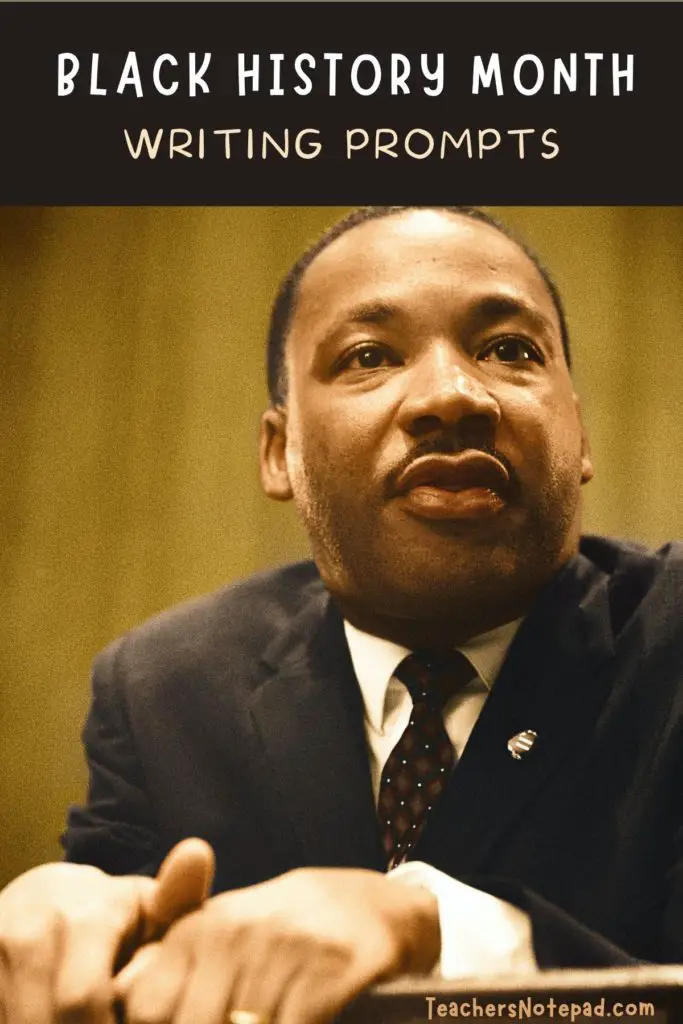
How to Tell 400 Years of Black History in One Book
From 1619 to 2019, this collection of essays, edited by two of the nation’s preeminent scholars, shows the depth and breadth of African American history
History Correspondent
/https://tf-cmsv2-smithsonianmag-media.s3.amazonaws.com/filer/31/de/31deb99d-0dcc-43eb-b801-171fb1aec4bc/gettyimages-515185532.jpg)
In August of 1619, the English warship White Lion sailed into Hampton Roads, Virginia, where the conjunction of the James, Elizabeth and York rivers meet the Atlantic Ocean. The White Lion ’s captain and crew were privateers, and they had taken captives from a Dutch slave ship. They exchanged, for supplies, more than 20 African people with the leadership and settlers at the Jamestown colony. In 2019 this event, while not the first arrival of Africans or the first incidence of slavery in North America , was widely recognized as inaugurating race-based slavery in the British colonies that would become the United States.
That 400th anniversary is the occasion for a unique collaboration: Four Hundred Souls: A Community History of African America, 1619-2019 , edited by historians Ibram X. Kendi and Keisha N. Blain. Kendi and Blain brought together 90 black writers—historians, scholars of other fields, journalists, activists and poets—to cover the full sweep and extraordinary diversity of those 400 years of black history. Although its scope is encyclopedic, the book is anything but a dry, dispassionate march through history. It’s elegantly structured in ten 40-year sections composed of eight essays (each covering one theme in a five-year period) and a poem punctuating the section conclusion; Kendi calls Four Hundred Souls “a chorus.”
The book opens with an essay by Nikole Hannah-Jones, the journalist behind the New York Times ’ 1619 Project , on the years 1619-1624, and closes with an entry from Black Lives Matter co-creator Alicia Garza writing about 2014-19, when the movement rose to the forefront of American politics. The depth and breadth of the material astounds, between fresh voices, such as historisn Mary Hicks writing about the Middle Passage for 1694-1699, and internationally renowned scholars, such as Annette Gordon-Reed writing about Sally Hemings for 1789-94. Prominent journalists include, in addition to Hannah-Jones, The Atlantic ’s Adam Serwer on Frederick Douglass (1859-64) and New York Times columnist Jamelle Bouie on the Civil War (1864-69). The powerful poems resonate sharply with the essays, Chet’la Sebree’s verses in “And the Record Repeats” about the experiences of young black women, for example, and Salamishah M. Tillet’s account of Anita Hill’s testimony in the Senate confirmation hearings for Supreme Court Justice Clarence Thomas.
“We are,” Kendi writes in the introduction collectively of black Americans, “reconstructing ourselves in this book.” The book itself, Blain writes in the conclusion, is “a testament to how much we have overcome, and how we have managed to do it together, despite our differences and diverse perspectives.” In an interview, Blain talked about how the project and the book’s distinctive structure developed, and how the editors imagine it will fit into the canon of black history and thought. A condensed and edited version of her conversation with Smithsonian is below.
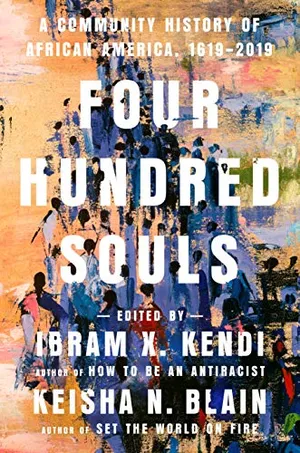
Four Hundred Souls: A Community History of African America, 1619-2019
Four Hundred Souls is a unique one-volume “community” history of African Americans. The editors, Ibram X. Kendi and Keisha N. Blain, have assembled 90 brilliant writers, each of whom takes on a five-year period of that four-hundred-year span.
How did the Four Hundred Souls book come about?
We started working on the project in 2018 (it actually predates the [publication of] the New York Times 1619 Project.) Ibram reached out to me with the idea that with the 400th year anniversary of the first captive Africans arriving in Jamestown, maybe we should collaborate on a project that would commemorate this particular moment in history, and look at 400 years of African American history by pulling together a diverse set of voices.
The idea was that we'd be able to create something very different than any other book on black history. And as historians, we were thinking, what would historians of the future want? Who are the voices they would want to hear from? We wanted to create something that would actually function as a primary source in another, who knows, 40 years or so—that captures the voices of black writers and thinkers from a wide array of fields, reflecting on both the past but also the present too.
Did you have any models for how you pulled all these voices together?
There are a couple of models in the sense of the most significant, pioneering books in African American history. We thought immediately of W.E.B. De Bois' Black Reconstruction in America in terms of the scope of the work, the depth of the content, and the richness of the ideas. Robin D.G. Kelley's Freedom Dreams is another model, but more recent. Martha Jones' Vanguard , is a book that captures decades right of black women's political activism and the struggle for the vote in a way that I think, does a similar kind of broad, sweeping history. Daina Ramey Berry and Kali N. Gross's Black Woman's History of the United States is another.
But ours was not a single authored book or even an edited collection of just historians. We didn't want to produce a textbook, or an encyclopedia. We wanted this work to be, as an edited volume, rich enough and big enough to cover 400 years of history in a way that would keep the reader engaged from start to finish, 1619 to 2019. That’s part of the importance of the multiple different genres and different voices we included moving from period to period.
How does Four Hundred Souls reflect the concept of a community history?
We figured that community would show up in different ways in the narrative, but we were really thinking initially, how do we recreate community in putting this book together? One of the earliest analogies that Ibram used was describing this as a choir. I love this—he described the poets as soloists. And then in this choir, you'd have sopranos, you'd have tenors, and you’d have altos. And so the question was: Who do we invite to be in this volume that would capture collectively that spirit of community?
We recognized that we could never fully represent every single field and every single background, but we tried as much as possible. And so even in putting together the book, there was a moment where we said, for example, "Wait a minute, we don't really have a scholar here who would be able to truly grapple with the sort of interconnection between African American History and Native American history." So we thought, is there a scholar, who identifies as African American and Native American and then we reached out to [UCLA historian] Kyle Mays .
So there were moments where we just had to be intentional about making sure that we were having voices that represented as much as possible the diversity of black America. We invited Esther Armah to write about the black immigrant experience because what is black America without immigrants? The heart of black America is that it's not homogenous at all—it's diverse. And we tried to capture that.
We also wanted to make sure that a significant number of the writers were women, largely because we acknowledge that so many of the histories that we teach, that we read, and that so many people cite are written by men. There's still a general tendency to look for male expertise, to acknowledge men as experts, especially in the field of history. Women are often sidelined in these conversations . So we were intentional about that, too, and including someone like Alicia Garza, one of the founders of Black Lives Matter, we wanted to acknowledge the crucial role that black women are playing in shaping American politics to this very day.
How did historians approach their subjects differently than say, creative writers?
One of the challenges with the book, which turned out to be also an opportunity, was that we were focusing on key historical moments, figures, themes and places in the United States, each within in a very specific five-year period. We actually spent a lot of time mapping out instructions for authors. It wasn't just: “Write a piece for us on this topic.” We said, “Here's what we want and what we don't want. Here's what we expect of you ask these questions as you're writing the essay, make sure you're grappling with these particular themes.”
But they also had to have a bit of freedom, to look backward, and also to look forward. And I think the structure with a bit of freedom worked, it was a pretty nice balance. Some essays the five years just fit like a glove, others a little less so but the writers managed to pull it off.
We also spent a lot of time planning and carefully identifying who would write on certain topics. “Cotton,” which memoirist Kiese Laymon wrote about for 1804-1809, is a perfect example. We realized very early that if we asked a historian to write about cotton, they would be very frustrated with the five-year constraint. But when we asked Kiese, we let him know that we would provide him with books on cotton and slavery for him to take a look at. And then he brought to it his own personal experience, which turned out to be such a powerful narrative. He writes, “When the land is freed, so will be all the cotton and all the money made off the suffering that white folks made cotton bring to Black folks in Mississippi and the entire South.”
And so that's the other element of this too. Even a lot of people wondered how we would have a work of history with so many non-historians. We gave them clear guidance and materials, and they brought incredible talent to the project.
The New York Times ’ 1619 project shares a similar point of origin, the 400th anniversary of the arrival of enslaved Africans to colonial America. What did you make of it when it came out last year?
When the 1619 Project came out, [Ibram and I] were thrilled, because actually, it, in so many ways, complemented our vision for our project. Then we decided we really had to invite Nikole Hannah-Jones to contribute. We weren't sure who we would ask for that first essay, but then we were like, "You know what? This makes sense."
I know there are so many different critiques, but for me, what is most valuable about the project is the way that it demonstrates how much, from the very beginning, the ideas and experiences of black people have been sidelined.
This is why we wanted her to write her essay [about the slave ship White Lion .] Even as someone who studied U.S. history, I did not even know about the White Lion for many years. I mean, that's how sad it is…but I could talk about the Mayflower . That was part of the history that I was taught. And so what does that tell us?
We don't talk about 1619 the way that we do 1620. And why is that? Well, let's get to the heart of the matter. Race matters and racism, too, in the way that we even tell our histories. And so we wanted to send that message. And like I said, to have a complementary spirit and vision as the 1619 Project.
When readers have finished going through 400 Souls , where else can they read black scholars writing on black history?
One of the things that the African American Intellectual History Society [Blain is currently president of the organization] is committed to doing is elevating the scholarship and writing of Black scholars as well as a diverse group of scholars who work in the field of Black history, and specifically Black intellectual history.
Black Perspectives [an AAIHS publication] has a broad readership, certainly, we're reaching academics in the fields of history and many other fields. At the same time, a significant percentage of our readers are non-academics. We have activists who read the blog, well known intellectuals and thinkers, and just everyday lay people who are interested in history, who want to learn more about black history and find the content accessible.
Get the latest History stories in your inbox?
Click to visit our Privacy Statement .
A Note to our Readers Smithsonian magazine participates in affiliate link advertising programs. If you purchase an item through these links, we receive a commission.
Karin Wulf | | READ MORE
Karin Wulf is the director of the John Carter Brown Library and a historian at Brown University. She was previously the executive director of the Omohundro Institute of American History & Culture and a professor of history at William & Mary.

Black History Month Writing Prompts for Students
Let’s celebrate Black History Month! As educators, parents, and mentors, we understand the importance of fostering a sense of pride, knowledge, and cultural awareness in the hearts and minds of our students.
We’ve compiled a collection of engaging Black History Month writing prompts for students.
These writing prompts are designed to spark curiosity, encourage reflection, and inspire young minds to explore the rich tapestry of African American history.
Check out our top list of Black History Month writing prompts for students. This list features excellent writing prompts suitable for Kindergarten, elementary school , and middle school students . Let’s get writing!

No one has played a greater role in helping all Americans know the black past than Carter G. Woodson, the individual who created Negro History Week in Washington, D.C., in February 1926. Woodson was the second black American to receive a PhD in history from Harvard—following W.E.B. Du Bois by a few years. To Woodson, the black experience was too important simply to be left to a small group of academics. Woodson believed that his role was to use black history and culture as a weapon in the struggle for racial uplift. By 1916, Woodson had moved to DC and established the “Association for the Study of Negro Life and Culture,” an organization whose goal was to make black history accessible to a wider audience. Woodson was a strange and driven man whose only passion was history, and he expected everyone to share his passion.

Dr. Carter G. Woodson, late 1940s
This impatience led Woodson to create Negro History Week in 1926, to ensure that school children be exposed to black history. Woodson chose the second week of February in order to celebrate the birthday of Lincoln and Frederick Douglass. It is important to realize that Negro History Week was not born in a vacuum. The 1920s saw the rise in interest in African American culture that was represented by the Harlem Renaissance where writers like Langston Hughes, Georgia Douglass Johnson, Claude McKay—wrote about the joys and sorrows of blackness, and musicians like Louie Armstrong, Duke Ellington, and Jimmy Lunceford captured the new rhythms of the cities created in part by the thousands of southern blacks who migrated to urban centers like Chicago. And artists like Aaron Douglass, Richmond Barthé, and Lois Jones created images that celebrated blackness and provided more positive images of the African American experience.
Woodson hoped to build upon this creativity and further stimulate interest through Negro History Week. Woodson had two goals. One was to use history to prove to white America that blacks had played important roles in the creation of America and thereby deserve to be treated equally as citizens. In essence, Woodson—by celebrating heroic black figures—be they inventors, entertainers, or soldiers—hoped to prove our worth, and by proving our worth—he believed that equality would soon follow. His other goal was to increase the visibility of black life and history, at a time when few newspapers, books, and universities took notice of the black community, except to dwell upon the negative. Ultimately Woodson believed Negro History Week—which became Black History Month in 1976—would be a vehicle for racial transformation forever.
The question that faces us today is whether or not Black History Month is still relevant? Is it still a vehicle for change? Or has it simply become one more school assignment that has limited meaning for children. Has Black History Month become a time when television and the media stack their black material? Or is it a useful concept whose goals have been achieved? After all, few—except the most ardent rednecks - could deny the presence and importance of African Americans to American society or as my then-14 year old daughter Sarah put it, “I see Colin Powell everyday on TV, all my friends—black and white—are immersed in black culture through music and television. And America has changed dramatically since 1926—Is not it time to retire Black History Month as we have eliminated white and colored signs on drinking fountains?” I will spare you the three hour lesson I gave her.
I would like to suggest that despite the profound change in race relations that has occurred in our lives, Carter G. Woodson’s vision for black history as a means of transformation and change is still quite relevant and quite useful. African American history month, with a bit of tweaking, is still a beacon of change and hope that is still surely needed in this world. The chains of slavery are gone—but we are all not yet free. The great diversity within the black community needs the glue of the African American past to remind us of not just how far we have traveled but lo, how far there is to go.
While there are many reasons and examples that I could point towards, let me raise five concerns or challenges that African Americans — in fact — all Americans — face that black history can help address:
The Challenge of Forgetting
You can tell a great deal about a country and a people by what they deem important enough to remember, to create moments for — what they put in their museum and what they celebrate. In Scandinavia — there are monuments to the Vikings as a symbol of freedom and the spirit of exploration. In Germany during the 1930s and 1940s, the Nazis celebrated their supposed Aryan supremacy through monument and song. While America traditionally revels in either Civil War battles or founding fathers. Yet I would suggest that we learn even more about a country by what it chooses to forget — its mistakes, its disappointments, and its embarrassments. In some ways, African American History month is a clarion call to remember. Yet it is a call that is often unheeded.
Let’s take the example of one of the great unmentionable in American history — slavery. For nearly 250 years slavery not only existed but it was one of the dominant forces in American life. Political clout and economic fortune depended on the labor of slaves. And the presence of this peculiar institution generated an array of books, publications, and stories that demonstrate how deeply it touched America. And while we can discuss basic information such as the fact that in 1860 — 4 million blacks were enslaved, and that a prime field hand cost $1,000, while a female, with her childbearing capability, brought $1,500, we find few moments to discuss the impact, legacy, and contemporary meaning of slavery.
In 1988, the Smithsonian Institution, about to open an exhibition that included slavery, decided to survey 10,000 Americans. The results were fascinating — 92% of white respondents felt slavery had little meaning to them — these respondents often said “my family did not arrive until after the end of slavery.” Even more disturbing was the fact that 79% of African Americans expressed no interest or some embarrassment about slavery. It is my hope that with greater focus and collaboration Black History Month can stimulate discussion about a subject that both divides and embarrasses.
As a historian, I have always felt that slavery is an African American success story because we found ways to survive, to preserve our culture and our families. Slavery is also ripe with heroes, such as slaves who ran away or rebelled, like Harriet Tubman or Denmark Vessey, but equally important are the forgotten slave fathers and mothers who raised families and kept a people alive. I am not embarrassed by my slave ancestors; I am in awe of their strength and their humanity. I would love to see the African American community rethink its connection to our slave past. I also think of something told to me by a Mr. Johnson, who was a former sharecropper I interviewed in Georgetown, SC:
Though the slaves were bought, they were also brave. Though they were sold, they were also strong.
The Challenge of Preserving a People’s Culture
While the African American community is no longer invisible, I am unsure that as a community we are taking the appropriate steps to ensure the preservation of African American cultural patrimony in appropriate institutions. Whether we like it or not, museums, archives, and libraries not only preserves culture they legitimize it. Therefore, it is incumbent of African Americans to work with cultural institutions to preserve their family photography, documents, and objects. While African Americans have few traditions of giving material to museums, it is crucial that more of the black past make it into American cultural repositories.
A good example is the Smithsonian, when the National Museum of American History wanted to mount an exhibition on slavery, it found it did not have any objects that described slavery. That is partially a response to a lack of giving by the African American Community. This lack of involvement also affects the preservation of black historic sites. Though there has been more attention paid to these sites, too much of our history has been paved over, gone through urban renewal, gentrified, or unidentified, or un-acknowledged. Hopefully a renewed Black History Month can focus attention on the importance of preserving African American culture.
There is no more powerful force than a people steeped in their history. And there is no higher cause than honoring our struggle and ancestors by remembering.
The Challenge of Maintaining a Community
As the African American Community diversifies and splinters, it is crucial to find mechanisms and opportunities to maintain our sense of community. As some families lose the connection with their southern roots, it is imperative that we understand our common heritage and history. The communal nature of black life has provided substance, guidance, and comfort for generations. And though our communities are quite diverse, it is our common heritage that continues to hold us together.
The Power of Inspiration
One thing has not changed. That is the need to draw inspiration and guidance from the past. And through that inspiration, people will find tools and paths that will help them live their lives. Who could not help but be inspired by Martin Luther King’s oratory, commitment to racial justice, and his ultimate sacrifice. Or by the arguments of William and Ellen Craft or Henry “Box” Brown who used great guile to escape from slavery. Who could not draw substance from the creativity of Madame CJ Walker or the audacity and courage of prize fighter Jack Johnson. Or who could not continue to struggle after listening to the mother of Emmitt Till share her story of sadness and perseverance. I know that when life is tough, I take solace in the poetry of Paul Lawrence Dunbar, Langston Hughes, Nikki Giovanni, or Gwendolyn Brooks. And I find comfort in the rhythms of Louie Armstrong, Sam Cooke or Dinah Washington. And I draw inspiration from the anonymous slave who persevered so that the culture could continue.
Let me conclude by re-emphasizing that Black History Month continues to serve us well. In part because Woodson’s creation is as much about today as it is about the past. Experiencing Black History Month every year reminds us that history is not dead or distant from our lives.
Rather, I see the African American past in the way my daughter’s laugh reminds me of my grandmother. I experience the African American past when I think of my grandfather choosing to leave the South rather than continue to experience share cropping and segregation. Or when I remember sitting in the back yard listening to old men tell stories. Ultimately, African American History — and its celebration throughout February — is just as vibrant today as it was when Woodson created it 85 years ago. Because it helps us to remember there is no more powerful force than a people steeped in their history. And there is no higher cause than honoring our struggle and ancestors by remembering.
Lonnie Bunch Founding Director
Subtitle here for the credits modal.
How Negro History Week Became Black History Month and Why It Matters Now
By Veronica Chambers and Jamiel Law Feb. 24, 2021
- Share full article

Black History Month has been celebrated in the United States for close to 100 years. But what is it, exactly, and how did it begin?
In the years after Reconstruction, campaigning for the importance of Black history and doing the scholarly work of creating the canon was a cornerstone of civil rights work for leaders like Carter G. Woodson. Martha Jones, a professor of history at Johns Hopkins University and the Society of Black Alumni Presidential Professor, explained: “These are men [like Woodson] who were trained formally and credentialed in the ways that all intellectuals and thought leaders of the early 20th century were trained at Harvard and places like that. But in order to make the argument, in order to make the claim about Black genius, about Black excellence, you have to build the space in which to do that. There is no room.” This is how they built the room.
On Feb. 20, Frederick Douglass, the most powerful civil rights advocate of his era, dies.
Douglass collapsed after attending a meeting with suffragists, including his friend Susan B. Anthony. A lifelong supporter of women’s rights, Douglass was among the 32 men who signed the Declaration of Sentiments at Seneca Falls, N.Y. He once said: “When I ran away from slavery, it was for myself; when I advocated emancipation, it was for my people. But when I stood up for the rights of woman, self was out of the question, and I found a little nobility in the act.”
Douglass was such an animated storyteller that, when he collapsed, his wife thought it was part of the story he was telling her about his day with the suffragists.
Washington, D.C., schools begin to celebrate what becomes known as Douglass Day.
On Jan. 12, 1897, Mary Church Terrell, an educator and community activist, proposed the idea of a school holiday to celebrate Frederick Douglass’s life at a school board meeting for the Washington-area “colored schools.” The school board agreed to set aside the afternoon of Feb. 14, 1897, the date Douglass celebrated as his birthday (he had been born enslaved and did not know his exact date of birth) for students to learn about his life, writing and speeches.
Terrell was an animal lover, and she and her husband had a beloved dog named Nogi. For years, she lobbied the Board of Education to set aside a day when Washington students would be taught and shown the importance of being kind to animals. Animal Day, as she called it, never passed.
Carter G. Woodson, the scholar now known as “the father of Black history,” was inspired to take his work nationwide.
Carter G. Woodson was born in 1875, the son of former enslaved people. He worked as a coal miner before receiving his master’s at the University of Chicago, and he was the second African-American to receive a Ph.D. at Harvard (after W.E.B. DuBois). In the summer of 1915, Dr. Woodson attended the Lincoln Jubilee celebration commemorating the 50th anniversary of emancipation in Chicago, featuring exhibitions that highlighted African-Americans’ recent accomplishments. After seeing the thousands of people who attended from across the country, Dr. Woodson was inspired to do more in the spirit of honoring Black history and heritage.
According to an article in The Broad Ax, a weekly Black newspaper in Chicago, the Jubilee celebration included musical performances, garment and furniture making, and a 16-foot statue of Abraham Lincoln.
The movement for Black History grows.
On Sept. 9, 1915, Dr. Woodson formed the Association for the Study of Negro Life and History (ASNLH), an organization to promote the scientific study of Black life and history. (Today, the organization is known as the Association for the Study of African American Life and History, or ASALH.) In 1916, the association established The Journal of Negro History, the first scholarly journal that published researchers’ findings on the historical achievements of Black individuals.
Dr. Woodson believed that “If a race has no history, if it has no worthwhile tradition, it becomes a negligible factor in the thought of the world, and it stands in danger of being exterminated.” To that end, he asked his Omega Psi Fraternity brothers to join him in the work of spreading the importance of Black history. The Omega Psi Fraternity created Negro History and Literature Week in 1924. But Dr. Woodson had even greater aspirations for Negro History to become a significant part of the culture across the country.
Dr. Woodson’s best-known book, “The Miseducation of the Negro,” inspired the title of the groundbreaking album “The Miseducation of Lauryn Hill.”
In the 1920s, a decade of hope and possibility for Black Americans, Negro History Week begins.
Dr. Woodson believed deeply that a celebration of Black history would have lasting impact on future generations of leaders. As he reportedly told an audience of Hampton University students, “We are going back to that beautiful history and it is going to inspire us to greater achievements.” Determined to lead the charge to study that history, Dr. Woodson announced the first Negro History Week in February 1926.
He chose February because it was the month in which both Lincoln and Douglass were born. After Lincoln’s assasination, his birthday, on Feb. 12, had been celebrated by Black Americans and Republicans. Douglass Day, which was observed on Feb. 14, had grown in popularity since Mary Church Terrell had started it in Washington in 1897. Dr. Woodson saw Negro History Week as a way to expand the celebration of these two men and encourage Americans to study the little-known history of an entire people.
Every year since 1928, Negro History Week, and later Black History Month, has centered on a theme. This year's theme is “The Black Family: Representation, Identity and Diversity.”
Growing alongside the Harlem Renaissance, Negro History Week uses every platform at its disposal to spread its message.
Dr. Woodson and his colleagues set an ambitious agenda for Negro History Week. They provided a K-12 teaching curriculum with photos, lesson plans and posters with important dates and biographical information. In an article published in 1932 titled “Negro History Week: The Sixth Year,” Dr. Woodson noted that some white schools were participating in the Negro History Week curriculums and that this had improved race relations. He and his colleagues also engaged the community at large with historical performances, banquets, lectures, breakfasts, beauty pageants and parades.
L.D. Reddick, a historian, heard “the father of Negro history” speak as a child in his hometown, Jacksonville, Fla. Everything about Dr. Woodson, he remembered, produced an effect that was “electric.” As Mr. Reddick wrote, “He handled himself well upon the platform, I thought, moving about very much like a skilled boxer: never hurried, never faltering, sparring skillfully for openings, driving his blows deftly.” Mr. Reddick, who would later collaborate with the Rev. Dr. Martin Luther King Jr. on his book about the Montgomery bus boycotts, marveled that Dr. Woodson was “easily ... the most impressive speaker that I had ever heard up to that time in my life.”
For rural schools, Dr. Woodson eventually introduced special kits for Negro History Week that could include a list of suggested reading material, speeches by and photos of famous African-Americans, and a play about Black history.
After gaining in renown, Negro History Week becomes Negro History Month and then Black History Month.
Dr. Woodson lectured often in West Virginia, and citizens in that state began celebrating what they called Negro History Month in the 1940s. Dr. Woodson’s organization, the Association for the Study of Negro Life and History, formed branches across the country and Negro History Clubs began to appear in high schools. By the time Dr. Woodson died in 1950, mayors across the country supported Negro History Week.
In the 1960s, growing political consciousness among Black college students led to a push for more opportunities to study Black history. In February 1969, students and educators at Kent State University proposed the first Black History Month — and celebrated it in February 1970.
President Gerald Ford supports Black History Month as an important element of the nation’s bicentennial celebrations.
In October 1974, just months after assuming the presidency following the resignation of Richard Nixon, Ford met with civil rights leaders, including Vernon Jordan, Bayard Rustin, Dorothy Height and Jesse Jackson. As The New York Times reported, the leaders were looking for the president to “make a ‘ringing reaffirmation’ of the nation’s commitment to racial justice and moral leadership.”
Less than two years later, in February 1976, Ford did just that. Drawing on the patriotic significance of the bicentennial he issued a statement on the importance of Black History Month to all Americans. “The last quarter-century has finally witnessed significant strides in the full integration of black people into every area of national life,” he said. “In celebrating Black History Month, we can take satisfaction from this recent progress in the realization of the ideal envisioned by our founding fathers. But, even more than this, we can seize the opportunity to honor the too-often neglected accomplishments of Black Americans in every area of endeavor throughout our history.”
Every president since Ronald Reagan has issued a Black History Month proclamation.
In 2021, President Biden made his first proclamation in support of Black History Month, announcing: “We do so because the soul of our Nation will be troubled as long as systemic racism is allowed to persist. It is corrosive. It is destructive. It is costly. We are not just morally deprived because of systemic racism, we are also less prosperous, less successful, and less secure as a Nation.”
Why does Black History Month in particular, and the study of Black history overall, still matter so much? “There’s no question that history is and continues to be a battleground. The origin stories that we tell matter a great deal for where we set the bar and how we set the bar going forward,” noted Professor Jones, of Johns Hopkins. “So when you talk about people like Carter G. Woodson, these are men who knew that if you don’t rewrite the history of Africans and people of African descent, if you don’t rewrite the history of the United States through the lens of Black history, if you don’t make that record and if you don’t make that case, there are [false] stories that will expand and go toward rationalizing and perpetuating racism, exclusion, marginalization and more.”
Produced by Rebecca Lieberman, Deanna Donegan, Jeremy Allen, Veronica Chambers, Marcelle Hopkins, Adam Sternbergh, Dodai Stewart and Amanda Webster.
Additional reporting by Lauren Messman.
More from Black History, Continued

Do We Ask Too Much of Black Heroes?
Every year for a month, we celebrate the heroes of Black history. But these stories can obscure how change happens and who gets left behind.
By Imani Perry
Jan. 29, 2021

The Essential Toni Morrison
By Veronica Chambers
Feb. 18, 2021

Black History Continued
By The New York Times
Feb. 24, 2021
Advertisement
Home — Essay Samples — History — African American History — Black History Month: The Importance of Knowing African American History
Black History Month: The Importance of Knowing African American History
- Categories: African American African American History
About this sample

Words: 553 |
Updated: 1 December, 2023
Words: 553 | Page: 1 | 3 min read
Works Cited:
- Aitken, R., & Dupuis, M. (2017). Risk, governance, and compliance after the global financial crisis: The implications of regulatory capitalism for the restructuring of financial services. Regulation & Governance, 11(2), 125-139.
- Campbell, A. (2014). Jordan Belfort's "The Wolf of Wall Street" and the Corruption of the American Dream. Journal of American Culture, 37(2), 252-265.
- Covell, J., & Crispin, L. (2017). Masculinity, gender and the domain of the sales organization. Gender, Work & Organization, 24(3), 274-287.
- Diamond, J. (2013). The wolf of wall street: How Hollywood infiltrated the Dow Jones. Financial Times, 1.
- Elazar, M. (2016). “Wolf of Wall Street” on trial: Pop culture in the court of law. Rutgers Journal of Law & Public Policy, 13(2), 301-331.
- Field, D. (2015). High rollers: Inside the savings and loan disaster. University of Texas Press.
- Kondratieva, M. A., & Semenov, V. P. (2019). Moral values in the context of Wall Street. European Journal of Science and Theology, 15(3), 143-155.
- Levin, M. J. (2016). From Jordan Belfort to Steve Cohen: The ethical perils of insider trading. Journal of Business Ethics, 133(3), 549-563.
- Lowry, D. T., & Gaskin, J. (2019). Gender and power in the workplace: Analyzing the influence of the #MeToo movement in organizational research. Journal of Management Inquiry, 28(4), 402-409.
- McNair, B. (2018). Gender stereotypes in the media. In The Routledge Companion to Media and Gender (pp. 57-66). Routledge.
Video Version

Cite this Essay
Let us write you an essay from scratch
- 450+ experts on 30 subjects ready to help
- Custom essay delivered in as few as 3 hours
Get high-quality help

Prof Ernest (PhD)
Verified writer
- Expert in: Sociology History

+ 120 experts online
By clicking “Check Writers’ Offers”, you agree to our terms of service and privacy policy . We’ll occasionally send you promo and account related email
No need to pay just yet!
Related Essays
2 pages / 918 words
2 pages / 1016 words
3 pages / 1157 words
3 pages / 1308 words
Remember! This is just a sample.
You can get your custom paper by one of our expert writers.
121 writers online
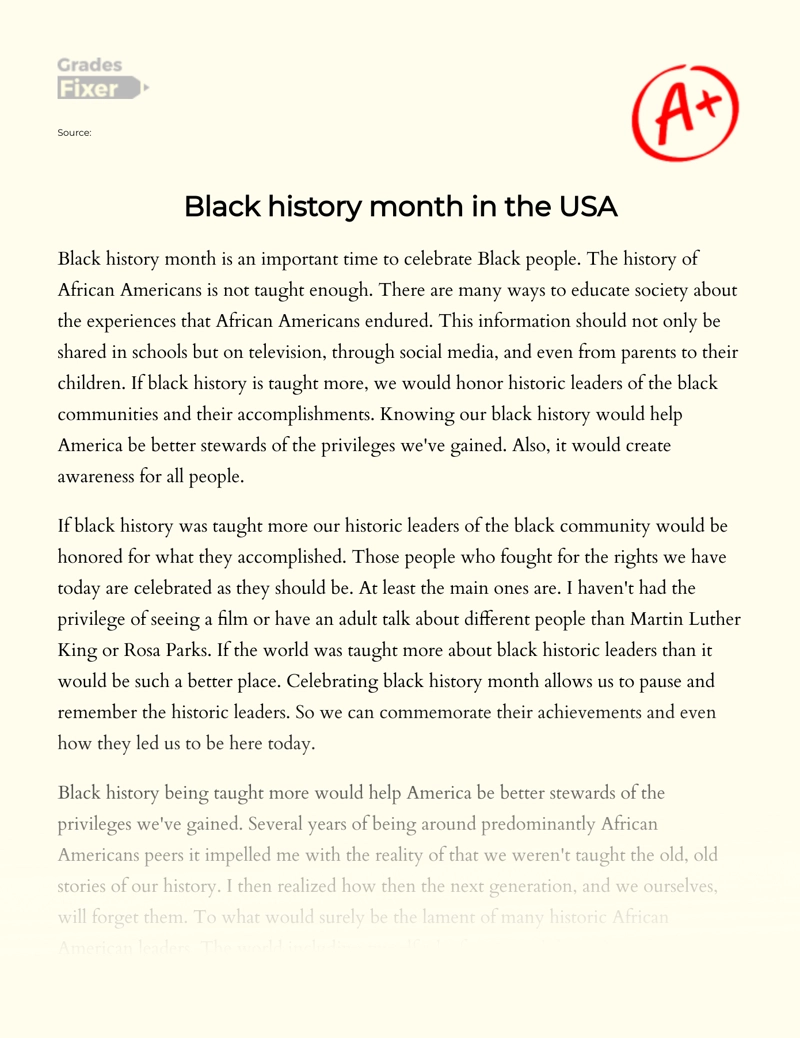
Still can’t find what you need?
Browse our vast selection of original essay samples, each expertly formatted and styled
Related Essays on African American History
Baseball has been a popular sport in the United States for over a century, and its integration has been a topic of discussion for many years. While the integration of baseball is often associated with the breaking of the color [...]
Black History Month, celebrated every February, is a significant observance in the United States and beyond. In this essay, we will explore the historical importance of Black History Month and how it serves as a vital platform [...]
Black History Month is a significant cultural celebration that should be observed and commemorated for several reasons. This essay aims to explore the historical context, achievements, contributions, promotion of social justice [...]
Pauli Murray's "Proud Shoes" is a groundbreaking work that explores the author's family history and the broader historical context of race and identity in America. Murray, a prominent civil rights activist, lawyer, and feminist, [...]
Bessie Coleman's life and achievements serve as a testament to the power of determination, resilience, and the pursuit of one's dreams. Despite facing significant obstacles, she defied societal expectations and became a pioneer [...]
Black History Month is a time dedicated to celebrating the achievements and contributions of African Americans throughout history. It is a time to reflect on the struggles and triumphs of black individuals who have made a [...]
Related Topics
By clicking “Send”, you agree to our Terms of service and Privacy statement . We will occasionally send you account related emails.
Where do you want us to send this sample?
By clicking “Continue”, you agree to our terms of service and privacy policy.
Be careful. This essay is not unique
This essay was donated by a student and is likely to have been used and submitted before
Download this Sample
Free samples may contain mistakes and not unique parts
Sorry, we could not paraphrase this essay. Our professional writers can rewrite it and get you a unique paper.
Please check your inbox.
We can write you a custom essay that will follow your exact instructions and meet the deadlines. Let's fix your grades together!
Get Your Personalized Essay in 3 Hours or Less!
We use cookies to personalyze your web-site experience. By continuing we’ll assume you board with our cookie policy .
- Instructions Followed To The Letter
- Deadlines Met At Every Stage
- Unique And Plagiarism Free
The Edvocate
- Lynch Educational Consulting
- Dr. Lynch’s Personal Website
- Write For Us
- The Tech Edvocate Product Guide
- The Edvocate Podcast
- Terms and Conditions
- Privacy Policy
- Assistive Technology
- Best PreK-12 Schools in America
- Child Development
- Classroom Management
- Early Childhood
- EdTech & Innovation
- Education Leadership
- First Year Teachers
- Gifted and Talented Education
- Special Education
- Parental Involvement
- Policy & Reform
- Best Colleges and Universities
- Best College and University Programs
- HBCU’s
- Higher Education EdTech
- Higher Education
- International Education
- The Awards Process
- Finalists and Winners of The 2022 Tech Edvocate Awards
- Finalists and Winners of The 2021 Tech Edvocate Awards
- Finalists and Winners of The 2020 Tech Edvocate Awards
- Finalists and Winners of The 2019 Tech Edvocate Awards
- Finalists and Winners of The 2018 Tech Edvocate Awards
- Finalists and Winners of The 2017 Tech Edvocate Awards
- Award Seals
- GPA Calculator for College
- GPA Calculator for High School
- Cumulative GPA Calculator
- Grade Calculator
- Weighted Grade Calculator
- Final Grade Calculator
- The Tech Edvocate
- AI Powered Personal Tutor
College Minor: Everything You Need to Know
14 fascinating teacher interview questions for principals, tips for success if you have a master’s degree and can’t find a job, 14 ways young teachers can get that professional look, which teacher supplies are worth the splurge, 8 business books every teacher should read, conditional admission: everything you need to know, college majors: everything you need to know, 7 things principals can do to make a teacher observation valuable, 3 easy teacher outfits to tackle parent-teacher conferences.
Essay Topics on African American History

- The History of Black Lives Matter
- African American History: 1865 to the Present
- The Black History Month: The Significance of Black History
- Overview of African American History and Culture
- Religious Influences in African American History During 1770 – 1831
- Historical Overview of Black Nationalism
- Who Is Viewed as the Father of Black History
- African American History: Recognition for Sojourner Truth
- Ame and Ame Zion Places of Worship in African American History
- History of African Americans: Black Slaveowners
- Capitalism and Its Effect on African American History
- Education of All Viewpoints of the African American History
- Changes Preparing for African American History
- Exploring African American History: The Harlem Renaissance
- Impact of African American History on African Americans
- The Idea of Freedom in African American History
- How Does African American History Contrast From Others
- “Warmth of Other Suns” and the African American History
- The Impact of the 2008 Election on the African American History
- Irene Gomez-Leon: African American History
Fascinating African American History Topics to Write about
- Little Africa: A History of Black Wall Street
- Major Events and Figures in African American History Prior to 1877
- Language Mindfulness: The N-Word in African American History
- Slavery and Its Role in the African American History
- African American History During the Antebellum Era
- The Effect of the Civil War on African American History
- Analysis of Why African American History Is Significant
- African American History Figure: Matthew Alexander Henson
- The Effect of Black Soldiers on American History
- The History and Significance of Black History Month
- African American History and Black Nationalism
- Analysis of Contentions Against Black History Month
- The Positive and Negative Aspects of Black History
- Brief History of Black Men in American Culture
- Racism in Black Film History
- The History of Harlem – Social Focal Point of America’s African American Community
- African American Youth and Their Apathy toward Dark History Month
- History of Medical Experimentation on Black Americans from Colonial Times
- Underrated and Unwritten Black History Legends: John Carlos and Tommie Smith
- The Meaning of Black History and African-American History
Fascinating Essay Topics About Abraham Lincoln
Connectivism: everything you need to know.
Matthew Lynch
Related articles more from author, simple & easy individualism essay topics, aristocracy essay topics, ethnocentrism essay topics, essay topics about mozart, research topics about bitcoin, coffee essay topics.

The Spectator

Personal Essays on Black History Month
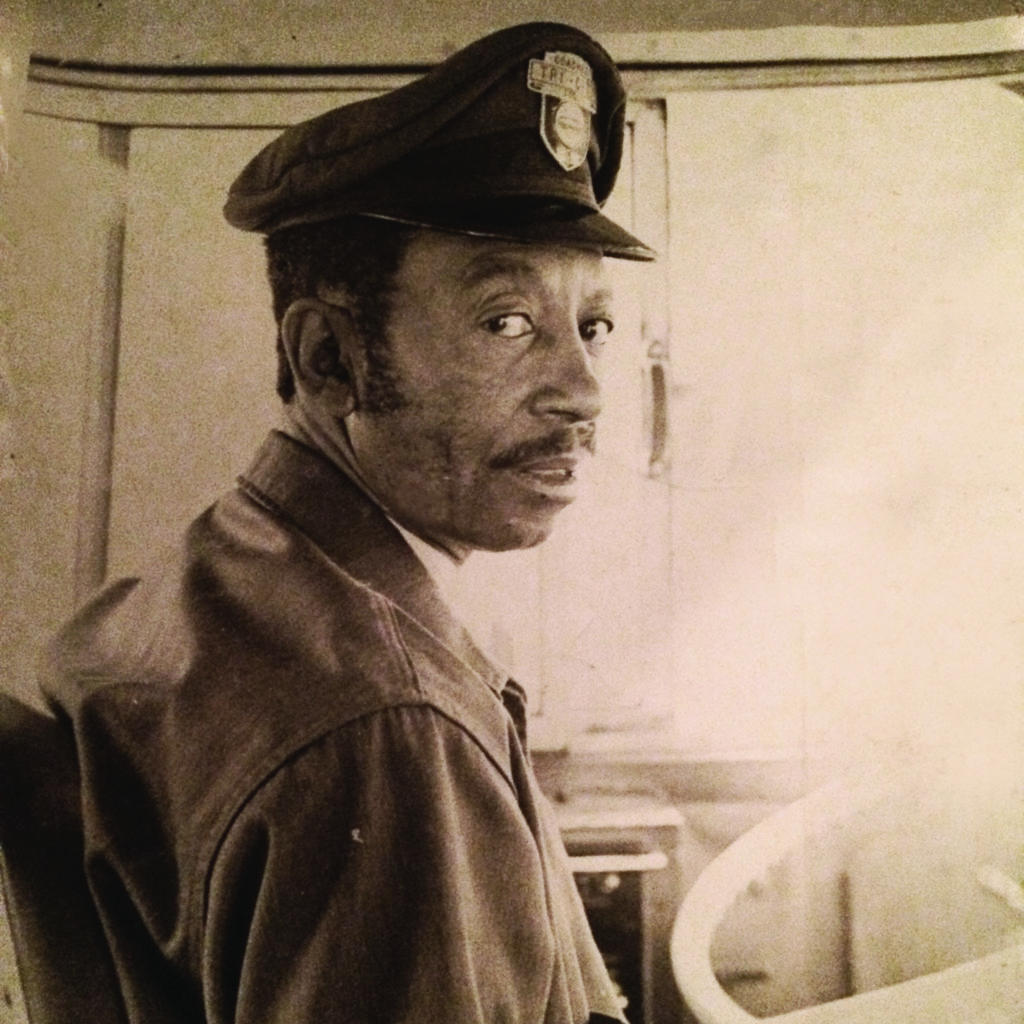
In 1926, Carter G. Woodson, a Harvard-trained educator, working with the Association for the Study of Negro Life established Black History Week – an opportunity to honor the largely unknown contributions of those of African descent and to celebrate the essence of a history that is integral to the narrative of America as apple pie. Nearly 100 years later (92 to be exact), black history in the United States remains incomplete, inauthentic and lopsided. The dominant narrative reinforces negative stereotypes and assumptions that devalue black and brown bodies in America. We are familiar with the common threads – school-to-prison pipeline, mass incarceration, educational achievement gaps to name a few. We are less familiar with (or perhaps less willing to acknowledge) the systemic and structural forces that sustain and lock in advantage; a self-reinforcing system that has been operating for hundreds of years. Moreover, often we recycle our praise for those commonly-known historical figures in black history; leaving a vast delta of information about the unique contributions of black people across disciplines and genres hidden, unacknowledged or forgotten. As an African American woman living in this moment, the promise and peril of what civil rights leaders in the 1950s and 1960s referred to as “beloved community,” seems ever present. It is hard to remain hopeful in the midst of such palpable divisiveness, polarizing forces, coarse language and deeds that are antithetical to creating a society that is inclusive, loving and just. Those who fought, sacrificed, and died deserve our reverence and gratitude, for sure. Significantly, however, to honor the legacy of their contributions demands not only celebratory moments, but also recommitting ourselves to action toward building beloved community. Remembering the past is important to create pathways toward greater understanding, productive dialogue, cross-cultural trust and reconciliation. Discovering those core pieces of American history is vital to building these bridges. The Southern Poverty Law Center recently published a study reflecting our failure as a nation to adequately educate about the difficult and complex history of American slavery; treating slavery as an event rather than integral part of who we are as a country. We must honestly confront our shared history and its relationship to contemporary racial gaps and inequities. Any discussion toward building beloved community cannot take place without confronting the difficult history of American slavery because this history continues to shape our conceptions of race, who belongs and fairness. With Black History Month upon us, I’m mindful of the students, scholars, activists and ordinary citizens who found the courage to remain determined and engaged in the midst of great challenges, vulnerability and danger in order to demand basic human dignity and racial justice. In fact, it was college students and other young people who declared Black History as a month-long exploration rather than a week. Confining black history to a week or month is not the point. The heart of the matter for me is that context matters. This moment signifies our shared history—black history matters for all of us—the story of how America developed, prospered and created an imperfect union, one that continues to bear fruit in rich and complex ways. It’s about educating ourselves and discovering those foundational pieces and hard truths of American history like the enslavement of free people of African descent, genocidal acts like lynching, segregation and the discrimination of Jim Crow, along with the numerous contributions made by black people to the fabric of American life and culture, as well as its infrastructure and industrial capacity. We remember so others will not forget; to affirm and to build a better world. We cannot change that which we do not know and understand or for which we hold little or no respect and curiosity. This month and beyond, I will acknowledge with pride those whose efforts continue to inspire and make history—from the freedom fighters of the Civil Rights Movement (too numerous to name), the vibrancy of the Harlem Renaissance, Pauli Murray, Audre Lorde; to more contemporary history makers including Black Lives Matter, Colin Kaepernick, Ana Duvernay, Shonda Rhimes, Beyoncé, authors like Ibram Kendi and Isabel Wilkerson, Black Panther – the movie, to the official portraits of former President Obama and Michelle Obama, both created by black artists whose subjects and works will hang in the National Gallery for all time. Additionally, as CDO, I will continue to build our capacity to embed and infuse diversity, equity and inclusion throughout the strategic priorities of the institution and to cultivate more productive ways of engaging across differences. The goal is that SU is a place where we harness the power of our differences, embrace creative tension and grow together. I remain hopeful in the midst of challenging times because of the courageous citizens on this campus and beyond who are doing their part to build a more just and humane society—toward beloved community. – Natasha Martin Vice President for Diversity and Inclusion
I’m half Black, half Cuban. Growing up my father never spoke Spanish in the house and I never asked why. My father was a man that never saw color, he always believed you should “trust the soul of a man rather than the look of him.” (Remember the Titans–Coach Yoast). In Petersburg, Va., where I was born and raised, my father became the first Negro in the 60’s to drive a city bus. At the time this was unheard of. He battled his way through racism, and other challenges of negative behavior because he was the only black bus driver for Petersburg Va. Transit Co. (see cover photo). I can remember my mother telling me a story about father’s first week at work. She described it as “hell pure”. Your father pulls up and says, “good morning everyone.” The white passengers were furious and they would not board the bus. So, a group of blacks walked pass the group of white passengers and boarded the bus, deposited their fare and said, “good morning.” After a few minutes the white passengers began to board the bus. They shouted racial slurs, they spit on my father and other passengers and said “hey nigger whose bus did you steal?” as they walked passed him. On top of that, they didn’t pay their fare. When all the passengers got seated, my father put the bus in park and removed his seat belt and stood up. He wasn’t a small man. He stood tall at a height of 6ft 5inches. He began to speak to all the passengers on the bus. This is what he said, “I’m the bus driver and this my route, but if I’m the driver of this bus, you will not disrespect me, put your hands on me or spit on me. Lastly if you have a problem with what I said or I have offended you, you can just remove yourself from my bus.” He returned to his seat, fastened his seat belt, and put the bus in gear and started driving toward Downtown Petersburg. During the bus ride the atmosphere on the bus was so silent you could hear a pin drop. After about a 50-minute bus ride, the bus arrives in Downtown Petersburg. The bus comes to a stop and my father opens the door and all passengers began to exit. As white passengers walked past my father to exit the bus, they deposited their fare and shook my fathers hand and apologized to him and the last white passenger asked if they would we him see later that day, to which my father responded, “yes you will and I will get you home safe to your family.” Black History Month, to me, means a celebration of knowledge. It’s a reflection of the past, present and future in African American Culture. It’s a reminder of all the positive and innovative things that have come from our culture and how it made a huge impact on future generations. It is a time for everyone to experience culture and the roots of many things that have evolved from those of African American decent. Also it’s a time to inform everyone who may not be exposed to African American History the rest of the year. Let’s all take the time to remember the hardships and struggle, but it doesn’t stop there. It’s a remembrance of what we strive for and how the ones before us have paved a way for the things we have today. – Ricco Bland Public Safety Officer
My grandmother was the most influential person in my life until her death in 1997. Today, I draw inspiration both from her memory and the legacy of love and compassion she left behind. I experienced a safe, secure, loving childhood that occurred at the valuable intersection of two circumstances; the youth of my parents and the love of my grandmother. I was positioned to witness the broad range of painful human experiences and given a unique set of assets and blessings that allowed me the ability to develop and grow my understanding of the world I inhabit. Early in my upbringing, my grandmother introduced me to the writings of W.E.B. DuBois. And while I was not fully capable on my own of making sense of his writings as a youngster, the messages of his experiences spoke truth to my reality as I began to mature and grow in my understanding of the world around me. His words of the early 1900s still ring true for me today and underscore the significance of Black History Month in my life so I share them with you in that spirit. After the Egyptian and the Indian, the Greek and the Roman, the Teuton and the Mongolian, the Negro is a sort of seventh son, born with a veil, and gifted with second-sight in this American world—a world which yields him no true self-consciousness, but only lets him see himself through the revelation of the other world. It is a peculiar sensation, this double-consciousness, this sense of always looking at one’s self through the eyes of others, of measuring one’s soul by the tape of a world that looks on in amused contempt and pity. (DuBois, 1903) Accordingly, Black History Month is less a month and more a movement that remains alive in me with each breath I take. It is represented in my family who gave me voice and liberated me from the poor rural up bringing that shackled so many before and after me. Black History Month is about deliverance, freedom, reframing experiences, renaming reality and retelling the truth. H. Alexander Welcome (2004) asserted: The life histories of Whites are used as the standard against which Blacks are encouraged to strive. The employment of this ontology fallaciously limits the range of Black agency, producing deceitful narratives where the navigation of the social environment by Blacks is dictated by either a passive response to, or a passive adoption of, White scripts. The utilization of whiteness to determine and/or evaluate blackness begins when whiteness and White life histories come to represent what is “right.” (p. 61) Black History is about transformation, consciousness, definition, and debunking myths and lies. It is represented in the narratives and oral histories of my ancestors told to me by my grandparents and parents and to be shared forward with my own children and the generations to come. It is about an increased understanding of the contributions of Black people throughout our muddled history. It is ultimately about truth and reconciliation. – Alvin Sturdivant Vice President, Student Development
Picture Detroit, Michigan in the 1970’s and you can begin to imagine my childhood. By the time I was ten years old, the mayor of Detroit was a black man, Coleman Young. The superintendent of public schools, Arthur Jefferson, was also a black man. I was blessed to grow up in times permeated by James Brown (“I’m black and I’m proud), the Black Panthers, dashikis, afro hair, and going every Sunday to Triedstone Baptist Church and later Detroit’s Afro-American Mission. In my memory, I hear people reminding me that the history of my race was something of which to be proud. Calendars my parents received from black businesses in town served as black history storybooks. (I honestly can’t remember if they were sent by funeral homes or insurance agencies.) Every year, we received a new calendar depicting black people succeeding in various fields such as Dorie Miller, a Navy gunner killed at Pearl Harbor and honored for his bravery, and Ida B. Wells, the journalist and sociologist who brought lynching into the national consciousness. Black history was not confined to a month at my public school. Yet, February afforded an opportunity for heightened reflections on what it meant to be black in America. Today, February still feels like a time to remember, to catch hold of the past and allow it to inspire me in the present. I recently joked with a friend that I should write a book titled “The Re-education of this Negro” as I have struggled with the times – police brutality against young black men and women, regular reminders of mass incarceration and injustice under the law. At times, the bleakness of the current day overwhelms me. I wish I could say that seeing all of the wrongs propels me toward solutions but at times I feel immobilized by the weight of racism. In contrast, it seems to me that Dr. Woodson called black people to have a knowledge of history because an understanding of the accomplishments of one’s forbears was essential to inspiration, aspiration, and justice. Increasingly, as I struggle with this present darkness I feel the need to draw on the dreams and victories of those who came before. I want to remember how they maintained faith and laughter as well as how tears and sorrow drove them forward. What’s black history month to me? It is both a call and a light. Black history month is the call of many voices saying “Remember. Press on.” Black history month is a light in the darkness that shows a way forward. Black history is about more than a month but this month reminds me to pause and locate myself within history. – Holly Slay Ferraro Associate Professor, Management
- Black History Month
- Personal Essays

Seattle University's student newspaper since 1933
- Work at The Spectator!
- Advertise with us!
Comments (0)
Cancel reply
Your email address will not be published. Required fields are marked *
- Paper writing help
- Buy an Essay
- Pay for essay
- Buy Research Paper
- Write My Research Paper
- Research Paper Help
- Custom Research Paper
- Custom Dissertation
- Dissertation Help
- Buy Dissertation
- Dissertation Writer
- Write my Dissertation
- How it works
Best 120 African American Essay Topics For A Brilliant Academic Paper
Crafting an essay on any topic from scratch is surely challenging. The situation is becoming even worse when it comes to creating papers on African American topics since this area is considered to be one of the most controversial for dozens of years. Fortunately, having a list of African American history research paper topics at hand will surely make your job much easier. Moreover, we’ve collected some basic hints on how to craft a paper on this type of topic in a fast and effective way.
Top Prompts On How To Compose An Astonishing Paper
Many learners are often feeling totally lost with an incredible number of requirements for their academic papers. However, keeping in mind these simple tips will help you create a well-structured essay at railway speed.
- Take a look at the professor’s instructions beforehand. There might be lots of African American concepts, ideas, and research topics available for your convenience.
- Choose African American research paper ideas and topics wisely. It is necessary to pick up an area you already have an idea about.
- Follow the traditional essay structure. Although you might choose a mind-blowing topic, it is still important to meet the basic requirements for the structure of your essay.
- Get only relevant information. Pick up data from only reliable sources. For example, textbooks on history or biographies.
- Put your knowledge into practice. There are tons of African American studies research topics you can choose from. However, it is better to cover the topic that is closely related to the area of your studies.
- Always check your paper for plagiarism. Even in case you are 100% sure to have a unique custom research paper , don’t forget to check its originality.
Excellent African American Essay Topics You Can Use Right Now
There is nothing new that African American history, culture, and traditions are among the most common topics for a whopping number of various academic assignments. Our experts split the themes for your convenience, so feel free to pick up the field you need and grab a topic easily.
African-American Education: The Historical Overview
When choosing African American history research paper topics, the first field you can begin with is the history of education. The development of African-American schooling, the rights of learners, as well as the conflicts between black and white students, are among the most popular topics described in college essays.
- Social Justice for African American Kids that Are Looking For Education
- All-white Colleges and Schools: Easy Ways To Eliminate The Gap
- Black Schooling: The Evolution of Rights of Learners Throughout the United States
- Historically Black Universities and Colleges
- Race and Social Mobility In The U.S.
- The Problem Of Racism At Schools in The 20th Century
- The Way African American People Got An Access To Education
- The Evolution Of African American Education During The Era Of Slavery
- The Changes In Schooling In The 19th Century
- The Challenges Of Black Learning In the Past Century
- The Way To Anti-Slavery Society and Free Rights For Education
- The Challenges Of African-free Schools
- The First Black Students In The History of The United States
- Social and Legal Restrictions On Receiving Education In The Past
- The Problem Of Academic Racism In The Country’s History
- Race and Freedom To Travel
- The Educational Problems Of African American Students
- The Conflict Between Black And White Students In The 20th Century
African Americans In Different Regions
There is nothing new that different states have various laws and rights offered to African Americans. African American research paper topics on the slavery issues in different states, black vote, and street life of black in various cities are often chosen by students for creating essays.
- African American Movement For An Access To Education in Texas
- The Detroit Rioters of 1943
- African American Movement For An Access To Education in Manhattan
- Education Reform In Chicago in 60th
- African American Movement For An Access To Education in Kansas
- The Problems Of Black Detroit
- The Problems Of Slavery In Florida
- African American Movement For An Access To Education in Mississippi
- An Education Of African Americans In New Orleans
- African American Movement For An Access To Education in North Carolina
- The Rise Of Black Leadership In Chicago
- The Black Urban Life In New York
- An Access Of African Americans to Florida’s Beaches
- The Problems Of Black Vote in Kansas
- The Development Of African American Rights
- African American Life At Bronx At The Beginning Of The 20th century
- African American and Jewish Struggles in New York City
- Black American Street Life In New York
- African American Movement For An Access To Education in Different States
African American History Research Topics On Slavery In The U.S.
The era of slavery is considered to be one of the toughest periods in the history of African Americans. Land ownership, the rights of slaves, women and child slavery, and trade relations are among the most discussable topics to write about.
- Slave Revolts In American History
- The Results Of The Most Successful Slave Revolt
- The Lives Of African Americans During The Slavery Period
- The Rights Of African Americans During The Slavery Period
- The Problem Of Children Slavery
- Taboos For African Americans During The Slavery Period
- The Education During The Era Of Black Slavery
- The Rights Of Women During The Period Of Slavery
- Economics of Slavery
- The Trade Relations During The Slavery Times
- The Role Of African Slavery In The History Of The U.S.
- The Period Of Slavery In South Carolina
- The Land Ownership During Slavery Period
- Freeing Slaves Movements
- The Slavery Laws
- The Problem Of Women Slavery
- Caribbean Slavery
- Slave Markets
- American Colonies
- The History Of Slavery
- Equal Rights Movements In The U.S.
- The Explanation Of Slavery
African American Research Topics: The Race Relations
The relations between the people of different races and nationalities have been a subject for discussions for years. Not only these topics cover the relationships between black and white but it might be also a good idea to describe the facts about African Americans and Jewish, or African Americans and Latinos.
- Latino and New York Black Relations
- Black America: The Past and The Future
- The Conflict Of Black and White In The Modern Society
- The Difference Between The Black and White Cultures
- The Impact Of African Americans and Latins On American Culture And Traditions
- The Issues Between Black, White, and Latin Students At Modern Schools and Colleges
- The Pros and Cons Of Multiracial Marriages
- The Rights Of Black And White In Different Country’s States
- The Racism Problem and Its Impact On Employment
- Bullying And Racism At Schools
- Making Friends With People Of Other Race
- Ways To Stop An Employment Discrimination
- Black-Jewish Relations
- Black Leadership
- Does Race Still Matter?
- The Black and White People In Politics
- The Conflict Of Generations Among African Americans
- The Problem Of Environmental Racism
- The Rights Of Black People
- Racial Liberalism
African American Studies Research Topics: The Culture
The culture and traditions of African Americans are incredibly diverse. African American women in culture, pop music, theater, sports, cinema, and screenwriting are not the only topics you can describe in your essay.
- Black Popular Music
- Popular African American Painters
- The Most Popular African American Singers
- African American Pop Culture
- Famous Black American Actors
- Famous Black American Actresses
- World Known African American Musicians
- Famous Black American Painters
- World Famous Black American Creators
- Black American Screenwriters
- Famous African American Theater Actors
- The Problems Of African American Theater
- World Famous Black Sportsmen
- African American Women In Sports
- Famous Black Baseball Players
- Famous Black American Football Players
- World Known African American Basketball Players
- Famous Black Swimmers
- The World Of Running: Top Black Runners
- African American Traveling
- The Jazz Age: Black Musicians
- Legends Of African Americans
Civil Rights Movement Topics
Civil War is one of the most well-known events in the history of Black Americans. The life of African American soldiers, the rights of black people before and after the war, as well as the struggles of common people are among the most burning questions discussed by historians.
- African Americans And Latino Civil Rights Movement
- African American Soldiers During The Civil War
- Civil Disobedience
- Civil Rights And Constitution
- Struggles Of The African Americans After The Civil War
- Civil Rights Act
- The Problems Of Black People After The Civil War
- The Results Of The Civil War For African Americans
- The Main Reasons For The Civil War
Important Historical Persons African Americans
There are thousands of remarkable persons, world leaders, and famous sportsmen among African Americans. These are talented African American actors, singers, musicians, theater players, and other creative people you can write about.
- Frederick Douglass
- Henrietta Lacks
- Ida B. Wells
- Martin Luther King
- Sojourner Truth
- Zora Neale Hurston
- George Floyd
How To Create Papers On African American Studies
Creating any type of academic paper requires doing advanced research, pointing out the most important facts, and come up with the results of the analysis combined with your own thoughts. The key to creating a superior essay on African American studies is to keep loyal to all the races.
Many students find it extremely difficult to bring all their findings to a perfect shape. Moreover, lots of learners require some assistance in content structuring and essay revision. In case you need writing a essay paper that meets all the requirements of the professor, you’ve come to the right place. Our experts can create a top academic paper for you from scratch and provide you with a polished and 100% original essay before the deadline.
REFERENCES:
- Books on African American studies
- African American historical figures
- Civil Movement Timeline
- African American Explorers
- Biography African Americans
- Causes of the Civil War
- Slavery in America: top facts
Jump to navigation
- Inside Writing
- Teacher's Guides
- Student Models
- Writing Topics
- Minilessons
- Shopping Cart
- Inside Grammar
- Grammar Adventures
- CCSS Correlations
- Infographics
Get a free Grammar Adventure! Choose a single Adventure and add coupon code ADVENTURE during checkout. (All-Adventure licenses aren’t included.)
Sign up or login to use the bookmarking feature.
4 Writing Activities for Celebrating Black History

Inspire your students to explore black history and culture through writing. Present any of these engaging writing prompts in your middle school or high school classroom during Black History Month or beyond. Each activity requires students to inquire about the people, places, events, and issues that have shaped African-American history.
Writing a Historical Dialogue
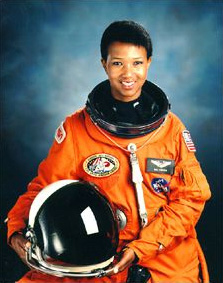
Ask your students to imagine what a conversation would be like between them and a significant African-American contributor to social studies, science, math, or English. What would they ask? What would they want to know?
Present them with the following lists of famous figures and encourage them to choose a person they don't know much about. Then have them research the figure and create a dialogue (written conversation) between themselves and the person. The dialogue should discuss important experiences in the person’s life and work.
Use this minilesson to help your students create a historical dialogue.
- Writing an Arts & Performance Review
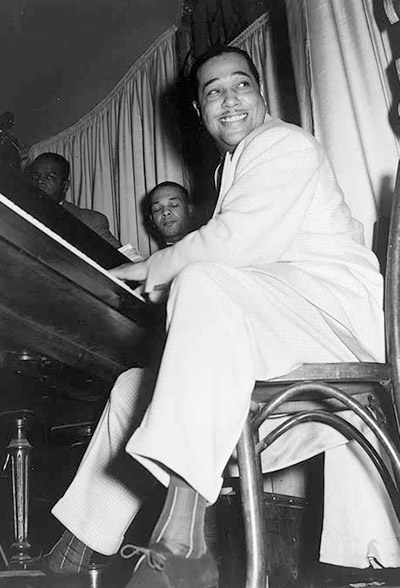
Discuss the significance of the Harlem Renaissance, an era in the 1920s and 30s that is considered a golden age for African-American art, music, dance, and literature. Show this video to give a brief overview of the period.
Then ask your students to pretend that they are entertainment critics in New York City during this era. Explain that their editor (you) has assigned them to write a review of a special piece of art from the period. Have them choose between the following options, or allow them to seek other art and entertainment from the period:
- Song: “It Don’t Mean a Thing” by Duke Ellington
- Song: “Nobody Knows When You’re Down and Out” by Bessie Smith
- Painting: Jeunesse by Palmer Hayden
- Poem: “I, Too, Sing America” by Langston Hughes
- Dance: The Lindy Hop
Have students complete background research on the artist, writer, musician, or performance they chose. Then assign a written review in which students do the following tasks:
- Give their opinions of the art or performance.
- Give examples from the art or performance to support their views.
- Use specific details to describe something special about the sights, sounds, colors, or words.
- Provide background information about the artist, writer, performer, or genre.
- Describe how the piece fits within the larger culture of the Harlem Renaissance.
Use this minilesson to help your students write an arts and performance review.
Writing a List Poem
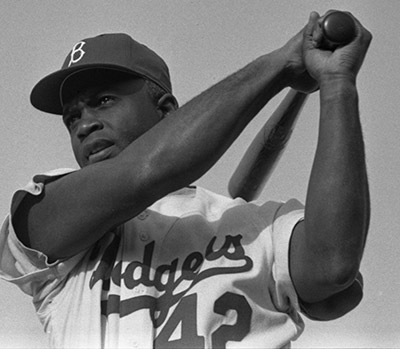
Help your students create list poems, which playfully explore a topic by listing people, places, things, or ideas. Often the title says what the list is about. Advise students that list poems do not necessarily need to include rhythm or rhyme, but each word should be carefully chosen and memorable.
Present the example below. Then ask students to write their own list poems based on the same title, or allow them to choose different topics related to Black History Month.
Black History Is
Frederick at a lectern
Harriet along a railroad
Rosa aboard a bus
Martin amid a march
Thurgood inside a courtroom
Nine outside a schoolhouse
Jackie at the ball diamond
Mae beyond the Earth
Barack atop the polls
Use this minilesson to help your students write a list poem.
Debating the Issues
Many of the writers, artists, and political figures that drove African-American history did so by crafting powerful arguments. Inspire your students to build their own arguments about key issues by presenting them with the following debatable statements.
- African-Americans’ fight for social justice ended after the Civil Rights Movement.
- The Academy Awards need to do a better job of recognizing African-Americans’ contributions in cinema.
- Black History Month isn’t needed because black history is American history.
- Black culture is becoming more distinct as history moves forward.
Ask students to pick a statement that they have strong feelings about. Do they agree or disagree? Have students research their topics to create argumentative essays that either support or counter the statements they've chosen. Introduce them to the 7 C’s for Building an Argument to help them develop their essays. Emphasize that students should consider both sides of the issue and support their own stance in a respectful manner.
(Neftali / Shutterstock.com, Oldrich / Shutterstock.com, catwalker / Shutterstock.com, YANGCHAO / Shutterstock.com, Boris15 / Shutterstock.com, catwalker / Shutterstock.com, BokehStock / Shutterstock.com, Neftali / Shutterstock.com)
"Mae Jemison" by NASA - http://grin.hq.nasa.gov/ABSTRACTS/GPN-2004-00020.html. Licensed under Public Domain via Wikimedia Commons - https://commons.wikimedia.org/wiki/File:Mae_Jemison.jpg#/media/File:Mae_Jemison.jpg
"Duke Ellington at the Hurricane Club 1943". Licensed under Public Domain via Wikimedia Commons - https://commons.wikimedia.org/wiki/File:Duke_Ellington_at_the_Hurricane_Club_1943.jpg#/media/File:Duke_Ellington_at_the_Hurricane_Club_1943.jpg
"Jrobinson" by Photo by Bob Sandberg Look photographer - Licensed under Public Domain via Wikimedia Commons - https://commons.wikimedia.org/wiki/File:Jrobinson.jpg#/media/File:Jrobinson.jpg
Teacher Support:
Click to find out more about this resource.
Standards Correlations:
The State Standards provide a way to evaluate your students' performance.
- 110.22.b.10
- 110.22.b.11.C
- LAFS.6.W.1.1
- 110.22.b.11.B
- LAFS.6.W.1.2
- 110.22.b.11.A
- LAFS.6.W.1.3
- 110.22.b.12
- LAFS.6.W.3.7
- 110.22.b.12.D
- 110.22.b.12.E
- 110.22.b.12.F
- 110.22.b.12.G
- LAFS.6.W.3.8
- 110.22.b.6.C
- LAFS.6.W.3.9
- 110.23.b.10
- 110.23.b.11.C
- LAFS.7.W.1.1
- 110.23.b.11.B
- LAFS.7.W.1.2
- 110.23.b.11.A
- LAFS.7.W.1.3
- 110.23.b.12
- LAFS.7.W.3.7
- 110.23.b.12.D
- 110.23.b.12.E
- 110.23.b.12.F
- LAFS.7.W.3.8
- 110.23.b.6.C
- 110.23.b.8.D
- 110.23.b.8.E
- LAFS.7.W.3.9
- 110.24.b.10
- 110.24.b.11.C
- LAFS.8.W.1.1
- 110.24.b.11.B
- LAFS.8.W.1.2
- 110.24.b.11.A
- LAFS.8.W.1.3
- 110.24.b.12
- LAFS.8.W.3.7
- 110.24.b.12.D
- 110.24.b.12.E
- 110.24.b.12.F
- 110.24.b.12.G
- 110.24.b.12.H
- 110.24.b.12.I
- LAFS.8.W.3.8
- 110.24.b.10.B.ii
- 110.24.b.6.C
- LAFS.8.W.3.9
- 110.36.c.10.C
- 110.37.c.10.C
- LAFS.910.W.1.1
- LA 10.2.1.b
- LA 10.2.2.a
- 110.36.c.10.B
- LAFS.910.W.1.2
- 110.36.c.10.A
- 110.37.c.10.A
- LAFS.910.W.1.3
- 110.36.c.11
- 110.37.c.11
- LAFS.910.W.3.7
- LA 10.2.2.c
- 110.36.c.11.E
- 110.36.c.11.F
- 110.36.c.11.G
- 110.37.c.11.E
- 110.37.c.11.F
- 110.37.c.11.G
- LAFS.910.W.3.8
- LA 10.2.1.c
- LA 10.2.1.i
- 110.36.c.5.C
- 110.37.c.5.C
- LAFS.910.W.3.9
- LA 10.2.2.b
- 110.38.c.10.C
- 110.39.c.10.C
- LAFS.1112.W.1.1
- LA 12.2.1.b
- LA 12.2.2.a
- 110.38.c.10.B
- 110.39.c.10.B
- LAFS.1112.W.1.2
- 110.38.c.10.A
- 110.39.c.10.A
- LAFS.1112.W.1.3
- 110.38.c.11
- 110.39.c.11
- LAFS.1112.W.3.7
- LA 12.2.2.c
- 110.38.c.11.E
- 110.38.c.11.F
- 110.38.c.11.G
- 110.39.c.11.E
- 110.39.c.11.F
- 110.39.c.11.G
- LAFS.1112.W.3.8
- LA 12.2.1.c
- LA 12.2.1.i
- LA 12.2.2.b
- 110.38.c.5.D
- 110.38.c.4.H
- 110.39.c.5.D
- 110.39.c.4.H
- LAFS.1112.W.3.9
Related Resources
All resources.
- The music that moves me most
- An all-new album from an important artist
- Adam’s Train of Ghosts
- A remarkable artist
- Writing Nonfiction Reviews
- Writing Fiction Reviews
- Writing Historical Narratives
- Writing Opinion Essays
- Practice Test for Reading and Writing Nonfiction
- Write on Course 20-20
- Writers Express
- Write on Track
- Write Away Teacher's Guide
- History Classics
- Your Profile
- Find History on Facebook (Opens in a new window)
- Find History on Twitter (Opens in a new window)
- Find History on YouTube (Opens in a new window)
- Find History on Instagram (Opens in a new window)
- Find History on TikTok (Opens in a new window)
- This Day In History
- History Podcasts
- History Vault
Black History Milestones: Timeline
By: History.com Editors
Updated: January 24, 2024 | Original: October 14, 2009

Black history in the United States is a rich and varied chronicle of slavery and liberty, oppression and progress, segregation and achievement. Though captive and free Africans were likely present in the Americas by the 1400s, the kidnapped men, women and children from Africa who were sold first to European colonists in 1619, and later to American citizens, became symbolic of the early years of Black history in the United States.
The fate of enslaved people in the United States divided the nation during the Civil War . And after the war, the racist legacy of slavery persisted, spurring movements of resistance, including the Underground Railroad , the Montgomery Bus Boycott , the Selma to Montgomery March , and, later, the Black Lives Matter movement . Through it all, Black leaders, artists and writers have emerged to shape the character and identity of a nation.
Slavery Comes to North America, 1619
To satisfy the labor needs of the rapidly growing North American colonies, white European settlers turned in the early 17th century from indentured servants (mostly poorer Europeans) to a cheaper, more plentiful labor source: enslaved Africans. After 1619, when a Dutch ship brought 20 Africans ashore at the British colony of Jamestown, Virginia , slavery spread quickly through the American colonies. Though it is impossible to give accurate figures, some historians have estimated that 6 to 7 million enslaved people were imported to the New World during the 18th century alone, depriving the African continent of its most valuable resource—its healthiest and ablest men and women.
After the American Revolution , many colonists (particularly in the North, where slavery was relatively unimportant to the economy) began to link the oppression of enslaved Africans to their own oppression by the British. Though leaders such as George Washington and Thomas Jefferson —both slaveholders from Virginia—took cautious steps towards limiting slavery in the newly independent nation, the Constitution tacitly acknowledged the institution, guaranteeing the right to repossess any “person held to service or labor” (an obvious euphemism for slavery).
Many northern states had abolished slavery by the end of the 18th century, but the institution was absolutely vital to the South, where Black people constituted a large minority of the population and the economy relied on the production of crops like tobacco and cotton. Congress outlawed the import of new enslaved people in 1808, but the enslaved population in the U.S. nearly tripled over the next 50 years, and by 1860 it had reached nearly 4 million, with more than half living in the cotton–producing states of the South.
Rise of the Cotton Industry, 1793

In the years immediately following the Revolutionary War , the rural South—the region where slavery had taken the strongest hold in North America—faced an economic crisis. The soil used to grow tobacco, then the leading cash crop, was exhausted, while products such as rice and indigo failed to generate much profit. As a result, the price of enslaved people was dropping, and the continued growth of slavery seemed in doubt.
Around the same time, the mechanization of spinning and weaving had revolutionized the textile industry in England, and the demand for American cotton soon became insatiable. Production was limited, however, by the laborious process of removing the seeds from raw cotton fibers, which had to be completed by hand.
In 1793, a young Yankee schoolteacher named Eli Whitney came up with a solution to the problem: The cotton gin, a simple mechanized device that efficiently removed the seeds, could be hand–powered or, on a large scale, harnessed to a horse or powered by water. The cotton gin was widely copied, and within a few years the South would transition from a dependence on the cultivation of tobacco to that of cotton.
As the growth of the cotton industry led inexorably to an increased demand for enslaved Africans, the prospect of slave rebellion—such as the one that triumphed in Haiti in 1791—drove slaveholders to make increased efforts to prevent a similar event from happening in the South. Also in 1793, Congress passed the Fugitive Slave Act , which made it a federal crime to assist an enslaved person trying to escape. Though it was difficult to enforce from state to state, especially with the growth of abolitionist feeling in the North, the law helped enshrine and legitimize slavery as an enduring American institution.
Nat Turner’s Revolt, August 1831
In August 1831, Nat Turner struck fear into the hearts of white Southerners by leading the only effective slave rebellion in U.S. history. Born on a small plantation in Southampton County, Virginia, Turner inherited a passionate hatred of slavery from his African–born mother and came to see himself as anointed by God to lead his people out of bondage.
In early 1831, Turner took a solar eclipse as a sign that the time for revolution was near, and on the night of August 21, he and a small band of followers killed his owners, the Travis family, and set off toward the town of Jerusalem , where they planned to capture an armory and gather more recruits. The group, which eventually numbered around 75 Black people, killed some 60 white people in two days before armed resistance from local white people and the arrival of state militia forces overwhelmed them just outside Jerusalem. Some 100 enslaved people, including innocent bystanders, lost their lives in the struggle. Turner escaped and spent six weeks on the run before he was captured, tried and hanged.
Oft–exaggerated reports of the insurrection—some said that hundreds of white people had been killed—sparked a wave of anxiety across the South. Several states called special emergency sessions of the legislature, and most strengthened their codes in order to limit the education, movement and assembly of enslaved people. While supporters of slavery pointed to the Turner rebellion as evidence that Black people were inherently inferior barbarians requiring an institution such as slavery to discipline them, the increased repression of southern Black people would strengthen anti–slavery feeling in the North through the 1860s and intensify the regional tensions building toward civil war.

Abolitionism and the Underground Railroad, 1831
The early abolition movement in North America was fueled both by enslaved people's efforts to liberate themselves and by groups of white settlers, such as the Quakers , who opposed slavery on religious or moral grounds. Though the lofty ideals of the Revolutionary era invigorated the movement, by the late 1780s it was in decline, as the growing southern cotton industry made slavery an ever more vital part of the national economy. In the early 19th century, however, a new brand of radical abolitionism emerged in the North, partly in reaction to Congress’ passage of the Fugitive Slave Act of 1793 and the tightening of codes in most southern states. One of its most eloquent voices was William Lloyd Garrison, a crusading journalist from Massachusetts , who founded the abolitionist newspaper The Liberator in 1831 and became known as the most radical of America’s antislavery activists.
Antislavery northerners—many of them free Black people—had begun helping enslaved people escape from southern plantations to the North via a loose network of safe houses as early as the 1780s called the Underground Railroad.
Dred Scott Case, March 6, 1857

On March 6, 1857, the U.S. Supreme Court handed down its decision in Scott v. Sanford, delivering a resounding victory to southern supporters of slavery and arousing the ire of northern abolitionists. During the 1830s, the owner of an enslaved man named Dred Scott had taken him from the slave state of Missouri to the Wisconsin territory and Illinois , where slavery was outlawed, according to the terms of the Missouri Compromise of 1820.
Upon his return to Missouri, Scott sued for his freedom on the basis that his temporary removal to free soil had made him legally free. The case went to the Supreme Court, where Chief Justice Roger B. Taney and the majority eventually ruled that Scott was an enslaved person and not a citizen, and thus had no legal rights to sue.
According to the Court, Congress had no constitutional power to deprive persons of their property rights when dealing with enslaved people in the territories. The verdict effectively declared the Missouri Compromise unconstitutional, ruling that all territories were open to slavery and could exclude it only when they became states.
While much of the South rejoiced, seeing the verdict as a clear victory, antislavery northerners were furious. One of the most prominent abolitionists, Frederick Douglass , was cautiously optimistic, however, wisely predicting that—"This very attempt to blot out forever the hopes of an enslaved people may be one necessary link in the chain of events preparatory to the complete overthrow of the whole slave system.”
John Brown's Raid, October 16, 1859
A native of Connecticut , John Brown struggled to support his large family and moved restlessly from state to state throughout his life, becoming a passionate opponent of slavery along the way. After assisting in the Underground Railroad out of Missouri and engaging in the bloody struggle between pro- and anti-slavery forces in Kansas in the 1850s, Brown grew anxious to strike a more extreme blow for the cause.
On the night of October 16, 1859, he led a small band of less than 50 men in a raid against the federal arsenal at Harper’s Ferry, Virginia. Their aim was to capture enough ammunition to lead a large operation against Virginia’s slaveholders. Brown’s men, including several Black people, captured and held the arsenal until federal and state governments sent troops and were able to overpower them.
John Brown was hanged on December 2, 1859. His trial riveted the nation, and he emerged as an eloquent voice against the injustice of slavery and a martyr to the abolitionist cause. Just as Brown’s courage turned thousands of previously indifferent northerners against slavery, his violent actions convinced slave owners in the South beyond doubt that abolitionists would go to any lengths to destroy the "peculiar institution.” Rumors spread of other planned insurrections, and the South reverted to a semi-war status. Only the election of the anti–slavery Republican Abraham Lincoln as president in 1860 remained before the southern states would begin severing ties with the Union, sparking the bloodiest conflict in American history.
Civil War and Emancipation, 1861
In the spring of 1861, the bitter sectional conflicts that had been intensifying between North and South over the course of four decades erupted into civil war, with 11 southern states seceding from the Union and forming the Confederate States of America . Though President Abraham Lincoln ’s antislavery views were well established, and his election as the nation’s first Republican president had been the catalyst that pushed the first southern states to secede in late 1860, the Civil War at its outset was not a war to abolish slavery. Lincoln sought first and foremost to preserve the Union, and he knew that few people even in the North—let alone the border slave states still loyal to Washington—would have supported a war against slavery in 1861.
By the summer of 1862, however, Lincoln had come to believe he could not avoid the slavery question much longer. Five days after the bloody Union victory at Antietam in September, he issued a preliminary emancipation proclamation; on January 1, 1863, he made it official that enslaved people within any State, or designated part of a State in rebellion, “shall be then, thenceforward, and forever free.” Lincoln justified his decision as a wartime measure, and as such he did not go so far as to free enslaved people in the border states loyal to the Union, an omission that angered many abolitionists.
By freeing some 3 million enslaved people in the rebel states, the Emancipation Proclamation deprived the Confederacy of the bulk of its labor forces and put international public opinion strongly on the Union side. Some 186,000 Black soldiers would join the Union Army by the time the war ended in 1865, and 38,000 lost their lives. The total number of dead at war’s end was 620,000 (out of a population of some 35 million), making it the costliest conflict in American history.
The Post-Slavery South, 1865
Though the Union victory in the Civil War gave some 4 million enslaved people their freedom, significant challenges awaited during the Reconstruction period. The 13th Amendment , adopted late in 1865, officially abolished slavery, but the question of freed Black peoples’ status in the post–war South remained. As white southerners gradually reestablished civil authority in the former Confederate states in 1865 and 1866, they enacted a series of laws known as the Black Codes , which were designed to restrict freed Black peoples’ activity and ensure their availability as a labor force.
Impatient with the leniency shown toward the former Confederate states by Andrew Johnson , who became president after Lincoln’s assassination in April 1865, so-called Radical Republicans in Congress overrode Johnson’s veto and passed the Reconstruction Act of 1867, which basically placed the South under martial law. The following year, the 14th Amendment broadened the definition of citizenship, granting "equal protection” of the Constitution to people who had been enslaved. Congress required southern states to ratify the 14th Amendment and enact universal male suffrage before they could rejoin the Union, and the state constitutions during those years were the most progressive in the region’s history.
The 15th Amendment , adopted in 1870, guaranteed that a citizen’s right to vote would not be denied—on account of race, color, or previous condition of servitude.” During Reconstruction, Black Americans won election to southern state governments and even to the U.S. Congress. Their growing influence greatly dismayed many white southerners, who felt control slipping ever further away from them. The white protective societies that arose during this period—the largest of which was the Ku Klux Klan (KKK)—sought to disenfranchise Black voters by using voter suppression and intimidation as well as more extreme violence. By 1877, when the last federal soldiers left the South and Reconstruction drew to a close, Black Americans had seen dishearteningly little improvement in their economic and social status, and what political gains they had made had been wiped away by the vigorous efforts of white supremacist forces throughout the region.
'Separate But Equal,' 1896
As Reconstruction drew to a close and the forces of white supremacy regained control from carpetbaggers (northerners who moved South) and freed Black people, Southern state legislatures began enacting the first segregation laws, known as the “Jim Crow” laws . Taken from a much-copied minstrel routine written by a white actor who performed often in blackface , the name “Jim Crow” came to serve as a general derogatory term for African Americans in the post-Reconstruction South.
By 1885, most southern states had laws requiring separate schools for Black and white students, and by 1900, “persons of color” were required to be separated from white people in railroad cars and depots, hotels, theaters, restaurants, barber shops and other establishments. On May 18, 1896, the U.S. Supreme Court issued its verdict in Plessy v. Ferguson , a case that represented the first major test of the meaning of the 14th Amendment’s provision of full and equal citizenship to African Americans.
By an 8–1 majority, the Court upheld a Louisiana law that required the segregation of passengers on railroad cars. By asserting that the equal protection clause was not violated as long as reasonably equal conditions were provided to both groups, the Court established the “separate but equal” doctrine that would thereafter be used for assessing the constitutionality of racial segregation laws. Plessy vs. Ferguson stood as the overriding judicial precedent in civil rights cases until 1954, when it was reversed by the Court’s verdict in Brown v. Board of Education .
Washington, Carver & Du Bois, 1900

As the 19th century came to an end and segregation took ever stronger hold in the South, many African Americans saw self-improvement, especially through education, as the single greatest opportunity to escape the indignities they suffered. Many Black people looked to Booker T. Washington , the author of the bestselling Up From Slavery (1900), as an inspiration. As president of Alabama’s Tuskegee Normal and Industrial Institute, Washington urged Black Americans to acquire the kind of industrial or vocational training (such as farming, mechanics and domestic service) that would give them the necessary skills to carve out a niche for themselves in the U.S. economy. George Washington Carver , another formerly enslaved man and the head of Tuskegee’s agriculture department, helped liberate the South from its reliance on cotton by convincing farmers to plant peanuts, soybeans and sweet potatoes in order to rejuvenate the exhausted soil.
By 1940, peanuts had become the second cash crop in the South. Like Washington, Carver had little interest in racial politics, and was celebrated by many white Americans as a shining example of a modest, industrious Black man. While Washington and Carver represented a philosophy of accommodation to white supremacy, another prominent Black educator, the Harvard-trained historian and sociologist W.E.B. Du Bois, became a leading voice in the growing Black protest movement during the first half of the 20th century. In his 1903 book Souls of Black Folk , Du Bois spoke strongly against Washington’s advocacy of industrial education, which he saw as too narrow and economically focused, and stressed the importance of higher education for African Americans.
NAACP Founded, 1909
In June 1905, a group led by the prominent Black educator W.E.B. Du Bois met at Niagara Falls , Canada, sparking a new political protest movement to demand civil rights for Black people in the old spirit of abolitionism. As America’s exploding urban population faced shortages of employment and housing, violent hostility towards Black people had increased around the country; lynching, though illegal, was a widespread practice. A wave of race riots—particularly one in Springfield, Illinois in 1908—lent a sense of urgency to the Niagara Movement and its supporters, who in 1909 joined their agenda with that of a new permanent civil rights organization, the National Association for the Advancement of Colored People ( NAACP ). Among the NAACP’s stated goals were the abolition of all forced segregation, the enforcement of the 14th and 15th Amendments, equal education for Black and white students and complete enfranchisement of all Black men. (Though proponents of female suffrage were part of the original NAACP, the issue was not mentioned.)
First established in Chicago , the NAACP had expanded to more than 400 locations by 1921. One of its earliest programs was a crusade against lynching and other lawless acts. Those efforts—including a nationwide protest of D.W. Griffiths’ silent film Birth of a Nation (1915), which glorified white supremacy and the Ku Klux Klan—would continue into the 1920s, playing a crucial role in drastically reducing the number of lynchings carried out in the United States.
Du Bois edited the NAACP’s official magazine, The Crisis , from 1910 to 1934, publishing many of the leading voices in African American literature and politics and helping fuel the spread of the Harlem Renaissance in the 1920s.
Marcus Garvey and the UNIA, 1916
Born in Jamaica, the Black nationalist leader Marcus Garvey founded his Universal Negro Improvement Association (UNIA) there in 1914; two years later, he brought it to the United States. Garvey appealed to the racial pride of African Americans, exalting blackness as strong and beautiful. As racial prejudice was so ingrained in white civilization, Garvey claimed, it was futile for Black people to appeal to white peoples’ sense of justice and democratic principles. Their only hope, according to him, was to flee America and return to Africa to build a country of their own. After an unsuccessful appeal to the League of Nations to settle a colony in Africa and failed negotiations with Liberia, Garvey announced the formation of the Empire of Africa in 1921, with himself as provisional president.
Other African American leaders, notably W.E.B. Du Bois of the National Association for the Advancement of Colored People (NAACP), criticized Garvey and his “Back to Africa” movement; he was openly contemptuous of them in return. There was no denying the movement’s appeal, however. Garvey’s boast of 6 million followers in 1923 was probably exaggerated, but even his critics admitted that the UNIA had some 500,000 members. In 1923, the U.S. government successfully prosecuted and convicted Garvey for mail fraud in connection with selling stock in his Black Star Line shipping company. After serving a two-year jail sentence, Garvey was pardoned by President Calvin Coolidge and immediately deported; he died in London in 1940.
Harlem Renaissance, 1920

In the 1920s, the great migration of Black Americans from the rural South to the urban North sparked an African American cultural renaissance that took its name from the New York City neighborhood of Harlem but became a widespread movement in cities throughout the North and West. Also known as the Black Renaissance or the New Negro Movement, the Harlem Renaissance marked the first time that mainstream publishers and critics turned their attention seriously to African American literature, music, art and politics. Blues singer Bessie Smith, pianist Jelly Roll Morton, bandleader Louis Armstrong, composer Duke Ellington, dancer Josephine Baker and actor Paul Robeson were among the leading entertainment talents of the Harlem Renaissance, while Paul Laurence Dunbar, James Weldon Johnson, Claude McKay, Langston Hughes and Zora Neale Hurston were some of its most eloquent writers.
There was a flip side to this greater exposure, however: Emerging Black writers relied heavily on white-owned publications and publishing houses, while in Harlem’s most famous cabaret, the Cotton Club, the preeminent Black entertainers of the day played to exclusively white audiences. In 1926, a controversial bestseller about Harlem life by the white novelist Carl von Vechten exemplified the attitude of many white urban sophisticates, who looked to Black culture as a window into a more “primitive” and “vital” way of life. W.E.B. Du Bois, for one, railed against Van Vechten’s novel and criticized works by Black writers, such as McKay’s novel Home to Harlem , that he saw as reinforcing negative stereotypes of Black people. With the onset of the Great Depression , as organizations like the NAACP and the National Urban League switched their focus to the economic and political problems facing Black Americans, the Harlem Renaissance drew to a close. Its influence had stretched around the world, opening the doors of mainstream culture to Black artists and writers.
African Americans in WWII, 1941
During World War II , many African Americans were ready to fight for what President Franklin D. Roosevelt called the “Four Freedoms”—freedom of speech, freedom of worship, freedom from want and freedom from fear—even while they themselves lacked those freedoms at home. More than 3 million Black Americans would register for service during the war, with some 500,000 seeing action overseas. According to War Department policy, enlisted Black and white people were organized into separate units. Frustrated Black servicemen were forced to combat racism even as they sought to further U.S. war aims; this became known as the “Double V” strategy, for the two victories they sought to win.
The war’s first African American hero emerged from the attack on Pearl Harbor , when Dorie Miller, a young Navy steward on the U.S.S. West Virginia , carried wounded crew members to safety and manned a machine gun post, shooting down several Japanese planes. In the spring of 1943, graduates of the first all-Black military aviation program, created at the Tuskegee Institute in 1941, headed to North Africa as the 99th Pursuit Squadron. Their commander, Captain Benjamin O. Davis Jr., later became one of the first African American generals (his father— General Benjamin O. Davis Sr .—was the first). The Tuskegee Airmen saw combat against German and Italian troops, flew more than 3,000 missions, and served as a great source of pride for many Black Americans.
Aside from celebrated accomplishments like these, overall gains were slow, and maintaining high morale among black forces was difficult due to the continued discrimination they faced. In July 1948, President Harry S. Truman finally integrated the U.S. Armed Forces under an executive order mandating that “there shall be equality of treatment and opportunity for all persons in the armed services without regard to race, color, religion or national origin.”
Jackie Robinson, 1947

By 1900, the unwritten color line barring Black players from white teams in professional baseball was strictly enforced. Jackie Robinson , a sharecropper’s son from Georgia , joined the Kansas City Monarchs of the Negro American League in 1945 after a stint in the U.S. Army (he earned an honorable discharge after facing a court-martial for refusing to move to the back of a segregated bus). His play caught the attention of Branch Rickey, general manager of the Brooklyn Dodgers, who had been considering bringing an end to segregation in baseball. Rickey signed Robinson to a Dodgers farm team that same year and two years later moved him up, making Robinson the first African American player to play on a major league team.
Robinson played his first game with the Dodgers on April 15, 1947; he led the National League in stolen bases that season, earning Rookie of the Year honors. Over the next nine years, Robinson compiled a .311 batting average and led the Dodgers to six league championships and one World Series victory. Despite his success on the field, however, he encountered hostility from both fans and other players. Members of the St. Louis Cardinals even threatened to strike if Robinson played; baseball commissioner Ford Frick settled the question by threatening to suspend any player who went on strike.
After Robinson’s historic breakthrough, baseball was steadily integrated, with professional basketball and tennis following suit in 1950. His groundbreaking achievement transcended sports, and as soon as he signed the contract with Rickey, Robinson became one of the most visible African Americans in the country, and a figure that Black people could look to as a source of pride, inspiration and hope. As his success and fame grew, Robinson began speaking out publicly for Black equality. In 1949, he testified before the House Un-American Activities Committee to discuss the appeal of Communism to Black Americans, surprising them with a ferocious condemnation of the racial discrimination embodied by the Jim Crow segregation laws of the South: “The white public should start toward real understanding by appreciating that every single Negro who is worth his salt is going to resent any kind of slurs and discrimination because of his race, and he’s going to use every bit of intelligence…to stop it…”
Brown v. Board of Education, May 17, 1954

On May 17, 1954, the U.S. Supreme Court delivered its verdict in Brown v. Board of Education , ruling unanimously that racial segregation in public schools violated the 14th Amendment’s mandate of equal protection of the laws of the U.S. Constitution to any person within its jurisdiction. Oliver Brown, the lead plaintiff in the case, was one of almost 200 people from five different states who had joined related NAACP cases brought before the Supreme Court since 1938.
The landmark verdict reversed the “separate but equal” doctrine the Court had established with Plessy v. Ferguson (1896), in which it determined that equal protection was not violated as long as reasonably equal conditions were provided to both groups. In the Brown decision, Chief Justice Earl Warren famously declared that “separate educational facilities are inherently unequal.”
Though the Court’s ruling applied specifically to public schools, it implied that other segregated facilities were also unconstitutional, thus striking a heavy blow to the Jim Crow South. As such, the ruling provoked serious resistance, including a “Southern manifesto” issued by southern congressmen denouncing it. The decision was also difficult to enforce, a fact that became increasingly clear in May 1955 when the Court remanded the case to the courts of origin due to “their proximity to local conditions” and urged “a prompt and reasonable start toward full compliance.” Though some southern schools moved towards integration relatively without incident, in other cases—notably in Arkansas and Alabama—enforcing Brown would require federal intervention.
Emmett Till, August 1955
In August 1955, a 14-year-old black boy from Chicago named Emmett Till had recently arrived in Money, Mississippi to visit relatives. While in a grocery store, he allegedly whistled and made a flirtatious remark to the white woman behind the counter, violating the strict racial codes of the Jim Crow South. Three days later, two white men—the woman’s husband, Roy Bryant, and his half-brother, J.W. Milam—dragged Till from his great uncle’s house in the middle of the night. After beating the boy, they shot him to death and threw his body in the Tallahatchie River. The two men confessed to kidnapping Till but were acquitted of murder charges by an all-white, all-male jury after barely an hour of deliberations. Never brought to justice, Bryant and Milam later shared vivid details of how they killed Till with a journalist for Look magazine, which published their confessions under the headline “The Shocking Story of Approved Killing in Mississippi.”
Till’s mother held an open-casket funeral for her son in Chicago, hoping to bring public attention to the brutal murder. Thousands of mourners attended, and Jet magazine published a photo of the corpse. International outrage over the crime and the verdict helped fuel the civil rights movement: just three months after Emmett Till’s body was found, and a month after a Mississippi grand jury refused to indict Milam and Bryant on kidnapping charges, a citywide bus boycott in Montgomery, Alabama would begin the movement in earnest.
Rosa Parks and the Montgomery Bus Boycott, December 1955

On December 1, 1955, an African American woman named Rosa Parks was riding a city bus in Montgomery, Alabama when the driver told her to give up her seat to a white man. Parks refused and was arrested for violating the city’s racial segregation ordinances, which mandated that Black passengers sit in the back of public buses and give up their seats for white riders if the front seats were full. Parks, a 42-year-old seamstress, was also the secretary of the Montgomery chapter of the NAACP. As she later explained: “I had been pushed as far as I could stand to be pushed. I had decided that I would have to know once and for all what rights I had as a human being and a citizen.”
Four days after Parks’ arrest, an activist organization called the Montgomery Improvement Association—led by a young pastor named Martin Luther King Jr. —spearheaded a boycott of the city’s municipal bus company. Because African Americans made up some 70 percent of the bus company’s riders at the time, and the great majority of Montgomery’s Black citizens supported the bus boycott, its impact was immediate.
About 90 participants in the Montgomery Bus Boycott , including King, were indicted under a law forbidding conspiracy to obstruct the operation of a business. Found guilty, King immediately appealed the decision. Meanwhile, the boycott stretched on for more than a year, and the bus company struggled to avoid bankruptcy. On November 13, 1956, in Browder v. Gayle, the U.S. Supreme Court upheld a lower court’s decision declaring the bus company’s segregation seating policy unconstitutional under the equal protection clause of the 14th Amendment. King, called off the boycott on December 20, and Rosa Parks—known as the “mother of the civil rights movement”—would be one of the first to ride the newly desegregated buses.
Central High School Integrated, September 1957

Although the Supreme Court declared segregation of public schools illegal in Brown v. Board of Education (1954), the decision was extremely difficult to enforce, as 11 southern states enacted resolutions interfering with, nullifying or protesting school desegregation. In Arkansas, Governor Orval Faubus made resistance to desegregation a central part of his successful 1956 reelection campaign.
The following September, after a federal court ordered the desegregation of Central High School, located in the state capital of Little Rock, Faubus called out the Arkansas National Guard to prevent nine African American students from entering the school. He was later forced to call off the guard, and in the tense standoff that followed, TV cameras captured footage of white mobs converging on the “ Little Rock Nine ” outside the high school. For millions of viewers throughout the country, the unforgettable images provided a vivid contrast between the angry forces of white supremacy and the quiet, dignified resistance of African American students.
After an appeal by the local congressman and mayor of Little Rock to stop the violence, President Dwight D. Eisenhower federalized the state’s National Guard and sent 1,000 members of the U.S. Army’s 101st Airborne Division to enforce the integration of Central High School. The nine Black students entered the school under heavily armed guard, marking the first time since Reconstruction that federal troops had provided protection for Black Americans against racial violence. Not done fighting, Faubus closed all of Little Rock’s high schools in the fall of 1958 rather than permit integration. A federal court struck down this act, and four of the nine students returned, under police protection, after the schools were reopened in 1959.
Loving v. Virginia Ruling, 1958

Mildred and Richard Loving were one of the first interracial couples legally married in the United States and their union marked a pivotal moment in marriage rights for mixed-race families. At 2 a.m. on July 11, 1958, Mildred Jeter was lying next to her husband Richard Loving, when police began knocking on their door, demanding to know about the nature of their relationship. At the time, interracial marriage was illegal in Virginia and the newly-wed couple was guilty of breaking the law.
Richard spent the night in prison, and his sister had to pay a $1,000 bond for his release. Mildred, however, spent three nights in a small women’s cell and was released to her father. The couple was then given a choice: spend 25 years in prison or leave Virginia. They chose exile and abandoned the state for nine years, making periodic trips back to visit family while trying to avoid being detected.
Amidst the civil rights movement, ACLU lawyers Bernard S. Cohen and Philip J. Hirschkop decided to take on the couple’s case. They tried to have the case vacated and the ruling overturned without success. They then tried appealing the decision to the Virginia Supreme Court of Appeals, but the court ultimately stuck to the original ruling. The case eventually made its way to the Supreme Court , where a majority of members decided on June 12, 1967, that laws banning interracial marriage were unconstitutional.
Sit-In Movement and Founding of SNCC, 1960
On February 1, 1960, four Black students from the Agricultural and Technical College in Greensboro, North Carolina , sat down at the lunch counter in a local branch of Woolworth’s and ordered coffee. Refused service due to the counter’s "whites-only" policy, they stayed put until the store closed, then returned the next day with other students. Heavily covered by the news media, the Greensboro sit-ins sparked a movement that spread quickly to college towns throughout the South and into the North, as young Black and white people engaged in various forms of peaceful protest against segregation in libraries, on beaches, in hotels and other establishments. Though many protesters were arrested for trespassing, disorderly conduct or disturbing the peace, their actions made an immediate impact, forcing Woolworth’s—among other establishments—to change their segregationist policies.
To capitalize on the sit-in movement ’s increasing momentum, the Student Nonviolent Coordinating Committee ( SNCC ) was founded in Raleigh, North Carolina in April 1960. Over the next few years, SNCC broadened its influence, organizing so-called “Freedom Rides” through the South in 1961 and the historic March on Washington in 1963; it also joined the NAACP in pushing for the passage of the Civil Rights Act of 1964 . Later, SNCC would mount an organized resistance to the Vietnam War . As its members faced increased violence, SNCC became more militant, and by the late 1960s it was advocating the “Black Power” philosophy of Stokely Carmichael (SNCC’s chairman from 1966–67) and his successor, H. Rap Brown. By the early 1970s, SNCC was effectively disbanded.
CORE and Freedom Rides, May 1961
Founded in 1942 by the civil rights leader James Farmer, the Congress of Racial Equality ( CORE ) sought to end discrimination and improve race relations through direct action. In its early years, CORE staged a sit-in at a Chicago coffee shop (a precursor to the successful sit-in movement of 1960) and organized a “Journey of Reconciliation,” in which a group of Black and white activists rode together on a bus through the upper South in 1947, a year after the U.S. Supreme Court banned segregation in interstate bus travel.
In Boynton v. Virginia (1960), the Court extended the earlier ruling to include bus terminals, restrooms and other related facilities, and CORE took action to test the enforcement of that ruling. In May 1961, CORE sent seven African Americans and six white Americans on a “freedom ride” on two buses from Washington, D.C. Bound for New Orleans , the freedom riders were attacked by angry segregationists outside of Anniston, Alabama, and one bus was even firebombed. Local law enforcement responded, but slowly, and U.S. Attorney General Robert F. Kennedy eventually ordered State Highway Patrol protection for the freedom riders to continue to Montgomery, Alabama, where they again encountered violent resistance.
Kennedy sent federal marshals to escort the riders to Jackson, Mississippi, but images of the bloodshed made the worldwide news, and the freedom rides continued. In September, under pressure from CORE and other civil rights organizations, as well as from the attorney general’s office, the Interstate Commerce Commission ruled that all passengers on interstate bus carriers should be seated without regard to race and carriers could not mandate segregated terminals.
Integration of Ole Miss, September 1962
By the end of the 1950s, African Americans had begun to be admitted in small numbers to white colleges and universities in the South without too much incident. In 1962, however, a crisis erupted when the state-funded University of Mississippi (known as “Ole Miss”) admitted a Black man , James Meredith. After nine years in the Air Force, Meredith had studied at the all–Black Jackson State College and applied repeatedly to Ole Miss with no success. With the aid of the NAACP, Meredith filed a lawsuit alleging that the university had discriminated against him because of his race. In September 1962, the U.S. Supreme Court ruled in Meredith’s favor, but state officials including Governor Ross Barnett vowed to block his admission.
When Meredith arrived at Ole Miss under the protection of federal forces including U.S. marshals, a mob of more than 2,000 people formed on the Oxford, Mississippi campus. Two people were killed and close to 200 injured in the ensuing chaos, which ended only after President Kennedy’s administration sent some 31,000 troops to restore order. Meredith went on to graduate from Ole Miss in 1963, but the struggle to integrate higher education continued. Later that year, Governor George Wallace blocked the enrollment of a Black student at the University of Alabama, pledging to “stand in the schoolhouse door.” Though Wallace was eventually forced by the federalized National Guard to integrate the university, he became a prominent symbol of the ongoing resistance to desegregation nearly a decade after Brown v. Board of Education.
Birmingham Church Bombed, 1963
Despite Martin Luther King Jr.’s inspiring words at the Lincoln Memorial during the historic March on Washington in August 1963, violence against Black people in the segregated South continued to indicate the strength of white resistance to the ideals of justice and racial harmony King espoused. In mid-September, white supremacists bombed the 16th Street Baptist Church in Birmingham, Alabama during Sunday services; four young African American girls were killed in the explosion. The church bombing was the third in 11 days after the federal government had ordered the integration of Alabama’s school system.
Governor George Wallace was a leading foe of desegregation, and Birmingham had one of the strongest and most violent chapters of the Ku Klux Klan. Birmingham had become a leading focus of the civil rights movement by the spring of 1963 when Martin Luther King Jr. was arrested there while leading supporters of his Southern Christian Leadership Conference (SCLC) in a nonviolent campaign of demonstrations against segregation.
While in jail, King wrote a letter to local white ministers justifying his decision not to call off the demonstrations in the face of continued bloodshed at the hands of local law enforcement officials, led by Birmingham’s police commissioner, Eugene “Bull” Connor. “Letter from a Birmingham Jail” was published in the national press even as images of police brutality against protesters in Birmingham–including children being attacked by police dogs and knocked off their feet by fire hoses–sent shock waves around the world, helping to build crucial support for the civil rights movement.
'I Have a Dream,' 1963
On August 28, 1963, some 250,000 people—both Black and white—participated in the March on Washington for Jobs and Freedom, the largest demonstration in the history of the nation’s capital and the most significant display of the civil rights movement’s growing strength. After marching from the Washington Monument, the demonstrators gathered near the Lincoln Memorial, where a number of civil rights leaders addressed the crowd, calling for voting rights, equal employment opportunities for Black Americans and an end to racial segregation.
The last leader to appear was the Baptist preacher Martin Luther King Jr. of the Southern Christian Leadership Conference (SCLC), who spoke eloquently of the struggle facing Black Americans and the need for continued action and nonviolent resistance. “ I have a dream ,” King intoned, expressing his faith that one day white and Black people would stand together as equals, and there would be harmony between the races: “I have a dream that my four little children will one day live in a nation where they will not be judged by the color of their skin, but by the content of their character.”
King’s improvised sermon continued for nine minutes after the end of his prepared remarks, and his stirring words would be remembered as undoubtedly one of the greatest speeches in American history. At its conclusion, King quoted an “old Negro spiritual: ‘Free at last! Free at last! Thank God Almighty, we are free at last!'” King’s speech served as a defining moment for the civil rights movement, and he soon emerged as its most prominent figure.
Civil Rights Act of 1964, July 1964
Thanks to the campaign of nonviolent resistance championed by Martin Luther King Jr. beginning in the late 1950s, the civil rights movement had begun to gain serious momentum in the United States by 1960. That year, John F. Kennedy made passage of new civil rights legislation part of his presidential campaign platform; he won more than 70 percent of the African American vote. Congress was debating Kennedy’s civil rights reform bill when he was killed by an assassin’s bullet in Dallas, Texas in November 1963. It was left to Lyndon Johnson (not previously known for his support of civil rights) to push the Civil Rights Act —the most far-reaching act of legislation supporting racial equality in American history—through Congress in June 1964.
At its most basic level, the act gave the federal government more power to protect citizens against discrimination on the basis of race, religion, sex or national origin. It mandated the desegregation of most public accommodations, including lunch counters, bus depots, parks and swimming pools, and established the Equal Employment Opportunity Commission (EEOC) to ensure equal treatment of minorities in the workplace. The act also guaranteed equal voting rights by removing biased registration requirements and procedures and authorized the U.S. Office of Education to provide aid to assist with school desegregation. In a televised ceremony on July 2, 1964, Johnson signed the Civil Rights Act into law using 75 pens; he presented one of them to King, who counted it among his most prized possessions.
Freedom Summer and the 'Mississippi Burning' Murders, June 1964
In the summer of 1964, civil rights organizations including the Congress of Racial Equality (CORE) urged white students from the North to travel to Mississippi, where they helped register Black voters and build schools for Black children. The organizations believed the participation of white students in the so-called “Freedom Summer” would bring increased visibility to their efforts. The summer had barely begun, however, when three volunteers—Michael Schwerner and Andrew Goodman, both white New Yorkers, and James Chaney, a Black Mississippian—disappeared on their way back from investigating the burning of an African American church by the Ku Klux Klan. After a massive FBI investigation (code–named “Mississippi Burning”) their bodies were discovered on August 4 buried in an earthen dam near Philadelphia, in Neshoba County, Mississippi.
Although the culprits in the case—white supremacists who included the county’s deputy sheriff—were soon identified, the state made no arrests. The Justice Department eventually indicted 19 men for violating the three volunteers’ civil rights (the only charge that would give the federal government jurisdiction over the case) and after a three-year-long legal battle, the men finally went on trial in Jackson, Mississippi. In October 1967, an all-white jury found seven of the defendants guilty and acquitted the other nine. Though the verdict was hailed as a major civil rights victory—it was the first time anyone in Mississippi had been convicted for a crime against a civil rights worker—the judge in the case gave out relatively light sentences, and none of the convicted men served more than six years behind bars.
Selma to Montgomery March, March 1965
In early 1965, Martin Luther King Jr.’s Southern Christian Leadership Conference (SCLC) made Selma, Alabama, the focus of its efforts to register Black voters in the South. Alabama’s governor, George Wallace, was a notorious opponent of desegregation, and the local county sheriff had led a steadfast opposition to Black voter registration drives: Only 2 percent of Selma’s eligible Black voters had managed to register. In February, an Alabama state trooper shot a young African American demonstrator in nearby Marion, and the SCLC announced a massive protest march from Selma to the state capital in Montgomery .
On March 7, 600 marchers got as far as the Edmund Pettus Bridge outside Selma when they were attacked by state troopers wielding whips, nightsticks and tear gas. The brutal scene was captured on television, enraging many Americans and drawing civil rights and religious leaders of all faiths to Selma in protest. King himself led another attempt on March 9, but turned the marchers around when state troopers again blocked the road; that night, a group of segregationists fatally beat a protester, the young white minister James Reeb.
On March 21, after a U.S. district court ordered Alabama to permit the Selma-Montgomery march, some 2,000 marchers set out on the three-day journey, this time protected by U.S. Army troops and Alabama National Guard forces under federal control. “No tide of racism can stop us,” King proclaimed from the steps of the state capitol building, addressing the nearly 50,000 supporters—Black and white—who met the marchers in Montgomery.
Malcolm X Shot to Death, February 1965
In 1952, the former Malcolm Little was released from prison after serving six years on a robbery charge; while incarcerated, he had joined the Nation of Islam (NOI, commonly known as the Black Muslims), given up drinking and drugs and replaced his surname with an X to signify his rejection of his “slave” name. Charismatic and eloquent, Malcolm X soon became an influential leader of the NOI, which combined Islam with Black nationalism and sought to encourage disadvantaged young Black people searching for confidence in segregated America.
As the outspoken public voice of the Black Muslim faith, Malcolm challenged the mainstream civil rights movement and the nonviolent pursuit of integration championed by Martin Luther King Jr. Instead, he urged followers to defend themselves against white aggression “by any means necessary.” Mounting tensions between Malcolm and NOI founder Elijah Muhammad led Malcolm to form his own mosque in 1964. He made a pilgrimage to Mecca that same year and underwent a second conversion, this time to Sunni Islam. Calling himself el–Hajj Malik el–Shabazz, he renounced NOI’s philosophy of separatism and advocated a more inclusive approach to the struggle for Black rights.
On February 21, 1965, during a speaking engagement in Harlem, three members of the NOI rushed the stage and shot Malcolm some 15 times at close range. After Malcolm’s death, his bestselling book The Autobiography of Malcolm X popularized his ideas, particularly among Black youth, and laid the foundation for the Black Power movement of the late 1960s and 1970s.
Voting Rights Act of 1965, August 1965
Less than a week after the Selma-to-Montgomery marchers were beaten and bloodied by Alabama state troopers in March 1965, President Lyndon Johnson addressed a joint session of Congress, calling for federal legislation to ensure protection of the voting rights of African Americans. The result was the Voting Rights Act, which Congress passed in August 1965.
The Voting Rights Act sought to overcome the legal barriers that still existed at the state and local levels preventing Black citizens from exercising the right to vote given them by the 15th Amendment. Specifically, it banned literacy tests as a requirement for voting, mandated federal oversight of voter registration in areas where tests had previously been used and gave the U.S. attorney general the duty of challenging the use of poll taxes for state and local elections.
Along with the Civil Rights Act of the previous year, the Voting Rights Act was one of the most expansive pieces of civil rights legislation in American history, and it greatly reduced the disparity between Black and white voters in the U.S. In Mississippi alone, the percentage of eligible Black voters registered to vote increased from 5 percent in 1960 to nearly 60 percent in 1968. In the mid-1960s, 70 African Americans were serving as elected officials in the South, while by the turn of the century there were some 5,000. In the same time period, the number of Black people serving in Congress increased from six to about 40.
Rise of Black Power

After the heady rush of the civil rights movement’s first years, anger and frustration was increasing among many African Americans, who saw clearly that true equality—social, economic and political—still eluded them. In the late 1960s and early 1970s, this frustration fueled the rise of the Black Power movement . According to then–SNCC chairman Stokely Carmichael, who first popularized the term “Black Power” in 1966, the traditional civil rights movement and its emphasis on nonviolence, did not go far enough, and the federal legislation it had achieved failed to address the economic and social disadvantages facing Black Americans.
Black Power was a form of both self-definition and self-defense for African Americans; it called on them to stop looking to the institutions of white America—which were believed to be inherently racist—and act for themselves, by themselves, to seize the gains they desired, including better jobs, housing and education. Also in 1966, Huey P. Newton and Bobby Seale, college students in Oakland, California , founded the Black Panther Party .
While its original mission was to protect Black people from white brutality by sending patrol groups into Black neighborhoods, the Panthers soon developed into a Marxist group that promoted Black Power by urging African Americans to arm themselves and demand full employment, decent housing and control over their own communities. Clashes ensued between the Panthers and police in California, New York and Chicago, and in 1967 Newton was convicted of voluntary manslaughter after killing a police officer. His trial brought national attention to the organization, which at its peak in the late 1960s boasted some 2,000 members.
Fair Housing Act, April 1968
The Fair Housing Act of 1968, meant as a follow-up to the Civil Rights Act of 1964, marked the last great legislative achievement of the civil rights era. Originally intended to extend federal protection to civil rights workers, it was later expanded to address racial discrimination in the sale, rental or financing of housing units. After the bill passed the Senate by an exceedingly narrow margin in early April, it was thought that the increasingly conservative House of Representatives , wary of the growing strength and militancy of the Black Power movement, would weaken it considerably.
On the day of the Senate vote, however, Martin Luther King Jr. was assassinated in Memphis. Pressure to pass the bill increased amid the wave of national remorse that followed, and after a strictly limited debate, the House passed the Fair Housing Act on April 10. President Johnson signed it into law the following day. Over the next years, however, there was little decrease in housing segregation, and violence arose from Black efforts to seek housing in white neighborhoods.
From 1950 to 1980, the total Black population in America’s urban centers increased from 6.1 million to 15.3 million; during this same time period, white Americans steadily moved out of the cities into the suburbs, taking with them many of the employment opportunities Black people needed. In this way, the ghetto—an inner city community plagued by high unemployment, crime and other social ills—became an ever more prevalent fact of urban Black life.
MLK Assassinated, April 4, 1968
On April 4, 1968, the world was stunned and saddened by the news that the civil rights activist and Nobel Peace Prize winner Martin Luther King Jr. had been shot and killed on the balcony of a motel in Memphis, Tennessee , where he had gone to support a sanitation workers’ strike . King’s death opened a huge rift between white and Black Americans, as many Black people saw the killing as a rejection of their vigorous pursuit of equality through the nonviolent resistance he had championed. In more than 100 cities, several days of riots, burning and looting followed his death.
The accused killer, a white man named James Earl Ray, was captured and tried immediately; he entered a guilty plea and was sentenced to 99 years in prison; no testimony was heard. Ray later recanted his confession, and despite several inquiries into the matter by the U.S. government, many continued to believe that the speedy trial had been a cover-up for a larger conspiracy. King’s assassination, along with the killing of Malcolm X three years earlier, radicalized many moderate African American activists, fueling the growth of the Black Power movement and the Black Panther Party.
The success of conservative politicians that year—including Richard Nixon ’s election as president and the third-party candidacy of the ardent segregationist George Wallace, who won 13 percent of the vote—further discouraged African Americans, many of whom felt that the tide was turning against the civil rights movement.
Shirley Chisholm Runs for President, 1972

By the early 1970s, the advances of the civil rights movement had combined with the rise of the feminist movement to create an African American women’s movement. “There can’t be liberation for half a race,” declared Margaret Sloan, one of the women behind the National Black Feminist Organization, founded in 1973. A year earlier, Representative Shirley Chisholm of New York became a national symbol of both movements as the first major party African American candidate and the first female candidate for president of the United States.
A former educational consultant and a founder of the National Women’s Caucus, Chisholm became the first Black woman in Congress in 1968, when she was elected to the House from her Brooklyn district. Though she failed to win a primary, Chisholm received more than 150 votes at the Democratic National Convention. She claimed she never expected to win the nomination. It went to George McGovern, who lost to Richard Nixon in the general election.
The outspoken Chisholm, who attracted little support among African American men during her presidential campaign, later told the press: “I’ve always met more discrimination being a woman than being Black. When I ran for the Congress, when I ran for president, I met more discrimination as a woman than for being Black. Men are men.”
The Bakke Decision and Affirmative Action, 1978
Beginning in the 1960s, the term “affirmative action” was used to refer to policies and initiatives aimed at compensating for past discrimination on the basis of race, color, sex, religion or national origin. President John F. Kennedy first used the phrase in 1961, in an executive order calling on the federal government to hire more African Americans. By the mid 1970s, many universities were seeking to increase the presence of minority and female faculty and students on their campuses. The University of California at Davis, for example, designated 16 percent of its medical school’s admissions spots for minority applicants.
After Allan Bakke, a white California man, applied twice without success, he sued U.C. Davis, claiming that his grades and test scores were higher than those of minority students who were admitted and accusing UC Davis of “reverse discrimination.” In June 1978, in Regents of the University of California v. Bakke, the U.S. Supreme Court ruled that the use of strict racial quotas was unconstitutional and that Bakke should be admitted; on the other hand, it held that institutions of higher education could rightfully use race as a criterion in admissions decisions in order to ensure diversity.
In the wake of the Bakke verdict, affirmative action continued to be a controversial and divisive issue, with a growing opposition movement claiming that the so-called “racial playing field” was now equal and that African Americans no longer needed special consideration to overcome their disadvantages. In subsequent decisions over the next decades, the Court limited the scope of affirmative action programs, while several U.S. states prohibited racially based affirmative action.
Jesse Jackson Galvanizes Black Voters, 1984
As a young man, Jesse Jackson left his studies at the Chicago Theological Seminary to join Martin Luther King Jr.’s Southern Christian Leadership Conference (SCLC) in its crusade for Black civil rights in the South; when King was assassinated in Memphis in April 1968, Jackson was at his side. In 1971, Jackson founded PUSH, or People United to Save Humanity (later changed to People United to Serve Humanity), an organization that advocated self-reliance for African Americans and sought to establish racial parity in the business and financial community.
He was a leading voice for Black Americans during the early 1980s, urging them to be more politically active and heading up a voter registration drive that led to the election of Harold Washington as the first Black mayor of Chicago in 1983. The following year, Jackson ran for the Democratic nomination for president. On the strength of his Rainbow/PUSH Coalition , he placed third in the primaries, propelled by a surge of Black voter participation.
He ran again in 1988 and received 6.6 million votes, or 24 percent of the total primary vote, winning seven states and finishing second behind the eventual Democratic nominee, Michael Dukakis. Jackson’s continued influence in the Democratic Party in the decades that followed ensured that African American issues had an important role in the party’s platform.
Throughout his long career, Jackson has inspired both admiration and criticism for his tireless efforts on behalf of the Black community and his outspoken public persona. His son, Jesse L. Jackson Jr., won election to the U.S. House of Representatives from Illinois in 1995.
Oprah Winfrey Launches Syndicated Talk Show, 1986
Throughout the 1980s and 1990s, the success of the long-running sitcom The Cosby Show —featuring popular comedian Bill Cosby as the doctor patriarch of a close-knit middle-class African American family—helped redefine the image of Black characters on mainstream American television. Suddenly, there was no lack of educated, upwardly mobile, family-oriented Black characters for TV viewers to look to, both in fiction and in life. In 1980, entrepreneur Robert L. Johnson founded Black Entertainment Television (BET), which he later sold to entertainment giant Viacom for some $3 billion. Perhaps the most striking phenomenon, however, was the rise of Oprah Winfrey .
Born in rural Mississippi to a poor unwed teenage mother, Winfrey got her start in television news before taking over a morning talk show in Chicago in 1984. Two years later, she launched her own nationally syndicated talk show, The Oprah Winfrey Show, which would go on to become the highest rated in TV history. Celebrated for her ability to talk candidly about a wide range of issues, Winfrey spun her talk show success into a one-woman empire—including acting, film and television production and publishing.
She notably promoted the work of Black female writers, forming a film company to produce movies based on novels like The Color Purple , by Alice Walker, and Beloved , by Nobel Prize winner Toni Morrison. (She starred in both.) One of the most influential individuals in entertainment and the first Black female billionaire, Winfrey is also an active philanthropist, giving generously to Black South Africans and to the historically Black Morehouse College, among other causes.
Los Angeles Riots, 1992
In March 1991, officers with the California Highway Patrol attempted to pull an African American man named Rodney King over for speeding on a Los Angeles freeway. King, who was on probation for robbery and had been drinking, led them on a high-speed chase, and by the time the patrolmen caught up to his car, several officers of the Los Angeles Police Department were on the scene. After King allegedly resisted arrest and threatened them, four LAPD officers shot him with a TASER gun and severely beat him.
Caught on videotape by an onlooker and broadcast around the world, the beating inspired widespread outrage in the city’s African American community, who had long condemned the racial profiling and abuse its members suffered at the hands of the police force. Many demanded that the unpopular L.A. police chief, Daryl Gates, be fired and that the four officers be brought to justice for their use of excessive force. The King case was eventually tried in the suburb of Simi Valley, and in April 1992 a jury found the officers not guilty.
Rage over the verdict sparked the four days of the L.A. riots , beginning in the mostly Black South Central neighborhood. By the time the riots subsided, some 55 people were dead, more than 2,300 injured, and more than 1,000 buildings had been burned. Authorities later estimated the total damage at around $1 billion. The next year, two of the four LAPD officers involved in the beating were retried and convicted in a federal court for violating King’s civil rights; he eventually received $3.8 million from the city in a settlement.
Million Man March, 1995
In October 1995, hundreds of thousands of Black men gathered in Washington, D.C. for the Million Man March, one of the largest demonstrations of its kind in the capital’s history. Its organizer, Minister Louis Farrakhan, had called for “a million sober, disciplined, committed, dedicated, inspired Black men to meet in Washington on a day of atonement.” Farrakhan, who had asserted control over the Nation of Islam (commonly known as the Black Muslims) in the late 1970s and reasserted its original principles of Black separatism, may have been an incendiary figure, but the idea behind the Million Man March was one most Black—and many white—people could get behind.
The march was intended to bring about a kind of spiritual renewal among Black men and to instill in them a sense of solidarity and of personal responsibility to improve their own condition. It would also, organizers believed, disprove some of the stereotypical negative images of Black men that existed in American society.
By that time, the U.S. government’s “war on drugs” had sent a disproportionate number of African Americans to prison, and by 2000, more Black men were incarcerated than in college. Estimates of the number of participants in the Million Man March ranged from 400,000 to more than 1 million, and its success spurred the organization of a Million Woman March, which took place in 1997 in Philadelphia.
Colin Powell Becomes Secretary of State, 2001
As chairman of the Joint Chiefs of Staff from 1989 to 1993—the first African American to hold that position—the Vietnam veteran and four–star U.S. Army general Colin Powell played an integral role in planning and executing the first Persian Gulf War under President George H.W. Bush . After his retirement from the military in 1993, many people began floating his name as a possible presidential candidate. He decided against running, but soon became a prominent fixture in the Republican Party.
In 2001, George W. Bush appointed Powell as secretary of state, making him the first African American to serve as America’s top diplomat. Powell sought to build international support for the controversial U.S invasion of Iraq in 2003, delivering a divisive speech to the United Nations regarding that country’s possession of weapons material that was later revealed to be based on faulty intelligence. He resigned after Bush’s reelection in 2004.
In another history-making appointment, Condoleezza Rice, Bush’s longtime foreign policy adviser and the former head of the National Security Council, succeeded Powell, becoming the first African American woman to serve as secretary of state. Though he largely stayed out of the political spotlight after stepping down, Powell remained an admired figure in Washington and beyond.
Though he continued to brush off any speculation of a possible future presidential run, Powell made headlines during the 2008 presidential campaign when he broke from the Republican party to endorse Barack Obama , the eventual winner and the first African American to be elected president of the United States.
Barack Obama Becomes 44th US President, 2008
On January 20, 2009, Barack Obama was inaugurated as the 44th president of the United States; he is the first African American to hold that office. The product of an interracial marriage—his father grew up in a small village in Kenya, his mother in Kansas—Obama grew up in Hawaii but discovered his civic calling in Chicago, where he worked for several years as a community organizer on the city’s largely Black South Side.
After studying at Harvard Law School and practicing constitutional law in Chicago, he began his political career in 1996 in the Illinois State Senate and in 2004 announced his candidacy for a newly vacant seat in the U.S. Senate . He delivered a rousing keynote speech at that year’s Democratic National Convention, attracting national attention with his eloquent call for national unity and cooperation across party lines. In February 2007, just months after he became only the third African American elected to the U.S. Senate since Reconstruction, Obama announced his candidacy for the 2008 Democratic presidential nomination.
After withstanding a tight Democratic primary battle with Hillary Clinton, the New York senator and former first lady, Obama defeated Senator John McCain of Arizona in the general election that November. Obama’s appearances in both the primaries and the general election drew impressive crowds, and his message of hope and change—embodied by the slogan “Yes We Can”—inspired thousands of new voters, many young and Black, to cast their vote for the first time in the historic election. He was reelected in 2012.
The Black Lives Matter Movement
The term “Black lives matter” was first used by organizer Alicia Garza in a July 2013 Facebook post in response to the acquittal of George Zimmerman, a Florida man who shot and killed unarmed 17-year-old Trayvon Martin on February 26, 2012. Martin’s death set off nationwide protests like the Million Hoodie March. In 2013, Patrisse Cullors, Alicia Garza, and Opal Tometi formed the Black Lives Matter Network with the mission to “eradicate white supremacy and build local power to intervene in violence inflicted on Black communities by the state and vigilantes.”
The hashtag #BlackLivesMatter first appeared on Twitter on July 13, 2013, and spread widely as high-profile cases involving the deaths of Black civilians provoked renewed outrage.
A series of deaths of Black Americans at the hands of police officers continued to spark outrage and protests, including Eric Garner in New York City, Michael Brown in Ferguson, Missouri, Tamir Rice in Cleveland Ohio and Freddie Gray in Baltimore, Maryland.
The Black Lives Matter movement gained renewed attention on September 25, 2016, when San Francisco 49ers players Eric Reid, Eli Harold, and quarterback Colin Kaepernick kneeled during the national anthem before the game against the Seattle Seahawks to draw attention to recent acts of police brutality. Dozens of other players in the NFL and beyond followed suit.
George Floyd Protests

The movement swelled to a critical juncture on May 25, 2020, in the midst of the COVID-19 epidemic when 46-year-old George Floyd died after being handcuffed and pinned to the ground by police officer Derek Chauvin.
Chauvin was filmed kneeling on Floyd’s neck for more than eight minutes. Floyd had been accused of using a counterfeit $20 bill at a local deli in Minneapolis. All four officers involved in the incident were fired. In April 2021, Chauvin was convicted of second-degree unintentional murder, third-degree murder and second-degree manslaughter. In February 2022, the three other officers were found guilty of depriving Floyd of his civil rights when they helped with the restraint that led to his death.
Floyd’s killing came on the heels of two other high-profile cases in 2020. On February 23, 25-year-old Ahmaud Arbery was killed while out on a run after being followed by three white men in a pickup truck. And on March 13, 26-year-old EMT Breonna Taylor was shot eight times and killed after police broke down the door to her apartment while executing a nighttime warrant.
On May 26, 2020, the day after Floyd’s death, protestors in Minneapolis took to the streets to protest Floyd’s killing. Police cars were set on fire and officers released tear gas to disperse crowds. After months of quarantine and isolation during a global pandemic, protests mounted, spreading across the country in the following days and weeks.

Kamala Harris Becomes the First Woman and First Black US Vice President, 2021
In January 2021, Kamala Harris became the first woman and first woman of color to become vice president of the United States. Then-candidate Joe Biden had nominated Harris in August 2020 during the Democratic party’s “remote” national convention. Harris, whose mother immigrated to the United States from India and whose father immigrated from Jamaica, was the first person of African or Asian descent to become a major party’s vice presidential candidate—and the first to win the office.
In her victory speech in November 2020, Harris said that she was thinking "about the generations of women, Black women, Asian, white, Latina, Native American women—who throughout our nation’s history have paved the way for this moment tonight—women who fought and sacrificed so much for equality and liberty and justice for all.”

HISTORY Vault: Black History
Watch acclaimed Black History documentaries on HISTORY Vault.
Ferguson shooting victim Michael Brown. BBC . George Floyd Protests: A Timeline. The New York Times . Tamir Rice. PBS.org. The Matter of Black Lives. The New Yorker . The Hashtag Black Lives Matter. Pew Research . The Path to Eric Garner’s death. The New York Times . Timeline of Murder Trial of Amber Guyger. ABC .

Sign up for Inside History
Get HISTORY’s most fascinating stories delivered to your inbox three times a week.
By submitting your information, you agree to receive emails from HISTORY and A+E Networks. You can opt out at any time. You must be 16 years or older and a resident of the United States.
More details : Privacy Notice | Terms of Use | Contact Us
- Grades 6-12
- School Leaders
FREE Poetry Worksheet Bundle! Perfect for National Poetry Month.
Every product is independently selected by (obsessive) editors. Things you buy through our links may earn us a commission.
40 Black History Month Activities for February and Beyond
Celebrate and inspire with these Black history lesson ideas.

We know that Black history is American history and needs to be embedded into your classroom experiences year-round. At the same time, Black History Month provides the necessary opportunity to dig deeper with students. Every February, we can support students as they learn more, discover cultural impacts, and follow social movements from the past to the present day. These Black History Month lessons and activities cannot be isolated or one-off classroom experiences. Think of how you can connect these topics to what you’re already doing and make it authentic. And most important, do not just focus on oppression: Focus on the joy too!
Since 1928, the Association for the Study of African American Life and History has provided a theme for Black History Month. In 2024, the theme is African Americans and the Arts .
1. Learn the basics about Black History Month
Watch an introductory video about Black History Month. Then ask students to write their questions about Black history and use those to curate your resources and lessons for the month.
2. Re-create civil rights freedom posters

The Civil Rights Movement Veterans site offers powerful examples of freedom movement posters, as does the Civil Rights Digital Library . Review them with your students, and then have them get into groups and create their own to share.
3. Explore Black history through primary sources from the National Archives
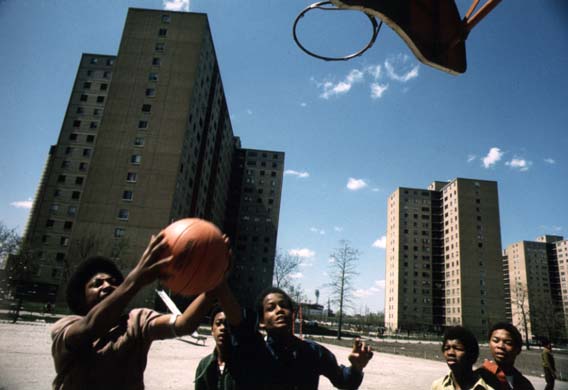
Primary sources are great discussion starters to talk about Black experiences. Choose from thousands of resources , including this 1970s photo series of Chicago.
4. Learn about famous Black artists
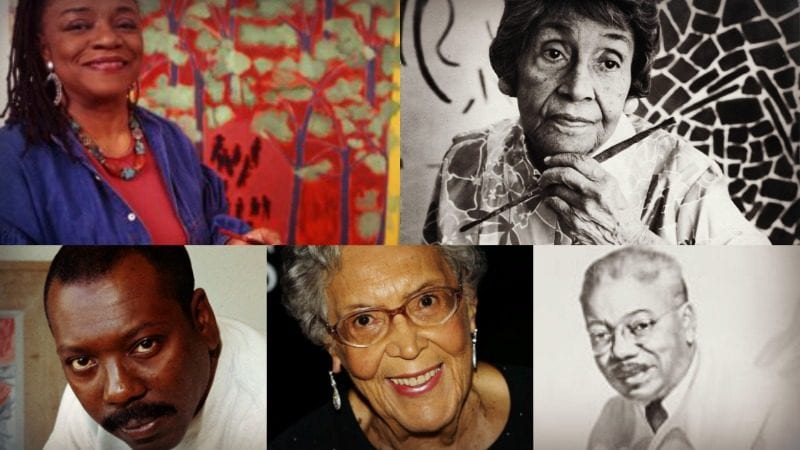
Future Jacob Lawrences and Elizabeth Catletts will appreciate learning more about artists and expanding their own talents. Plus, check out these other Black artists .
5. Watch a Black History Month video
Get more specific information or do a deep dive into an area of Black history with a video about civil rights, slavery, accomplished Black Americans, and more.
Check out this list of Black history videos for students in every grade level.
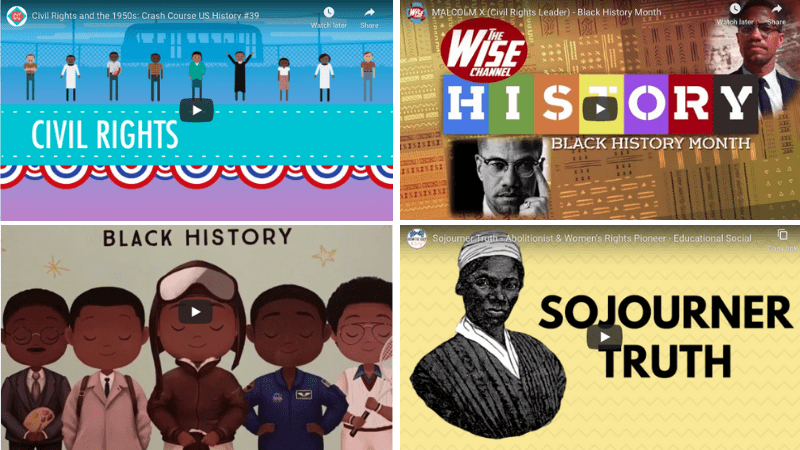
6. Learn about Black Lives Matter
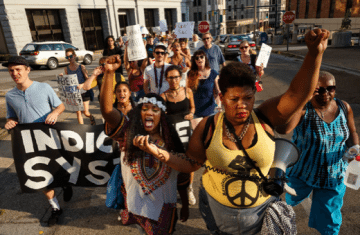
The Black Lives Matter site explains the group’s history while books like Dear Martin and The Hate U Give explore the movement from a fictional perspective.
7. Learn about the inventor of the traffic light
Garrett Morgan invented the traffic light and patented the three-position traffic signal. Teach students about his achievements as an example of how Black Americans impact our everyday experiences. Watch a video about Morgan and talk about what inspired his invention and how being an African American impacted him as an inventor.
Buy it: Garrett Morgan Activity Pack at Amazon
8. Create a newsletter or magazine with content from Black authors
Have your students generate their own newsletter or literacy magazine to distribute to parents. Include poems and short stories by Black authors, as well as student-generated writings and images that center on Black History Month.
9. Read a Black History Month poem
To enhance our conversations this month, we’ve put together this list of powerful Black History Month poems for kids of all ages.
10. Listen to young poet Amanda Gorman
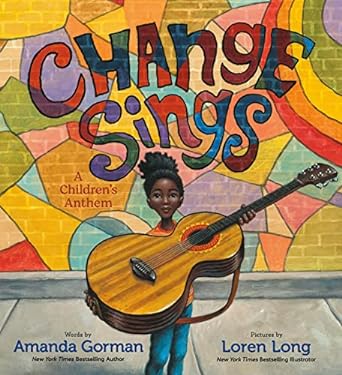
Amanda Gorman is another accomplished Black American and a great introduction to Black poetry. Watch the poem she read at Barack Obama’s inauguration, read her book Change Sings , and learn about her at Poets.org.
Buy it: Change Sings: A Children’s Anthem at Amazon
11. Turn your classroom (or school!) into a history museum
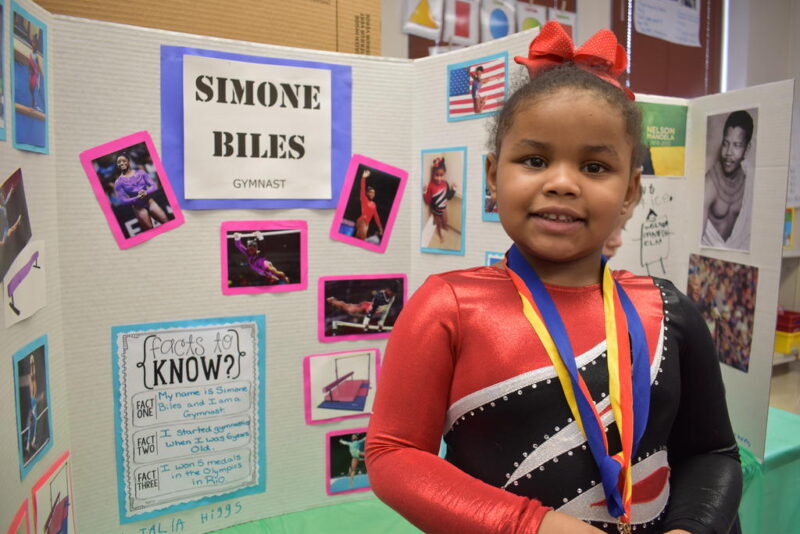
Have your students choose a notable Black pioneer they’d like to know more about, such as voting rights and women’s rights activist Fannie Lou Hamer, dancer Alvin Ailey, or Betty Reid Soskin, the oldest full-time national parks ranger . Then, host a living museum right in your classroom.
12. Decorate your classroom door for Black History Month
Turn your classroom door into an educational experience. Check out how these teachers decorated their classroom doors in amazing ways to showcase Black History Month, and review this video with ideas.
13. Read books with Black characters in honor of Marley Dias
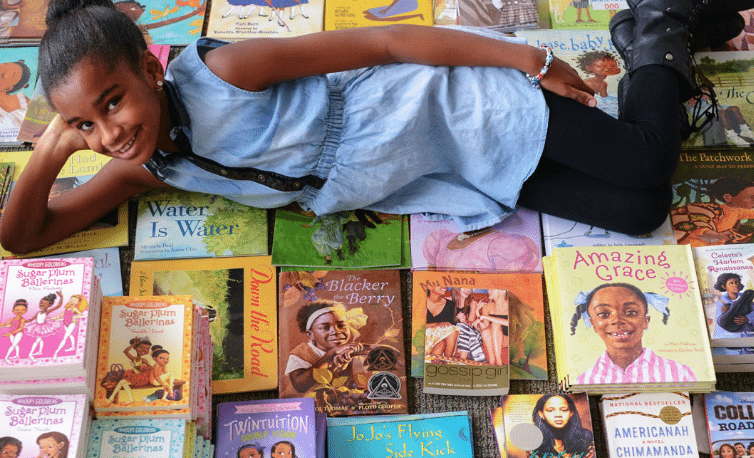
Dias is a young activist who started the #1000blackgirlbooks campaign as a sixth grader. She has compiled an excellent guide to books with Black girl characters . Check out WeAreTeachers’ list of books with Black protagonists as well.
14. Learn the story of the Henrietta Marie
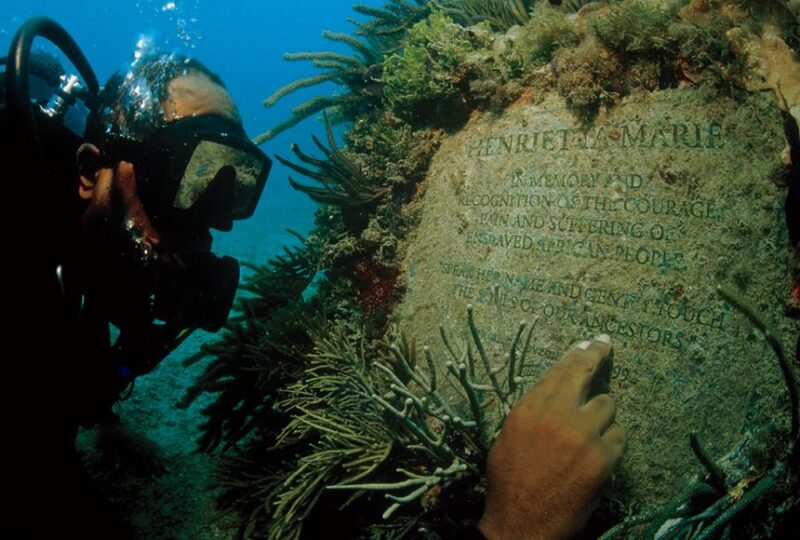
The Henrietta Marie was a slave ship that sunk off the coast of Florida. Learn about the ship, its journey, and the underwater memorial that honors African slaves. Get more information about the Henrietta Marie at National Geographic.
15. Experience the I Have a Dream speech from multiple perspectives
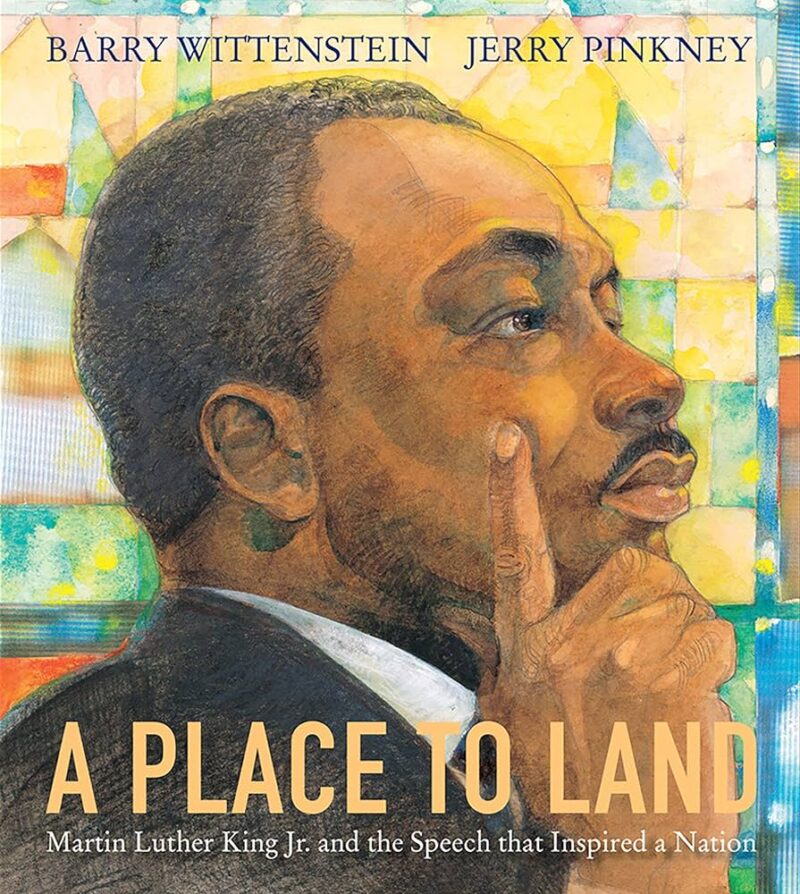
Read A Place to Land: Martin Luther King Jr. and the Speech that Inspired a Nation by Barry Wittenstein. Then, watch the I Have a Dream Speech online, and explore resources about the speech at National Geographic . Engage students in discussing why this speech is so important in American history and why it continues to resonate today.
Buy it: A Place to Land at Amazon
16. Meet Oprah
Oprah Winfrey is a name every student knows, learn more about this influential Black American in this interview:
17. Read Black History Month books
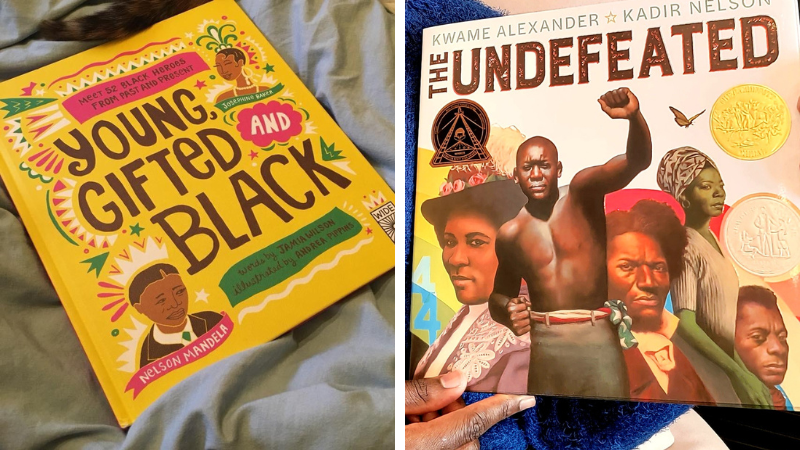
If you’re looking for more reading activities, these picture books help celebrate Black History Month and educate your students on how these influential Black people helped shape history.
18. Learn the art of stepping
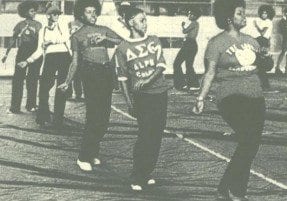
Stepping is a form of dancing in which the body itself is used to create unique rhythms and sounds. The website Step Afrika! has videos and information about the history of stepping.
19. Take a virtual field trip to the Schomburg Center for Research in Black Culture
![Roy Bryant [Misc.] Black and white photo from the Emmett Till Project](https://www.weareteachers.com/wp-content/uploads/GettyImages-50346751_master.jpg)
The digital collections of the Schomburg Center, located in New York City’s Harlem neighborhood, feature some amazing online exhibits, interviews, and podcasts.
20. Virtually visit the Smithsonian National Museum of African American History and Culture
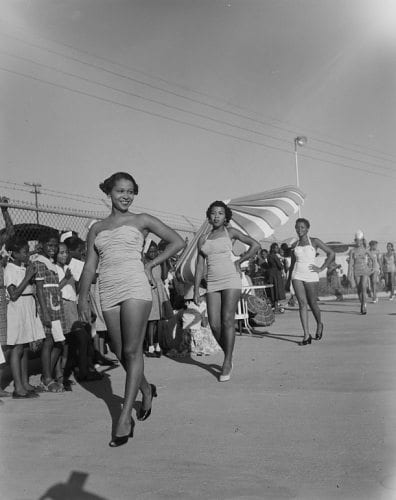
You can browse the collection online by topic, date, or place.
21. Host a poetry reading featuring works by Black poets
Have students choose a poem by a Black poet to learn and recite for the class. Choose a student to serve as the emcee, write up a program, and set the tone with dimmed lights and jazz music played between performances. The Poetry Foundation has excellent resources that can help get you started.
Here’s inspiration with Maya Angelou’s Still I Rise:
22. Check out online Black history exhibits
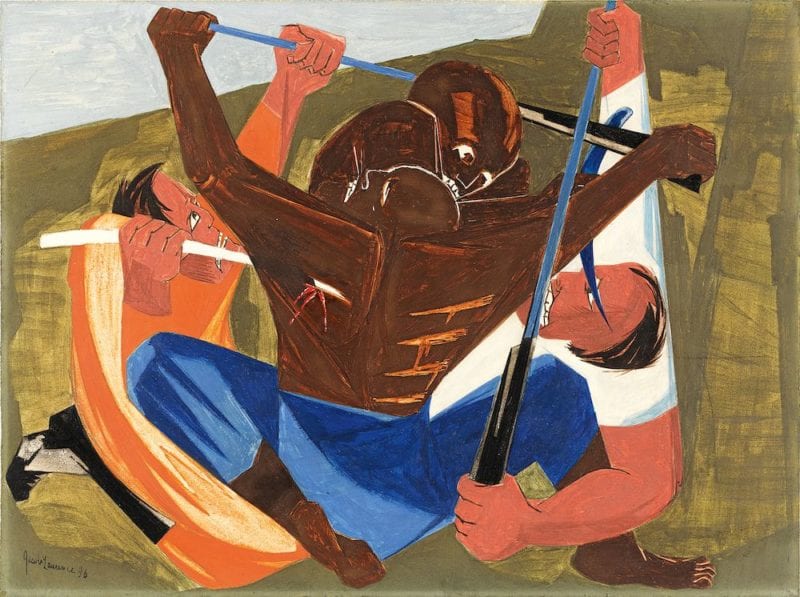
Educating yourself and your students with these shows is one more way to understand Black history and the current moment.
23. Dive into Georgia Stories: Black History Collection on PBS
As a state, Georgia played a huge role in the 2020 presidential election, and its Black history dates back to the earliest days of slavery in the colony.
24. Discuss implicit bias, systemic racism, and social justice
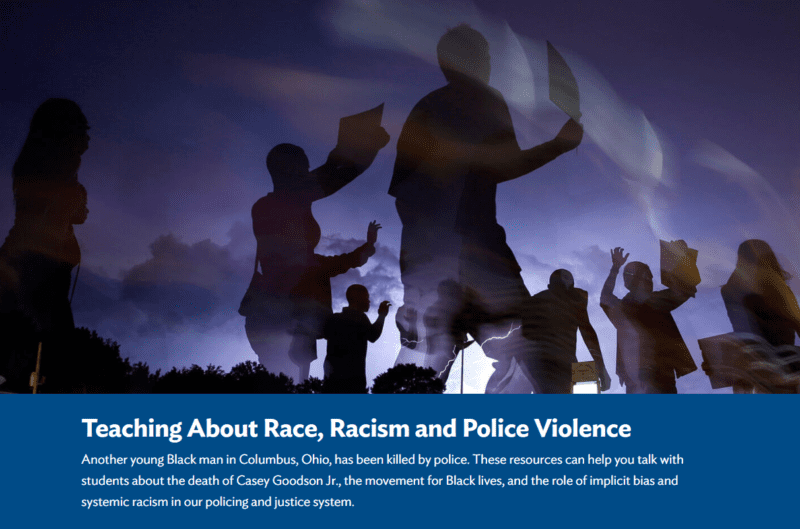
Start a much-needed discussion around implicit bias and systemic racism with these resources that can empower students to fight for justice in our society.
25. Read and discuss Freedom in Congo Square
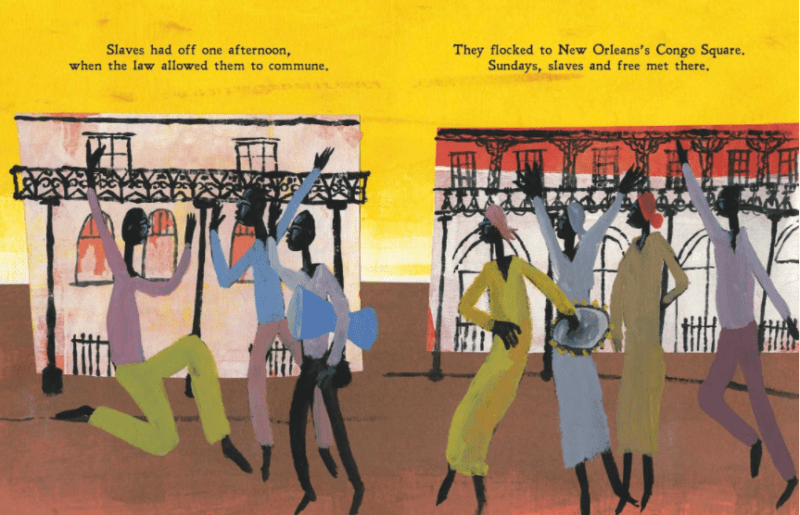
The award-winning picture book Freedom in Congo Square by Carole Boston Weatherford and R. Gregory Christie is a nonfiction children’s book that describes the tyranny of slavery to help young readers understand how jubilant Sundays were for slaves.
Buy it: Freedom in Congo Square at Amazon
26. Watch Kevin Hart’s Guide to Black History
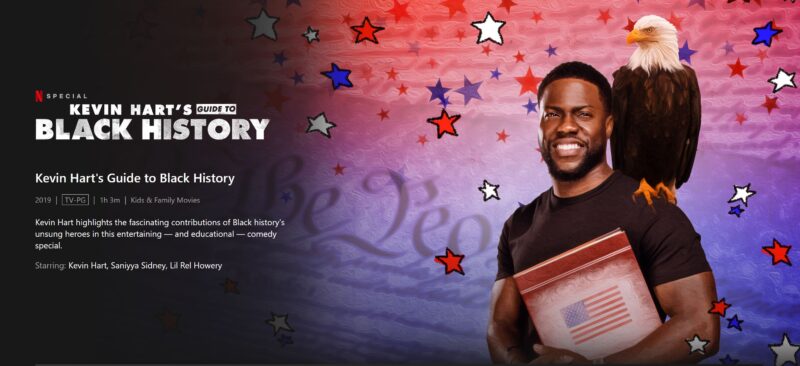
Kevin Hart highlights the fascinating contributions of Black history’s unsung heroes in this entertaining—and educational—comedy special.
27. Recognize Black visionaries
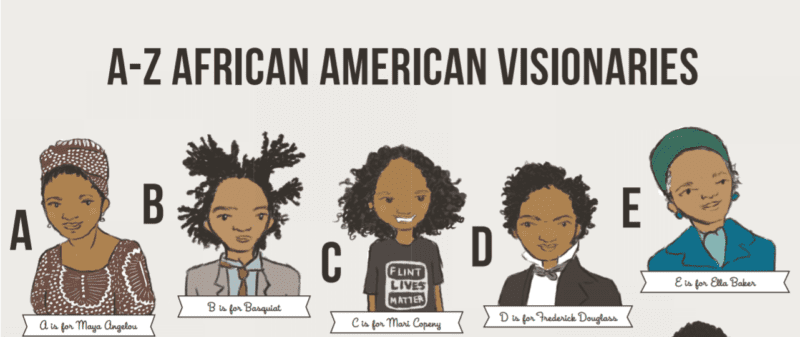
This great poster featuring activists, artists, authors, and revolutionaries will highlight Black changemakers in your classroom. Use companion activities to deepen understanding by researching several of the visionaries and asking students to write a story or create their own poster about what they’ve learned.
28. Review a timeline of Black history
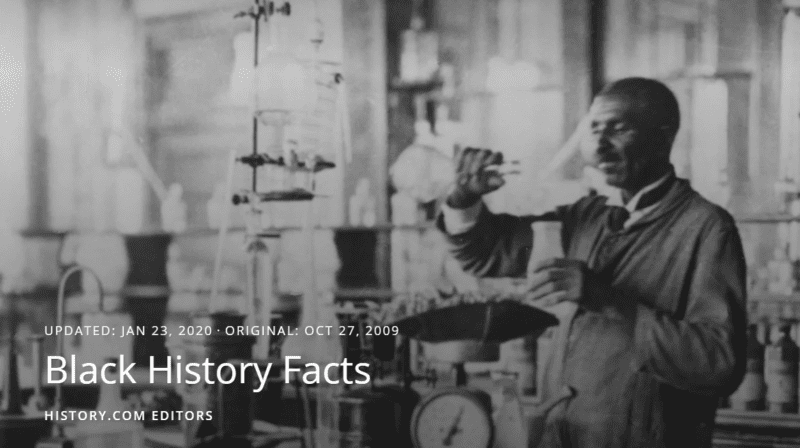
Why is Black History Month in February? How long ago was it founded, and who started it? Find the answers to these questions and learn more with this timeline .
29. Explore the music of Black artists
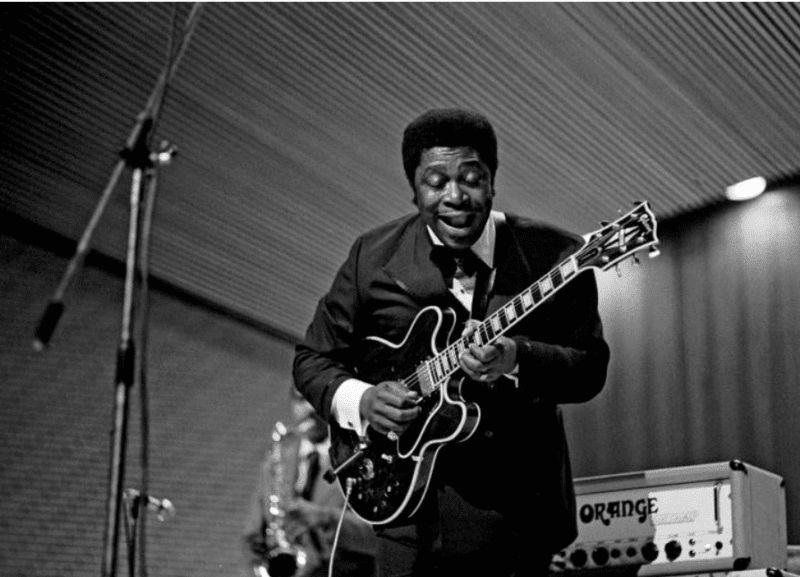
This lesson traces the long history of how Black artists have used music as a vehicle for communicating beliefs, aspirations, observations, joy, despair, resistance, and more across U.S. history.
30. Sample Black-founded snack brands

Honor Black History Month with delicious snacks from Black-founded brands delivered to your classroom—5% of proceeds are donated to the Equal Justice Initiative and one meal is donated to Feeding America for every box delivered.
31. Understand the role of Black women in NASA’s history
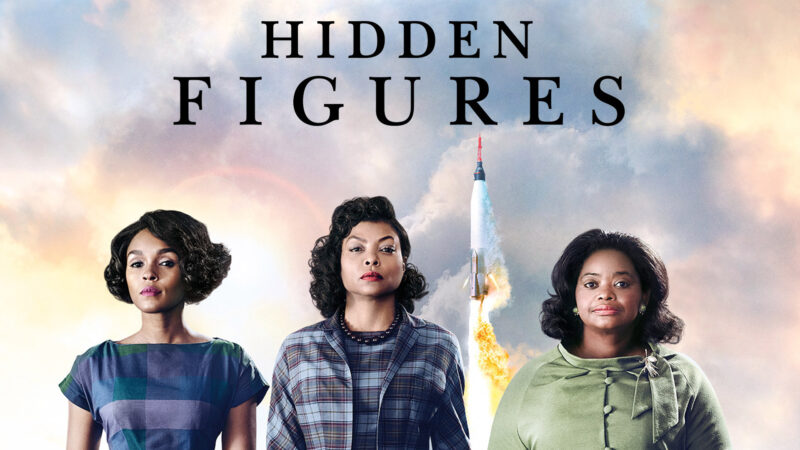
How much do your students know about Black contributions to space exploration? Rent the film Hidden Figures and watch with your students to remember, honor, and share the incredible accomplishments of three Black women working on NASA’s space flight program. Before watching the movie, research the liberties the film took in telling the story and discuss with your students the function of the choices. Did the filmmakers make the right choices?
Watch it: Hidden Figures at Amazon
32. Support local Black-owned businesses
Research your city’s Black-owned businesses and see if you can purchase a sample of their products, invite some of the entrepreneurs to speak to your class, or book a field trip!
33. Stream Bookmarks: Celebrating Black Voices on Netflix
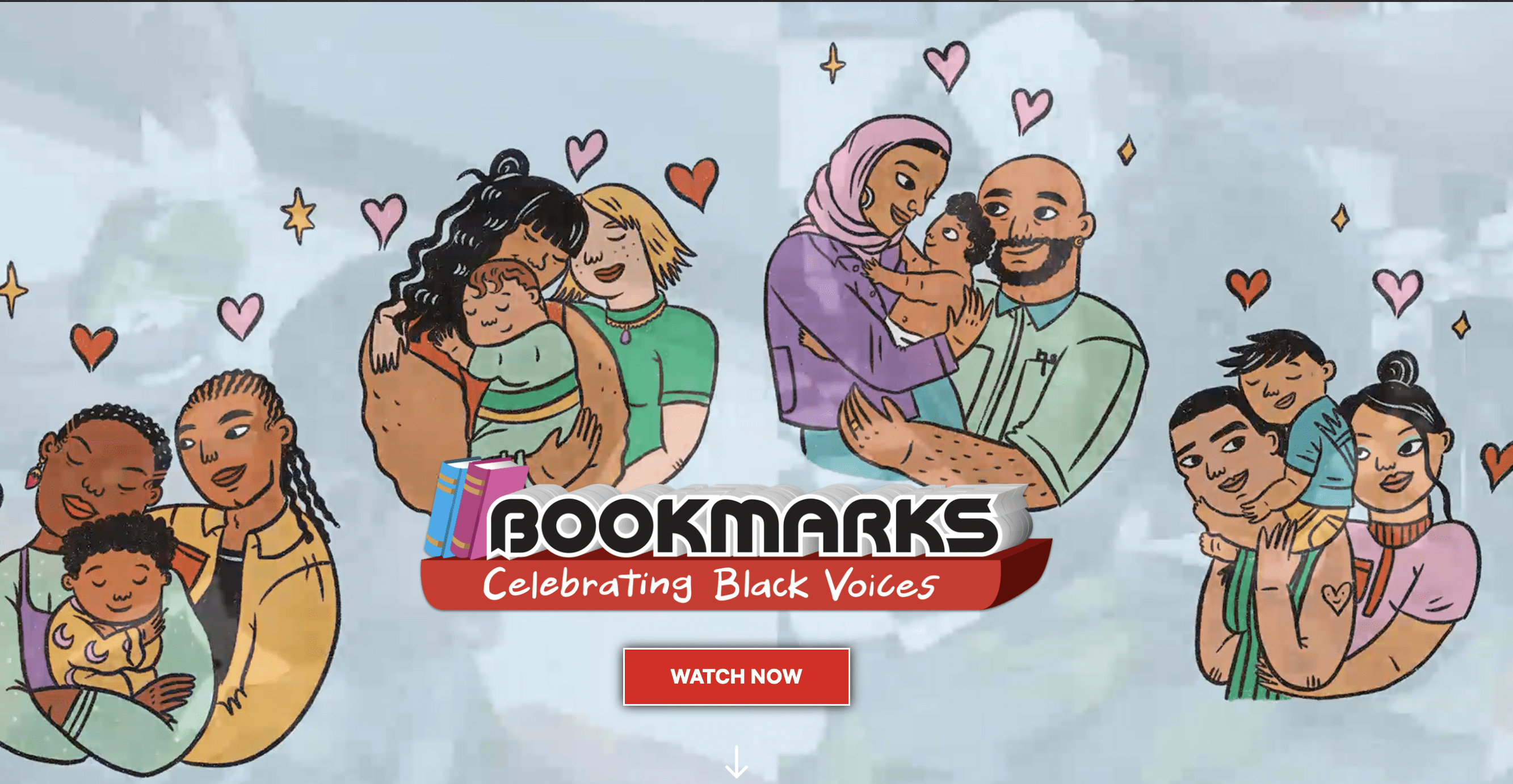
“ Bookmarks: Celebrating Black Voices is a live-action collection of 12 five-minute episodes featuring prominent Black celebrities and artists reading children’s books from Black authors that highlight the Black experience.”
34. Celebrate the “Black Lives Matter at School” movement
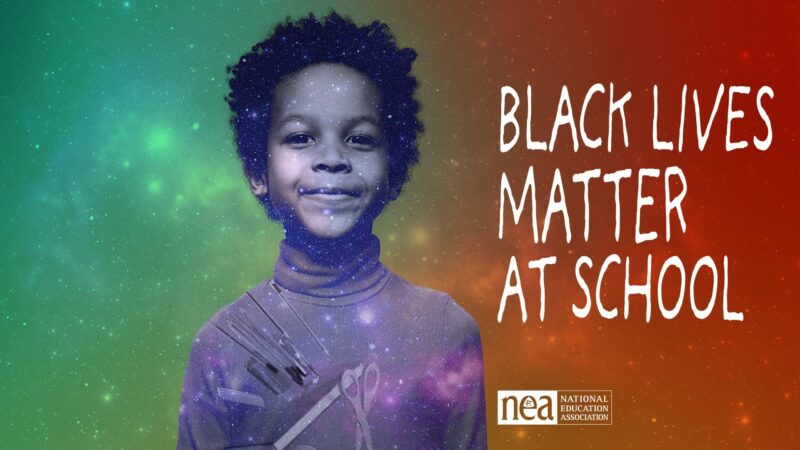
“Black Lives Matter at School” is a national coalition organized for racial justice in education. It encourages all educators, students, parents, unions, and community organizations to join an annual week of action during the first week of February each year. For a variety of Black History Month activities, visit their website to learn more about their campaign .
35. Watch a historic moment
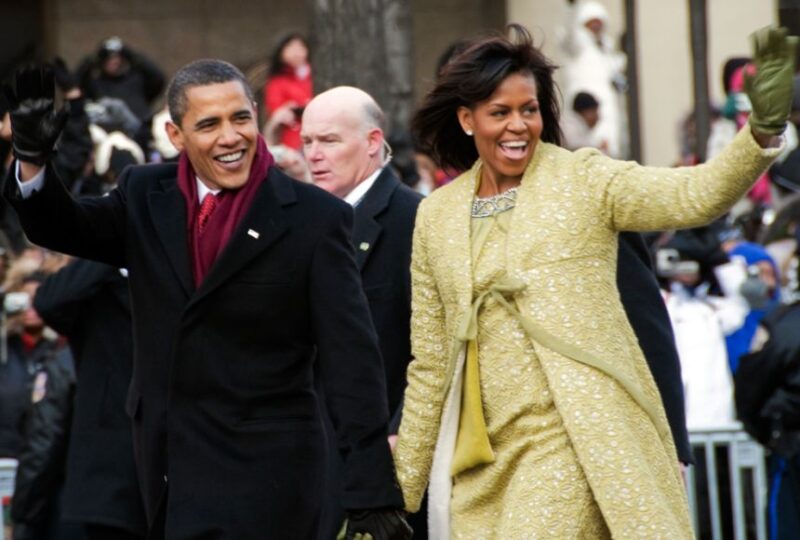
When Barack Obama was inaugurated in 2009, it was a monumental day for Black History. Watch his inauguration and discuss what this meant for American history.
36. Analyze Hair Love
You can approach the book Hair Love by Matthew Cherry in a few ways. Talk about the importance of representation in picture books and media, have students share their connections with the story, or analyze the book as a story about modern Black families.
Buy it: Hair Love at Amazon
37. Study the Underground Railroad
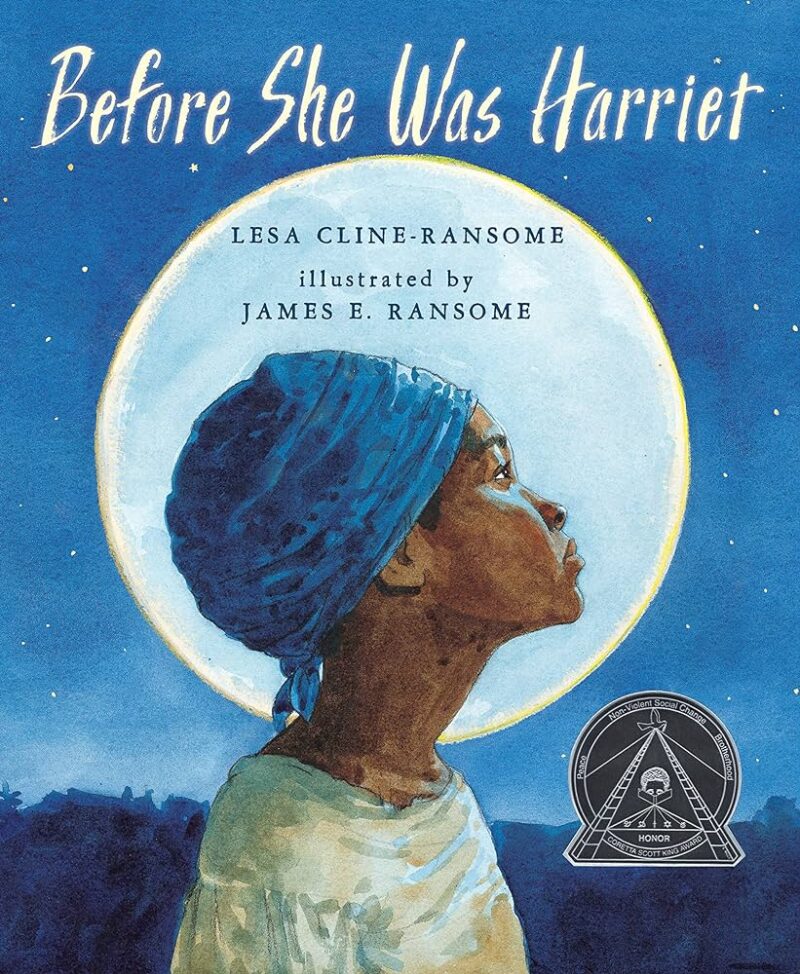
Examine the Underground Railroad using various sources, like the picture book biography Before She Was Harriet by Lesa Cline-Ransome. National Geographic has a collection of resources about the Underground Railroad . And you can take a virtual tour of the Harriet Tubman museum.
Buy it: Before She Was Harriet at Amazon
38. Research Juneteenth
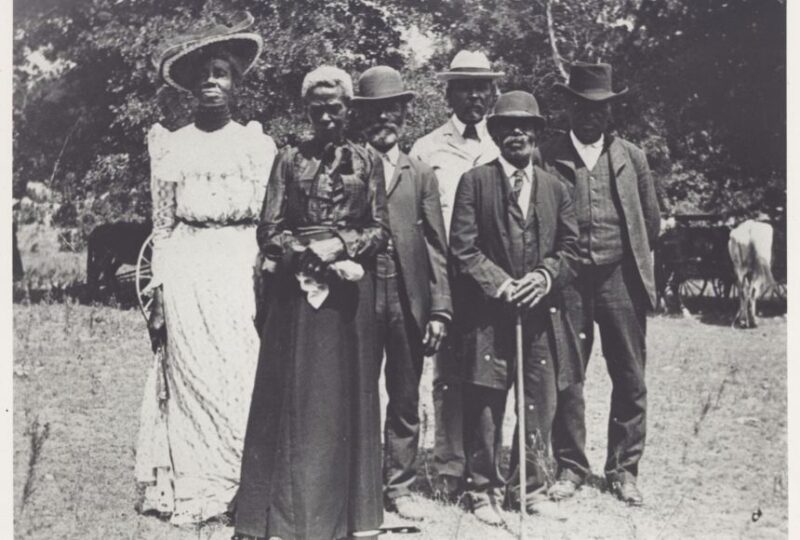
Juneteenth is a holiday that celebrates the freedom of enslaved people. Learn about Juneteenth , how it came about, and what it means to Black Americans with these National Geographic resources.
39. Listen to musician Rhiannon Giddens
As she was trying to understand and make sense of violence against Black Americans in 2020, folk musician Rhiannon Giddens wrote and released the song “Build a House.” The song came out on the 155th anniversary of Juneteenth. The song, which was made into a picture book, captures 400 years of Black history in a lyrical and thoughtful way. Use Giddens’ book either to introduce or wrap up a month on Black history.
Read an essay about the song , and watch the video.
Buy it: Build a House at Amazon
40. Study the pivotal court case Loving v. Virginia
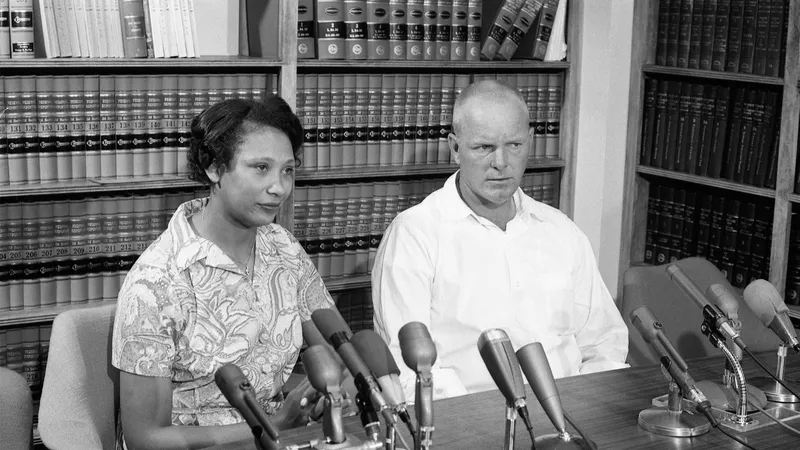
Loving v. Virginia, decided in 1967, made marriage between people of different races legal. Learn about the Loving decision and why it’s important at National Geographic.
Plus, get inspiration from these Black History Month bulletin boards for your classroom .
Want more articles like this subscribe to our newsletters to find out when they’re posted.
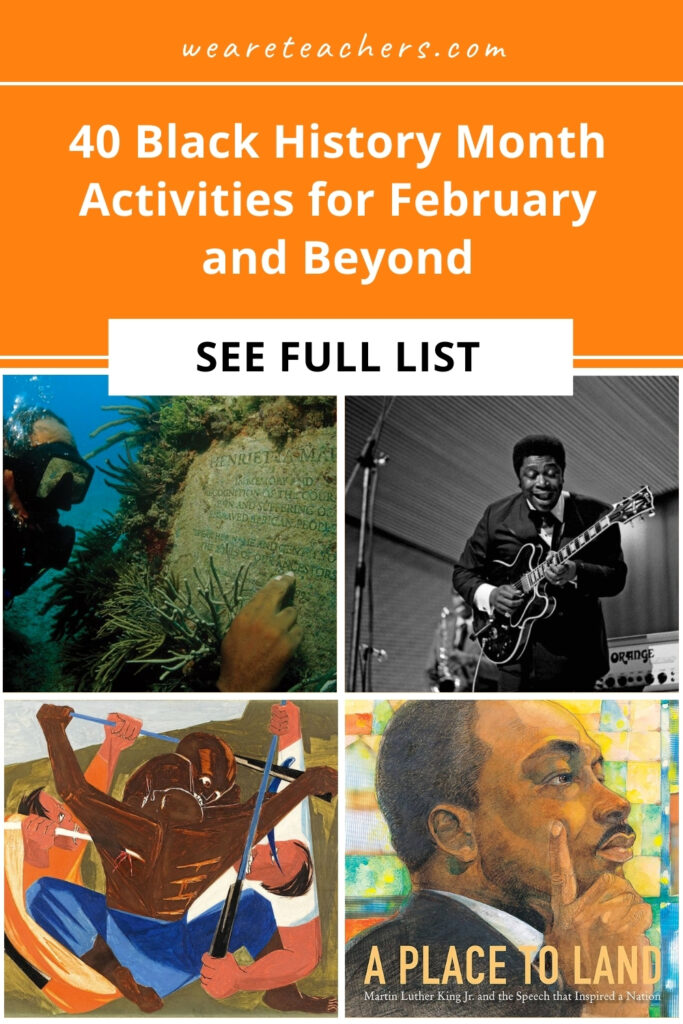
You Might Also Like

25 Fun Activities To Honor Hispanic Heritage Month 2023
Celebrate with virtual visits, traditional cooking, crafts, and more. Continue Reading
Copyright © 2023. All rights reserved. 5335 Gate Parkway, Jacksonville, FL 32256

IMAGES
COMMENTS
African Americans: History and Modernity. Most African Americans are descendants of enslaved people brought from Africa, and the research focuses on the connection between the current state of African Americans concerning their history. We will write. a custom essay specifically for you by our professional experts.
Harlem Renaissance. Harriet Tubman. Historically Black Colleges. History of rock-and-roll. John Brown. Jumping the broom. Manumission papers. Maroon villages in the eighteenth century. Midwifery.
53 Black History Month Writing Prompts. Use these Black History Month writing prompts and ideas in your classroom to spotlight the importance of African-American history during this important month. These prompts are appropriate for all grade levels and can be incorporated into any lesson plan. They could also be used to inspire short stories ...
Black History Writing Prompt #2. Spotlight On: Author James Baldwin. Text Type: Persuasive/Opinion Writing. Background: Tell students that James Baldwin (1924-1987) wrote novels, essays, plays, and short stories that forced readers to confront racism in America. Baldwin lived during a time when our government wrote laws to keep Black and ...
54 Black History Month Writing Prompts. Write about what Black History Month means to you. Write about the importance of recognizing the contributions of black people in history. Write about your favorite black personalities and why they're so important to you. Write about your favorite black character in history and why they inspire you so much.
Black History Month writing prompts. 36. Brainstorm 5 adjectives that you'd use to describe Martin Luther King, Jr. Now write an example of him showcasing each particular trait. 37. Write a "recipe for peace". Share the ingredients, measurements, and directions. 38. Research the history of Martin Luther King, Jr. Day.
43 Black History Month Writing Prompts. The month of February is Black History Month in the United States. This is a time for African-Americans to celebrate their achievements and role within the U.S. Studying Black History is an important part of your education because it provides historical context for the journey of African-Americans while ...
That 400th anniversary is the occasion for a unique collaboration: Four Hundred Souls: A Community History of African America, 1619-2019, edited by historians Ibram X. Kendi and Keisha N. Blain ...
These projects explore Black history in depth and from a variety of angles — connecting history to the present. Sanitation workers prepared to demonstrate on March 28, 1968, as part of a labor ...
Black History Month Essay Topics. Clio has taught education courses at the college level and has a Ph.D. in curriculum and instruction. Black History Month offers an important chance to help ...
These writing prompts are designed to spark curiosity, encourage reflection, and inspire young minds to explore the rich tapestry of African American history. Check out our top list of Black History Month writing prompts for students. This list features excellent writing prompts suitable for Kindergarten, elementary school, and middle school ...
Woodson was the second black American to receive a PhD in history from Harvard—following W.E.B. Du Bois by a few years. To Woodson, the black experience was too important simply to be left to a small group of academics. Woodson believed that his role was to use black history and culture as a weapon in the struggle for racial uplift.
On Sept. 9, 1915, Dr. Woodson formed the Association for the Study of Negro Life and History (ASNLH), an organization to promote the scientific study of Black life and history. (Today, the ...
In this black history month essay, I want to argue that knowing our black history would help America be better stewards of the privileges we've gained. Also, it would create awareness for all people. Say no to plagiarism. ... I believe that there are many interesting topics in history of African Americans, and if the world was taught more ...
Fascinating African American History Topics to Write about. Little Africa: A History of Black Wall Street. Major Events and Figures in African American History Prior to 1877. Language Mindfulness: The N-Word in African American History. Slavery and Its Role in the African American History.
Black history month is the call of many voices saying "Remember. Press on.". Black history month is a light in the darkness that shows a way forward. Black history is about more than a month but this month reminds me to pause and locate myself within history. - Holly Slay FerraroAssociate Professor, Management.
African American research paper topics on the slavery issues in different states, black vote, and street life of black in various cities are often chosen by students for creating essays. African American Movement For An Access To Education in Texas. The Detroit Rioters of 1943. African American Movement For An Access To Education in Manhattan.
Black history is the story of African Americans in the United States and elsewhere. Learn about Black History Month, Black leaders, the Great Migration, the civil rights movement and more.
Black History. The ancient slave history besides the humanitarian aspect is considered a stigma on the so-called civilized society of the West. America's slave population was 33,000 in the 17th century, nearly three million in the 18th century. It later rose up to six million in mid of 18th century.
Inspire your students to explore black history and culture through writing. Present any of these engaging writing prompts in your middle school or high school classroom during Black History Month or beyond. Each activity requires students to inquire about the people, places, events, and issues that have shaped African-American history. Writing a Historical Dialogue Ask your students to imagine ...
Black history in the United States is a rich and varied chronicle of slavery and liberty, oppression and progress, segregation and achievement. Though captive and free Africans were likely present ...
Then, host a living museum right in your classroom. 12. Decorate your classroom door for Black History Month. Turn your classroom door into an educational experience. Check out how these teachers decorated their classroom doors in amazing ways to showcase Black History Month, and review this video with ideas. 13.
Black History Essay. This essay sample was donated by a student to help the academic community. Papers provided by EduBirdie writers usually outdo students' samples. "Treat others the way you want to be treated" (Lee 2), a saying that has been used since sometime after the creation of the bible, and dubbed the "Golden Rule".